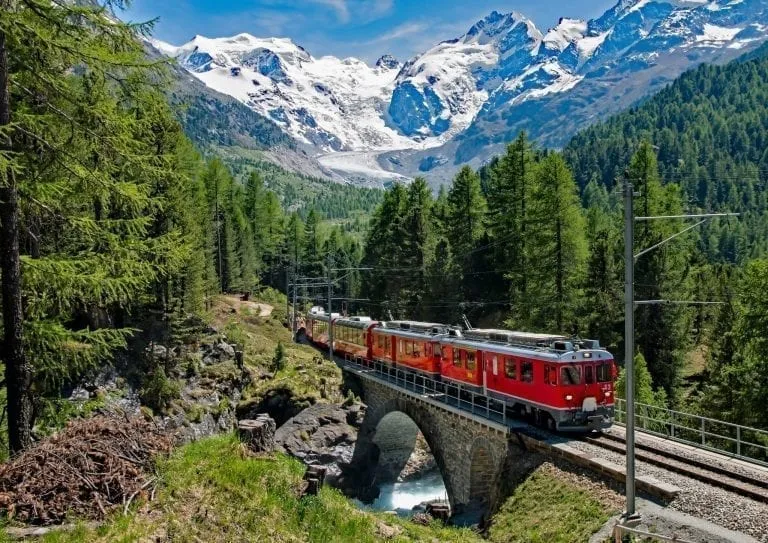

How to Travel Europe By Train: The Ultimate Guide (+ Tips!)
Beautiful views, comfortable train cars, the bustle of busy platforms, and the thrill of a new adventure: there are a lot of good reasons to travel Europe by train!
But, for those of us who grew up in a place where traveling by train isn’t common, the prospect of train travel in Europe can be as intimidating as it is exciting.
Thanks to traveling Europe extensively for years (including with our dog!) and spending more than a year living in Portugal, we’ve had a chance to appreciate countless train rides through and across Europe.
From the mind-boggling efficiency of Swiss trains to overnight train rides through Eastern Europe (Sofia to Istanbul was a particularly memorable ride) to simple jaunts across Italy, we’ve experienced just about every form of train travel in Europe.
And along the way, we amassed a huge number of European train travel tips !
This train travel guide is a culmination of everything we wish we would have known before we started traveling Europe by train , plus why we think it’s worth a try.
Table of Contents
Who is This Guide to Train Travel in Europe For?
Is train travel in europe right for you, different kinds of train travel in europe, different kinds of european train tickets, how to buy train tickets in europe, how to receive your tickets to travel europe by train, how to travel europe by train: step-by-step trip guide, useful tips for train travel in europe.

Some links in this post may be affiliate links. If you make a purchase through one of these links, we may earn a small commission at no extra cost to you. Please see our disclosure policy for more detail.
If you’re planning an epic, multi-destination trip and are hoping to travel by train through Europe but aren’t already comfortable with train travel on the continent, then this guide to traveling by train across Europe is for you!
We grew up in suburbs in the USA, and until we started traveling internationally in adulthood (4+ years of full-time travel , more than a year living in Lisbon, many trips across Europe, and counting!), we had virtually never taken a train.
W hile that’s certainly not the case for many people around the world, it is for thousands of our readers who grew up in similar environments to us!
If you’re excited to travel Europe by train but are learning the whole process from scratch like we once did, you’re exactly who we wrote this guide for.
While train travel in Europe isn’t exactly the same everywhere–with over 50 countries and therefore over 50 train systems, there are plenty of quirks based on location–this guide to train travel in Europe will give a solid overview that will help you start your travels with confidence.

Planes, trains, buses, rental cars, river cruises–with plenty of transportation options for getting around Europe, how do you know if train travel is for you?
In this section, we’ll break down the pros and cons of traveling Europe by train to help you decide if it’s the right transportation option for you.
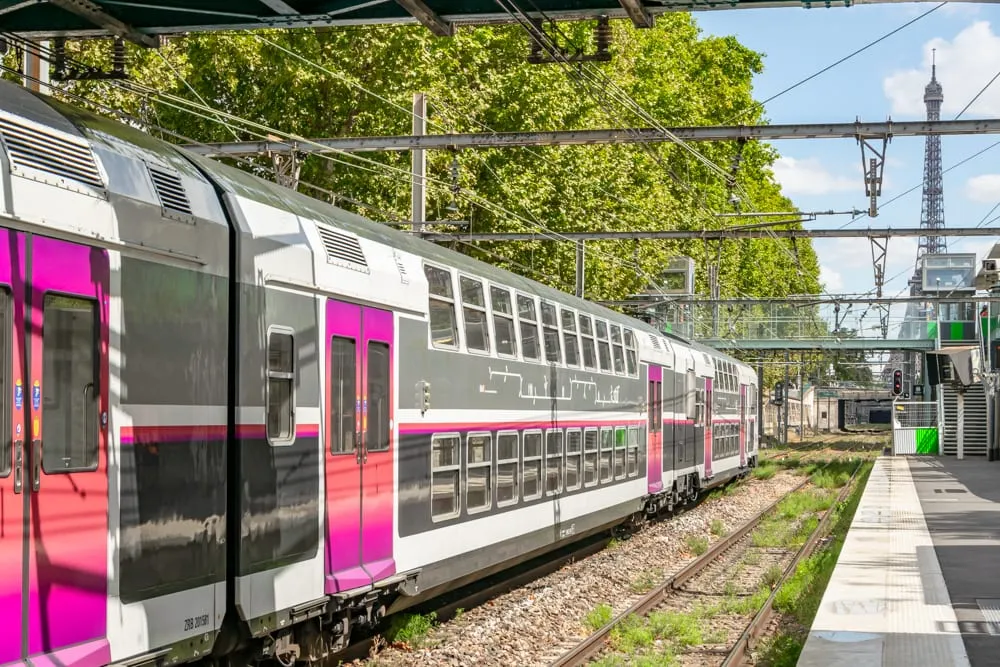
Pros of Traveling Europe By Train
Taking a train across europe is a bucket-list-worthy experience..
For most of us who hail from other places, this is the number one reason to book that first train in Europe, right?
Traveling by train through Europe tops plenty of bucket lists around the world, and for good reason: it’s an incredibly fun way to explore the continent.
On some routes, the train ride is a travel destination in its own right–and even when it’s not, it’s a cultural experience to remember.
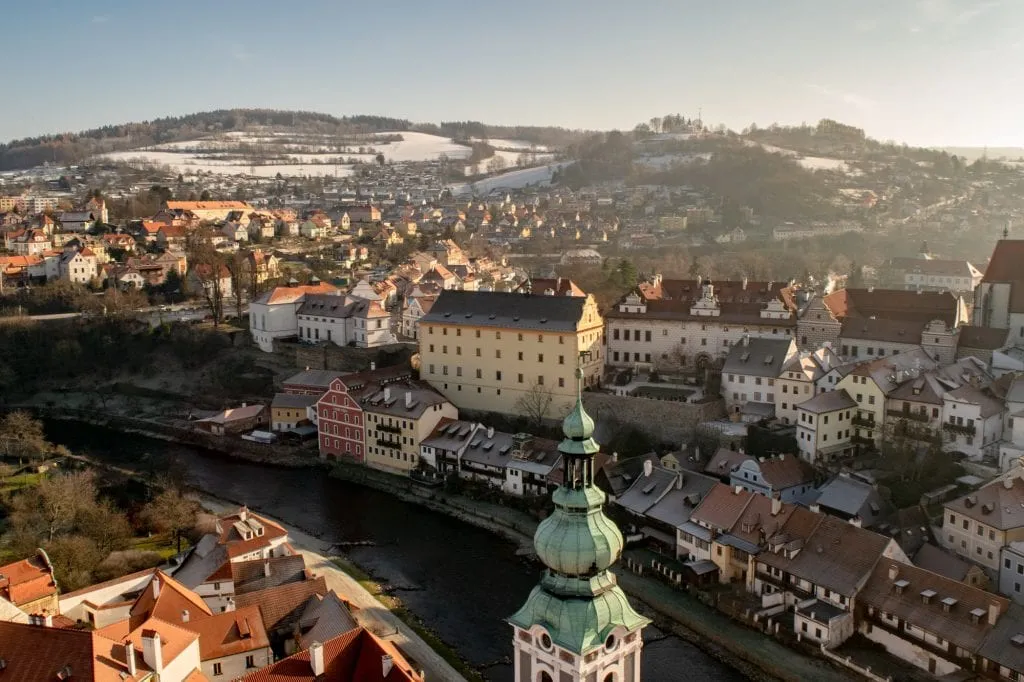
… and can allow for spontaneity.
For some routes, especially those with fixed ticket prices (more on that in another section of this Europe train guide), traveling by train allows you to be spontaneous, coming and going from destinations with much less foresight than is required when taking planes.
Depending on where you are, it can be very scenic.
If you have daydreamed about staring out train windows in Europe as you watch mountains, streams, seas, villages, castles, and vineyards go by, let me tell you… that’s pretty much exactly what it’s like a lot of the time!
Obviously not everywhere on the continent is scenic, but if you travel Europe by train, you’re likely to experience some truly incredible views along the way.
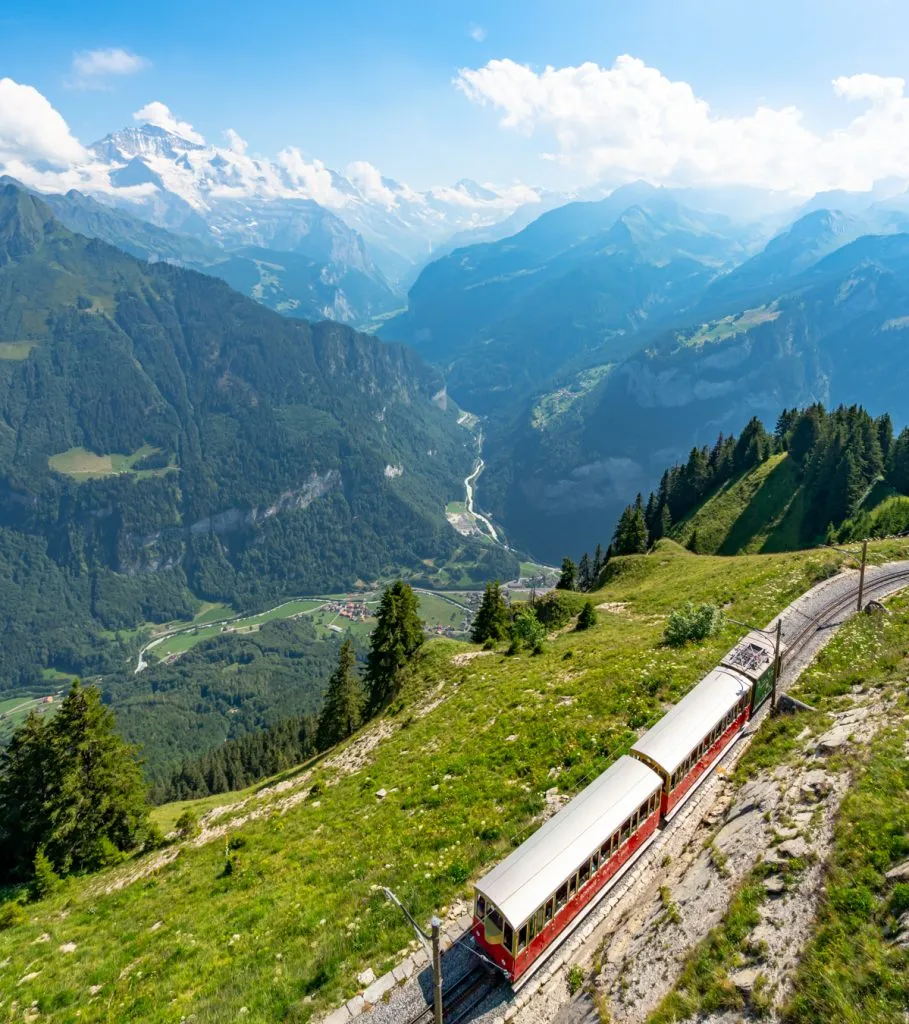
Most train stations are in the center of the city.
In our opinion, this is one of the biggest benefits to train travel in Europe!
W hile most airports (especially airports servicing budget flights) are located far outside the city centers, train stations are generally located right in the heart of the action.
Step outside the train station in Cologne, for example, and you’ll be looking at the cathedral.
In Florence , you’ll arrive less than a 10-minute walk from the Duomo .
In some places, like in Milan, Antwerp, Porto , and Paris’ Gare de Lyon, the opulent central train station is practically a tourist destination in its own right, so you’ll be exploring the minute you arrive, rather than spending hours getting into the city center from the airport.
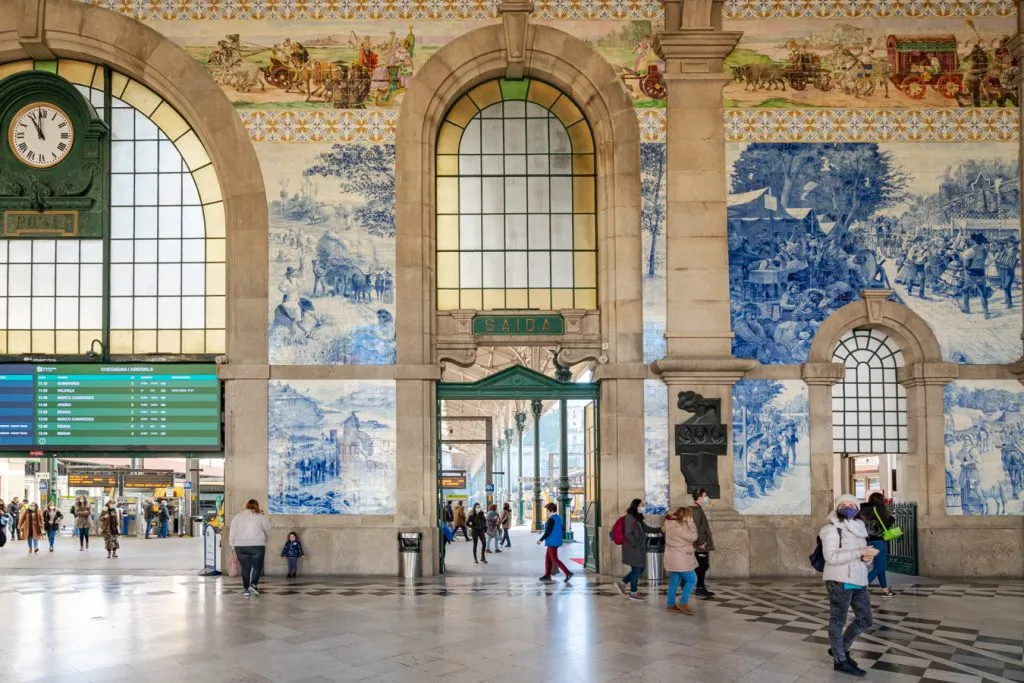
No luggage limitations!
No one is going to weigh your luggage or make sure it is only a certain size on a train, so you can bring whatever you like (sports equipment and generally pets included).
Train travel in Europe is generally far more comfortable than flying.
At the end of the day, traveling Europe by train is immensely more comfortable than flying.
There’s less hassle, more comfortable seats, more ease of moving around, often better views, and more control over your environment.
If all else (price, time, etc.) were equal, we’d personally choose to take a train across Europe over a plane any day of the week.
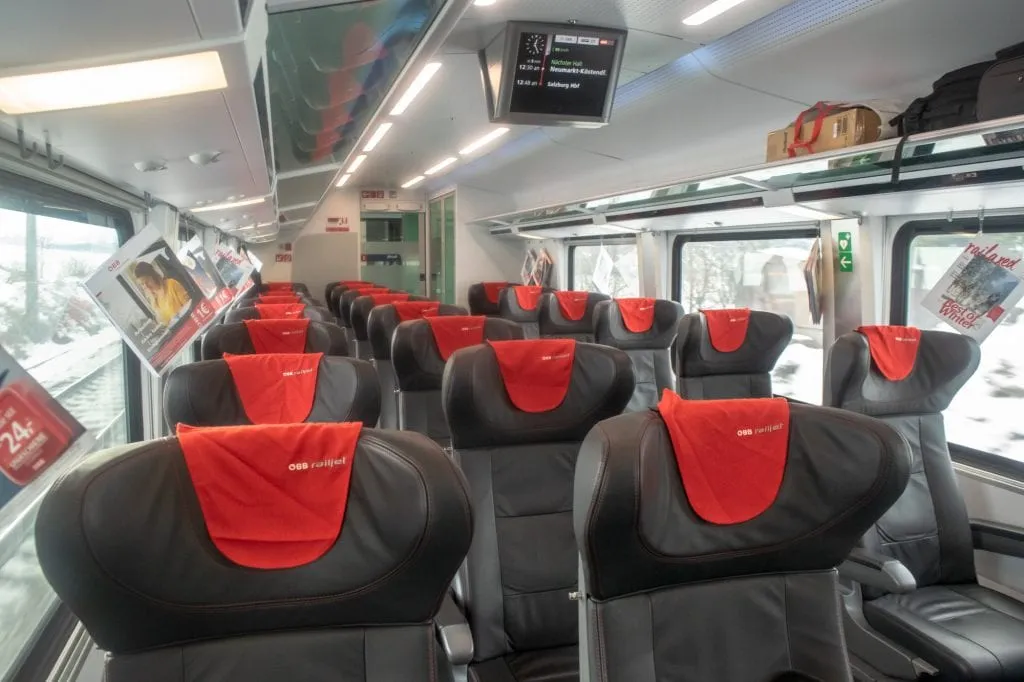
Cons of Traveling by Train Through Europe
It can get pricey..
When you first set out to travel Europe by train, you may assume that it is more affordable than flying–but thanks to a combination of several factors, including incredibly inexpensive budget flight carriers in Europe, that’s actually not the case.
Typically, it’s cheaper to hop on a budget flight between two major European cities than take a train.
The severity of the difference, though, can vary dramatically, and there are lots of tips you can apply to your train travel in Europe to mitigate the cost, which we’ll cover in this blog post.
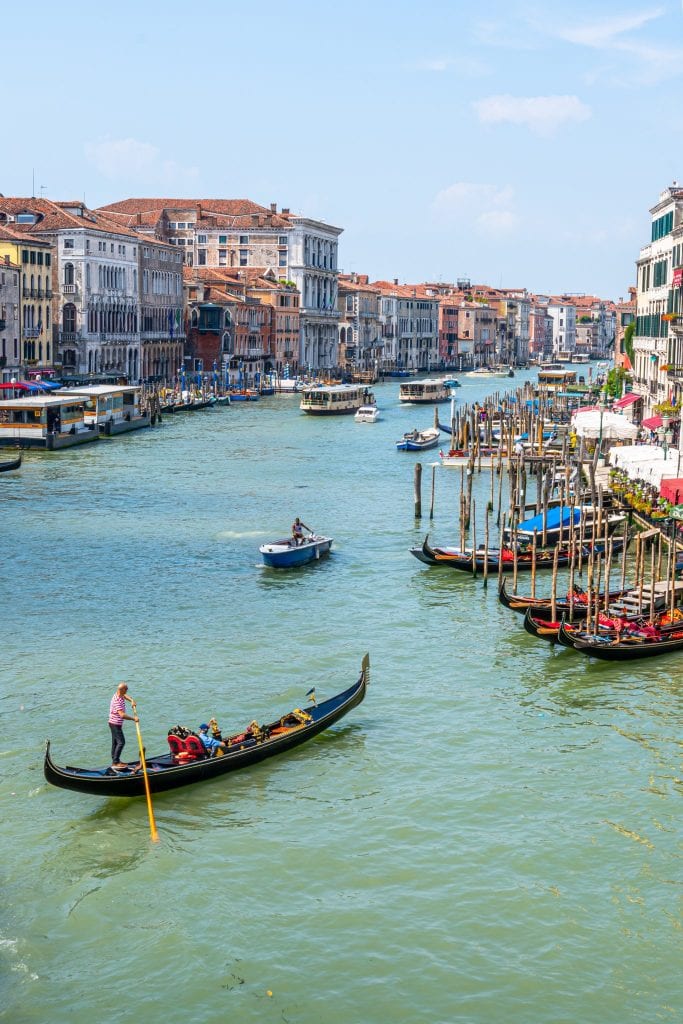
If you’re traveling long distances, train routes can take a prohibitively long time.
For example, when traveling from Paris to Venice , a route we’ve traveled by train, the train can easily take upwards of 10 hours, while the flight time is under 2 hours.
Now, that doesn’t account for getting to and from the airport, checking luggage, or going through security, all of which increase the amount of time a flight actually takes, but it’s still a large difference.
Train travel in Europe isn’t available everywhere.
As you move further into eastern Europe and the Balkans, train travel becomes much less prevalent (even popular Dubrovnik isn’t connected to the rest of Europe by rail).
A nd, when it does exist, can take longer and be less comfortable than planes or even buses depending on the destination.
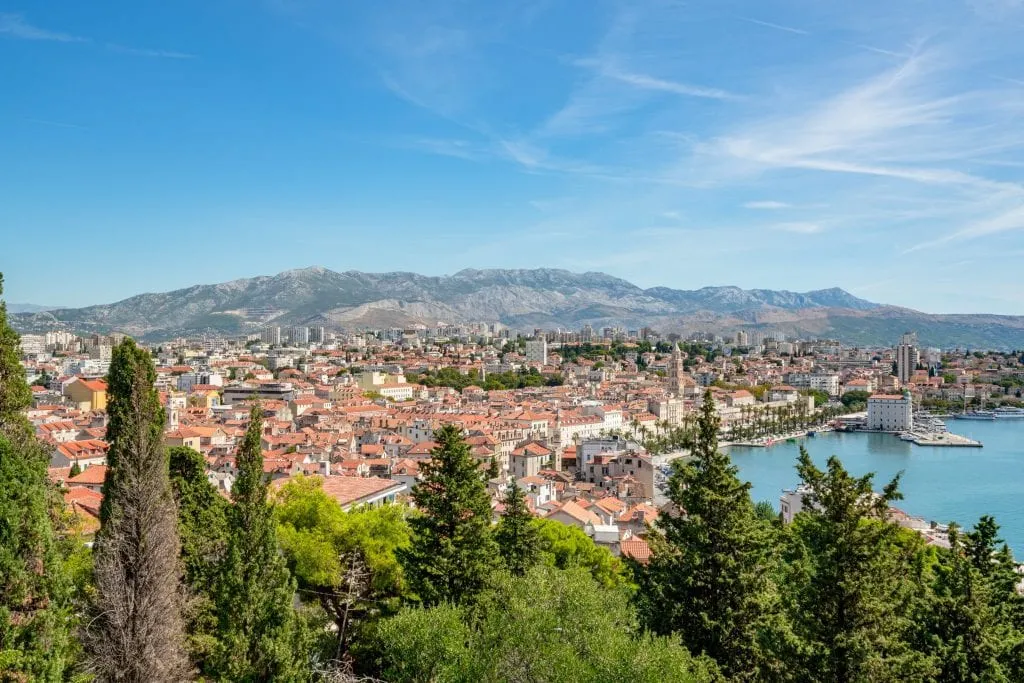
Rail strikes can derail plans to travel Europe by train.
Generally, these are planned in advance, so you’ll know what you’re getting into before arriving, but they can be a bit of a hassle.
W e’ve had trips to both Italy and France impacted by rail strikes in the past.
If you have mobility issues, train travel can be difficult.
Lifting and storing luggage, navigating small staircases and bathrooms, and making your way through crowded train stations can be difficult if you struggle with mobility, so keep that in mind when deciding whether to travel Europe by train.
This is especially true with a short connection–we once had to literally sprint through the station to make a connecting train on time in Germany!

Traveling Europe by train can be a bit intimidating.
This isn’t a con, exactly, but there’s no doubt that the confusion surrounding train travel in Europe can prevent new visitors to the continent from trying it out, especially if they’re concerned about language barriers or navigating multiple countries.
If that’s your only hesitation, though, we urge you to set those concerns aside.
T raveling Europe by train is an incredibly rewarding experience, and well worth stepping a bit outside of your comfort zone for !

When discussing train travel in Europe, it’s important to remember that not all trains are created equal, or exist for the same purpose.
Here are a few general train categories to keep in mind as you plan your trip.
Metro/Intra-City Transport
Metros, aka subways (though some do run above ground) are public transportation used by a certain city.
While they are technically trains, metros are their own category entirely and this Europe train guide doesn’t cover them any further.
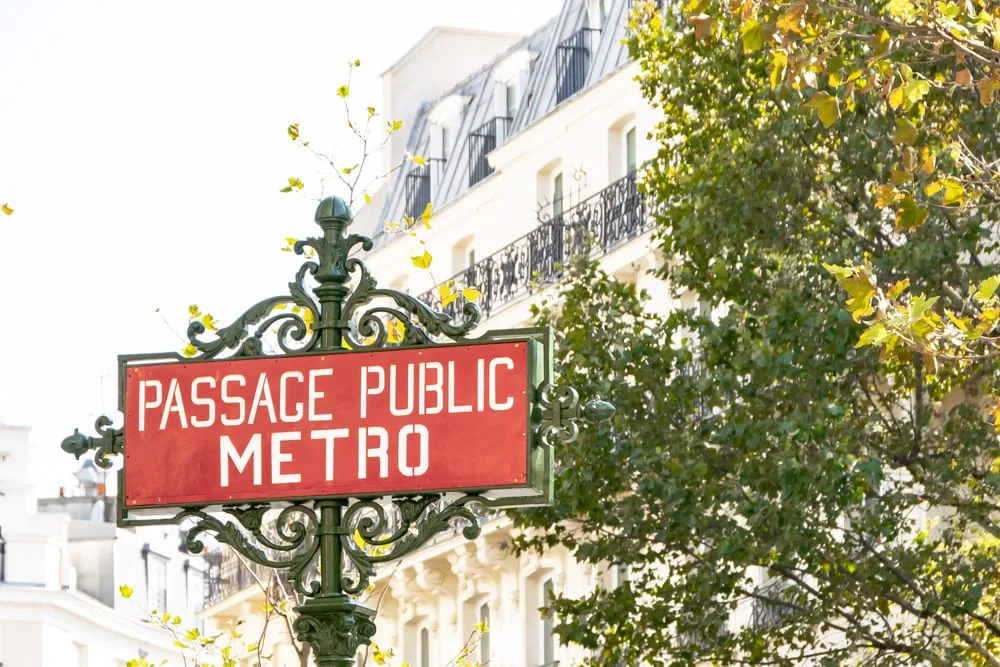
Commuter Rails/Regional Trains
Commuter rails and regional trains aren’t exactly synonymous, but for the purposes of this guide, they’re similar.
T hese are slower-moving trains used to connect surrounding villages to a major city (for example, Versailles to Paris) or trains that go within a certain country or region (for example, from Siena to Florence in Tuscany).
Most of the tips in this guide to train travel in Europe apply to these trains, but they sometimes have fewer amenities (like snacks/drinks available for purchase, for example) than high-speed or long-distance trains.
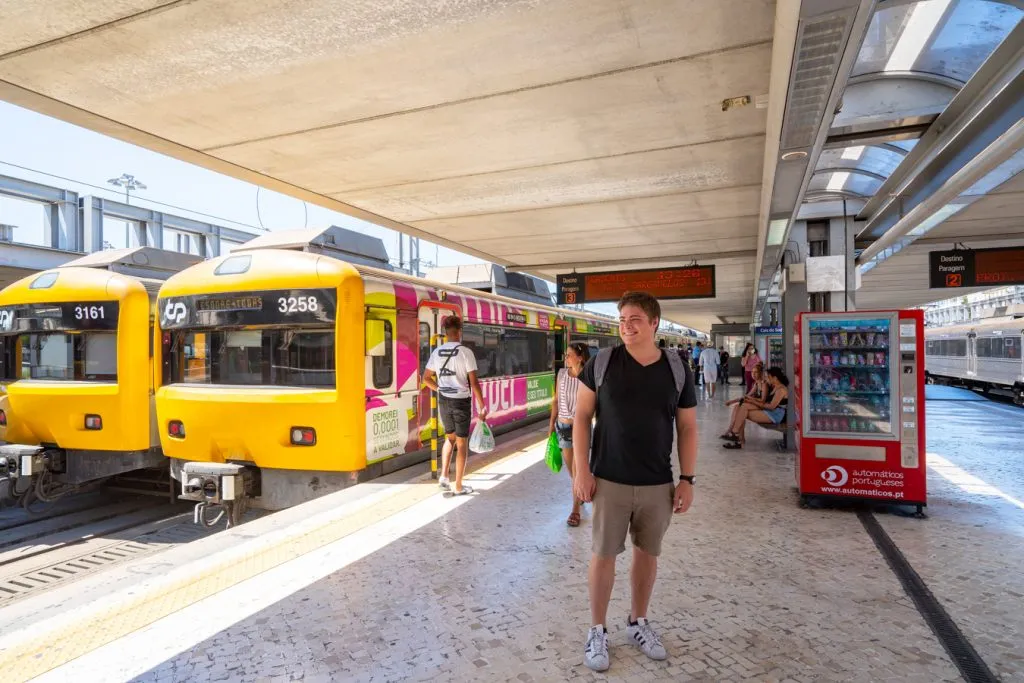
High-Speed Trains/Long-Distance Trains
These are trains that cover long distances within a country (for example, from Florence to Venice ) or cross borders (for example, from Paris to Amsterdam).
Since each country runs its own train system (often with a national carrier option and private carrier(s) mixed in), booking a ticket between countries may mean changing train companies at a city near the border.
For example, when we traveled from Paris to Venice by train, we took a French SNCF train from Paris to Turin, Italy, and then boarded an Italian Italo-branded train to travel from Turin to Venice–all booked on the same ticket.
These high-speed and long-distance journeys are the primary focus of this guide on how to travel Europe by train.

Tourist Trains
These are trains that, while technically public transportation, are typically used as tourist attractions for sightseeing purposes, and are priced accordingly.
Examples include the Glacier Express or Schniyge Platte in Switzerland, or the Jacobite Steam Train (aka Harry Potter train) in Scotland.
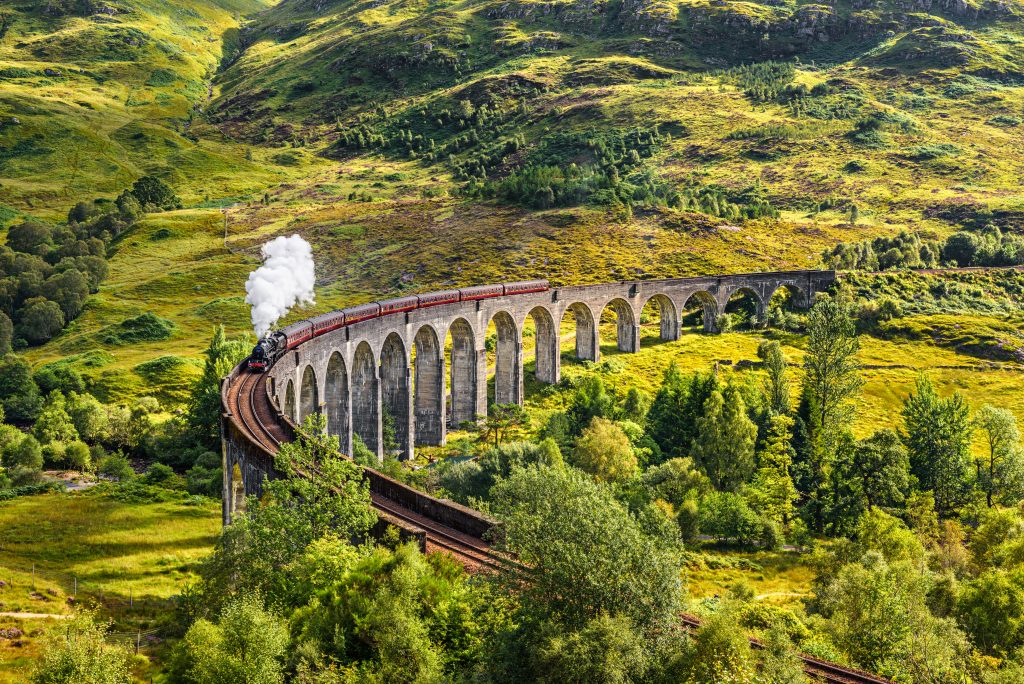
Sleeper Trains
Technically, sleeper trains aren’t their own category–they’re just long-distance trains with sleeper carriages in them–but they’re worth calling out separately in this guide to train travel in Europe because they’re particularly interesting for travelers.
Not only are sleeper trains a great way to save on hotel costs for a night of your trip, but they can also be quite the travel adventure in their own right!

Before you start looking into buying train tickets, there are a couple of terms to be familiar with:
First vs. Second Class Tickets
When traveling via train in Europe, you’ll generally have a choice between first and second-class tickets.
Buying a first-class ticket generally comes with slightly larger seats, sometimes the ability to reserve your exact seats when you can’t in second class (both of those facts vary based on the company you travel with), and possibly a small snack like a water bottle and a pack of cookies.
In our earlier travel years, we never used to consider these perks worth the money–but I’ll admit, as we started traveling with more luggage and most importantly, our dog Ranger, we started splurging on first-class more frequently.
The extra space can definitely come in handy if you have more than a suitcase with you!
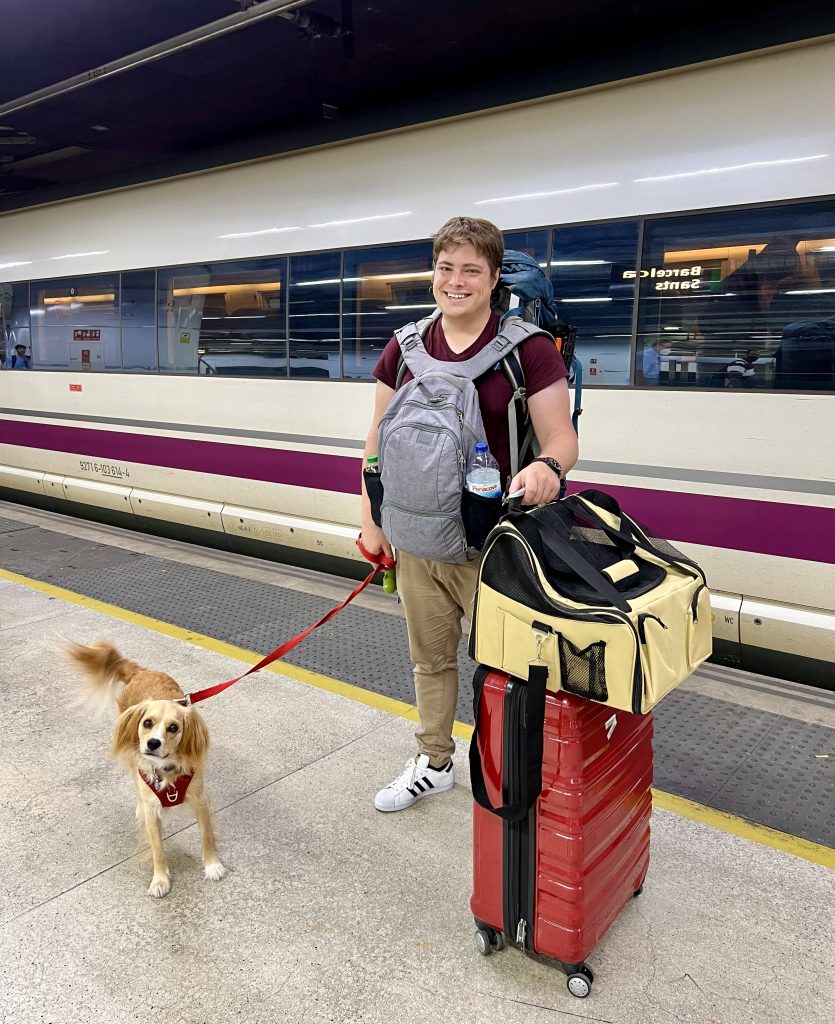
Variable vs. Fixed Price Tickets
Variable-price tickets, as the name implies, tend to increase in price the closer your date of travel gets.
T hese tickets are generally used for high-speed trains and long-distance journeys and will be the most common form of ticket you see when traveling between countries by train in Europe.
Fixed-price tickets are more typical for regional (aka “slow”) trains and can be booked at any time–so you can just show up at the station and buy them from a kiosk without issue.
For example: if you travel from Florence to Bologna on a high-speed train, it will take around 30 minutes and that ticket has a variable price.
If you travel on the regional train that takes around an hour, the price is fixed and you can book it at any time.
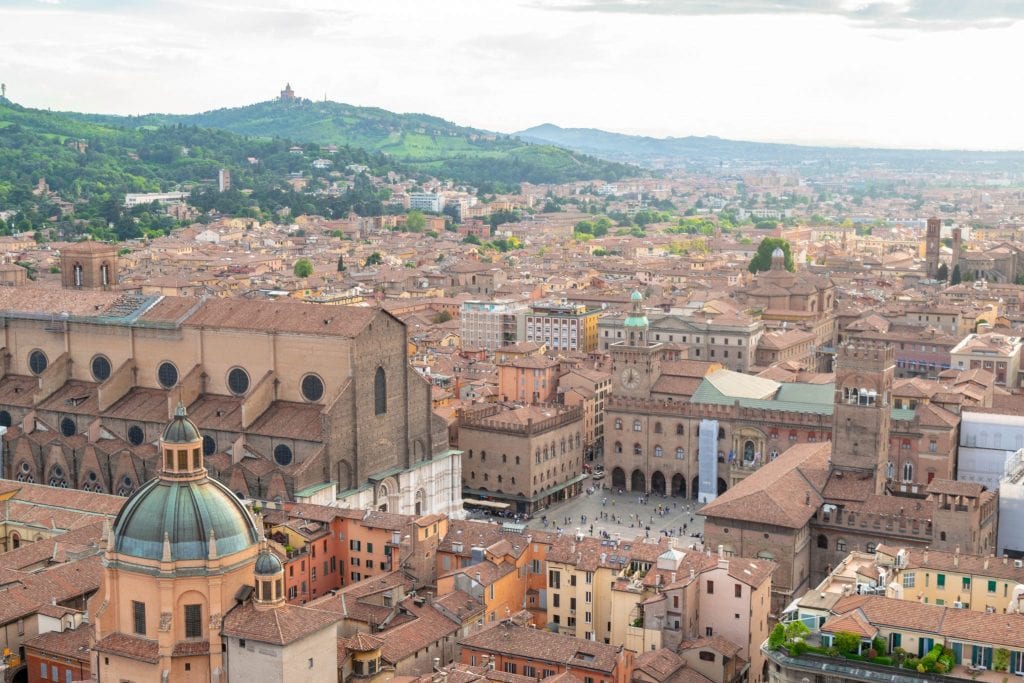
When you travel Europe by train, one of the first things you’ll need to get the hang of is exactly how and where to buy European train tickets–and you have plenty of options!
Here are different ways to obtain train tickets in Europe.
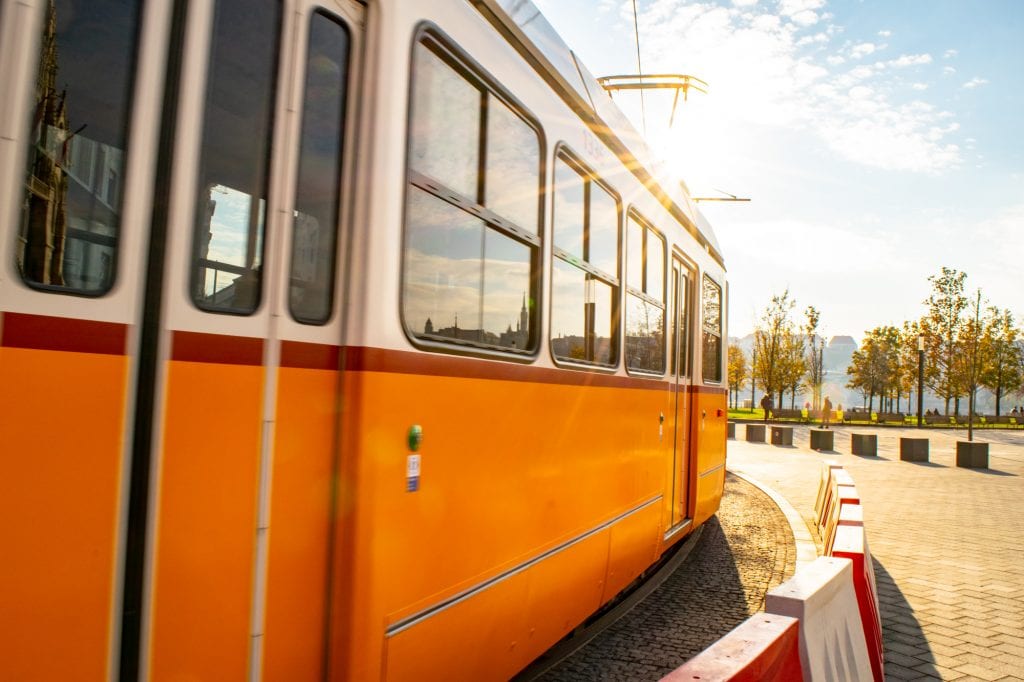
Online (Via a Third-Party Site)
Third-party booking sites are incredibly useful when preparing to travel Europe by train, especially when you’re planning to travel between countries.
We use and recommend Omio , which will allow you to easily compare prices between different routes, show you the most efficient path, and allow you to book trains across Europe with no concerns about language barriers, iffy online translations of national websites, or issues with payment (some company websites struggle to process foreign credit cards).
Omio is a ticket aggregate, and searches multiple companies and routes at once, which makes it very handy for checking train timetables and possible routes as well as for booking tickets!
Search train routes and tickets prices in Europe today!
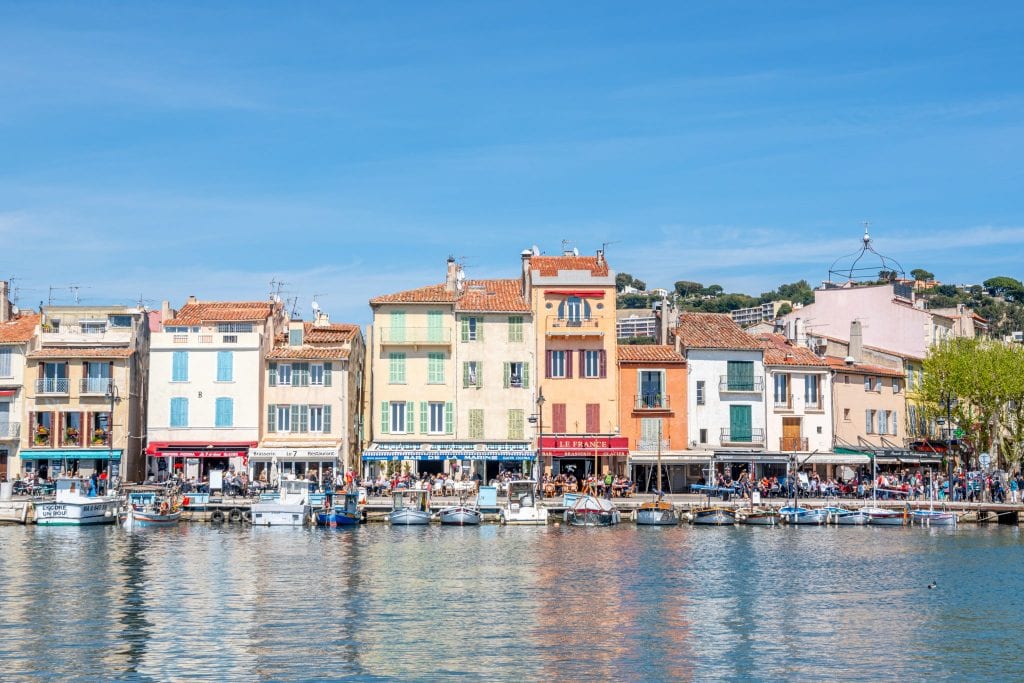
Online (Via the Company Directly)
Alternatively, if you’re looking for the best possible deal, you can book tickets online through direct websites for most countries in Europe.
For example, here are the national train company websites for Italy , France , and Germany .
We tend to book directly whenever we’re traveling domestically in a place we’re very familiar with, like Italy.

At the Train Station
If you’re traveling a short distance on a regional or commuter rail (like to take a day trip, for example), you can also buy tickets directly at the train station.
If you’re buying train tickets in person, we recommend using the kiosks available whenever possible.
Not only do they tend to have language options that make things much easier, but they also tend to take a fraction of the time of waiting in line to be helped by a person directly.

With a Train Pass
The final option for booking tickets to travel Europe by train is to do it in one fell swoop with a Eurail pass (for non-European residents) or Interrail pass (essentially the same thing, but for European residents).
Essentially, a Eurail pass will allow you to buy a certain number of train rides (or an unlimited number) in advance, allowing you to be more spontaneous in your travels.
However, there are limitations–for example, some routes still require advance reservations and charge additional fees.
G enerally speaking, the average user will end up spending more on train travel in Europe with a pass than without one.
There are cases where a train pass makes sense, though, so if you’re planning lots of European train travel, especially in Western and parts of Central Europe , be sure to run the numbers to see if a European train pass is right for you!
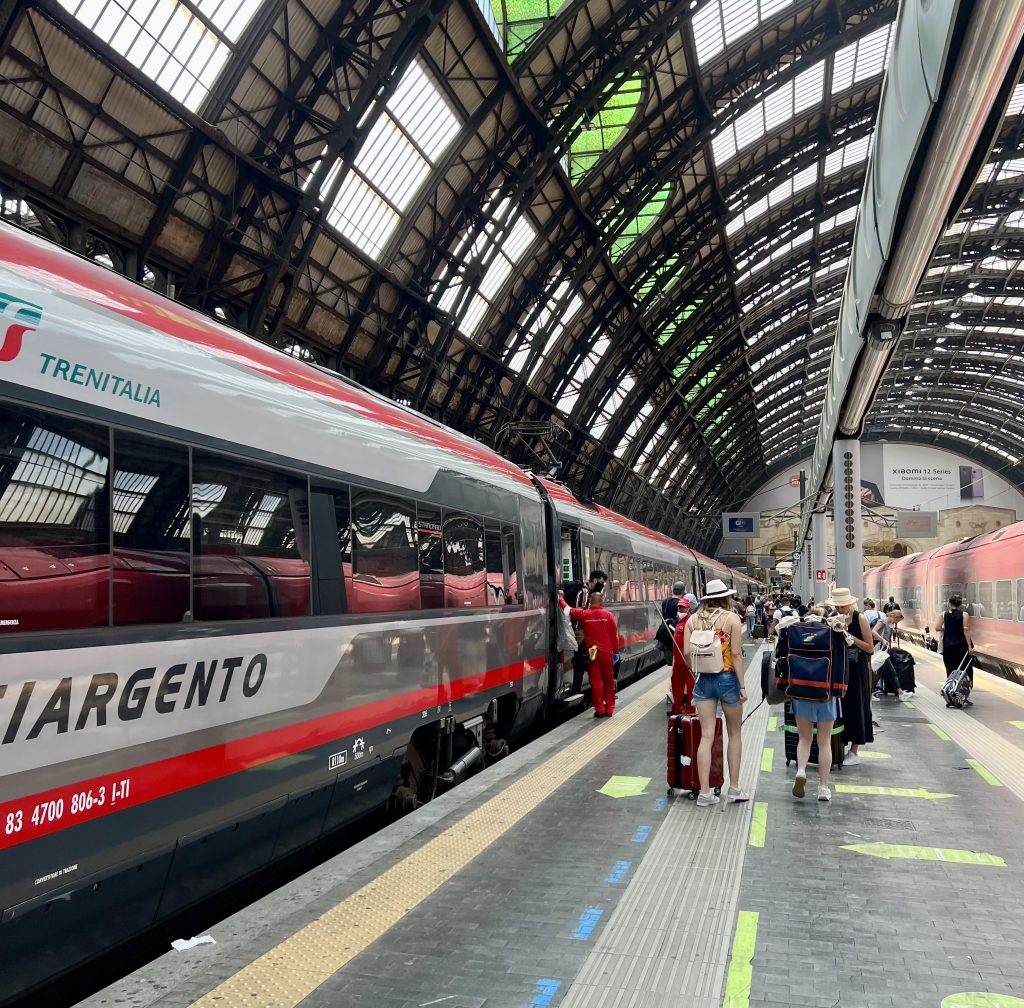
Once you buy your tickets, the next step is to actually receive them!
Here are the three main options.
Most European train tickets these days can be received online and downloaded to your phone.
When available, this is by far the easiest and quickest way to receive your tickets.
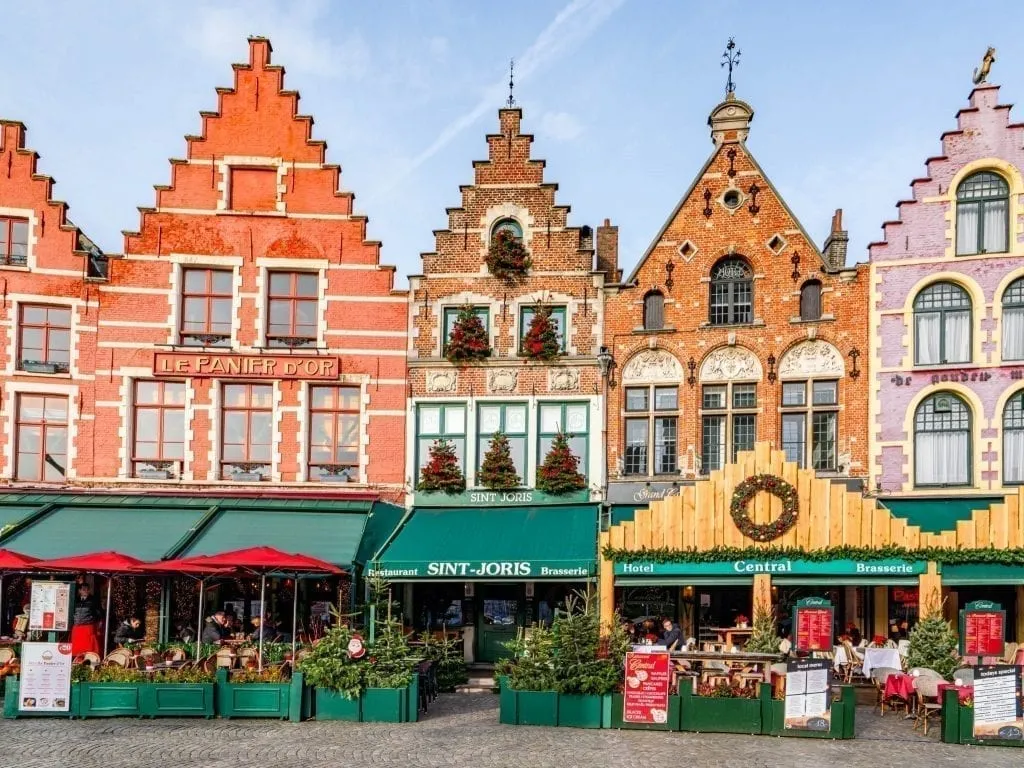
At the Station
You can also choose to receive your (paper) tickets at the station you’re departing from, either by purchasing them there as mentioned above, or by picking up tickets you bought online.
In most cases, there’s no real reason to pick up paper tickets you bought online as opposed to simply downloading them, but most countries do still have the option.

If you book tickets to travel Europe by train well in advance of your trip, many countries do also have a home delivery option where they can be mailed to you before you travel.
We took advantage of this for our very first multi-country trip to Europe and had our train tickets for our overnight route from Krakow to Budapest mailed to our then-home in San Antonio.
Honestly, it was complete overkill, even as the novice travelers we were then, and we don’t necessarily recommend doing this–but some places do have the option available.
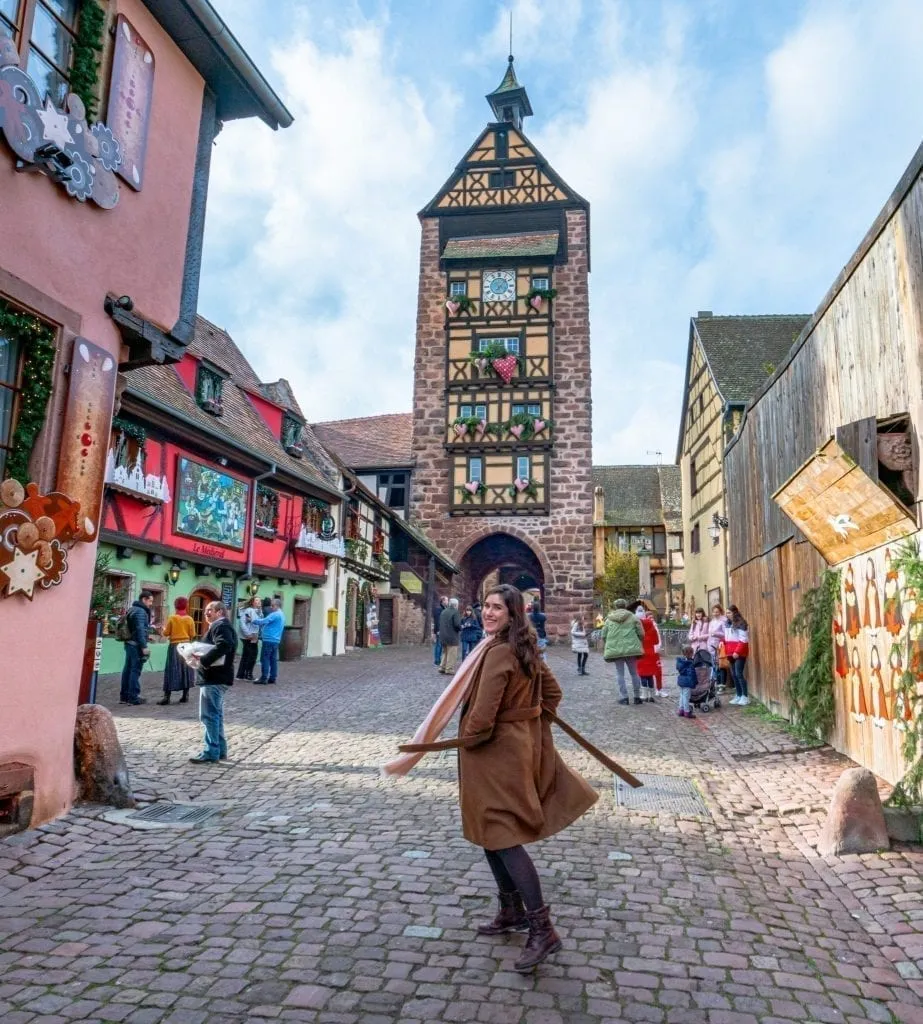
If you’re confused, concerned, or just slightly intimidated by train travel in Europe but are ready to book your first journey, this section is for you!
Follow these instructions step-by-step, and you’ll travel Europe by train with ease.
Book your ticket.
Generally, for long or inter-country journeys, booking online is the easiest option as we outlined above.
We use and recommend Omio for booking train tickets in Europe.
Shop train tickets across Europe today!
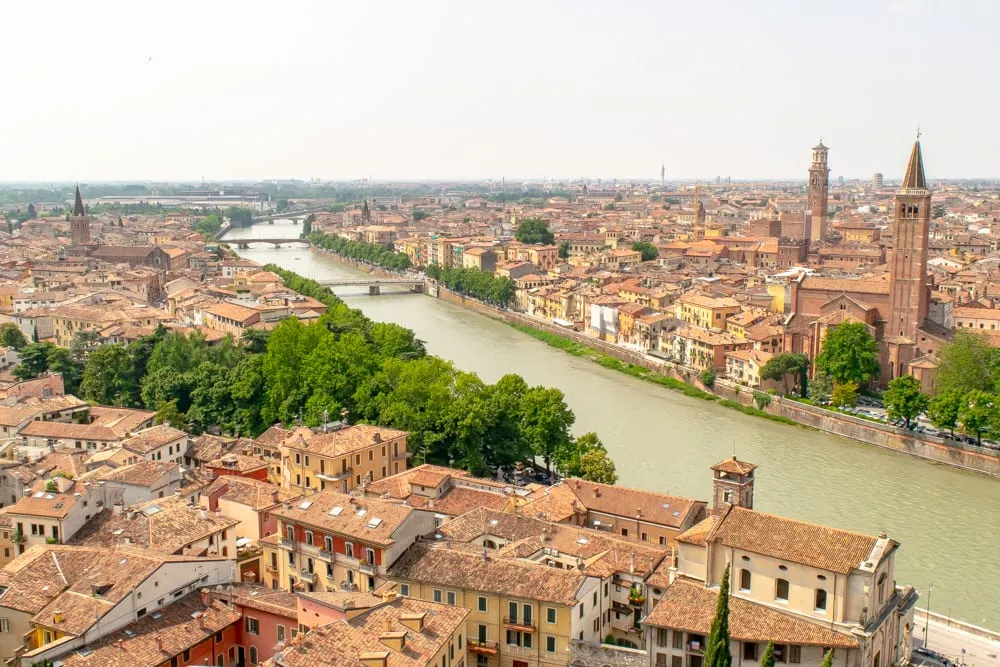
Make sure your ticket is in hand.
This can mean downloaded onto your phone or printed onto a piece of paper in your hand.
E ither option works in most places, but whichever you choose, make sure you have your ticket handy when you board.
Head to the (correct) train station.
Most major European cities are home to more than one train station, so be sure to double and triple-check that you’re going to the right one before you set off.
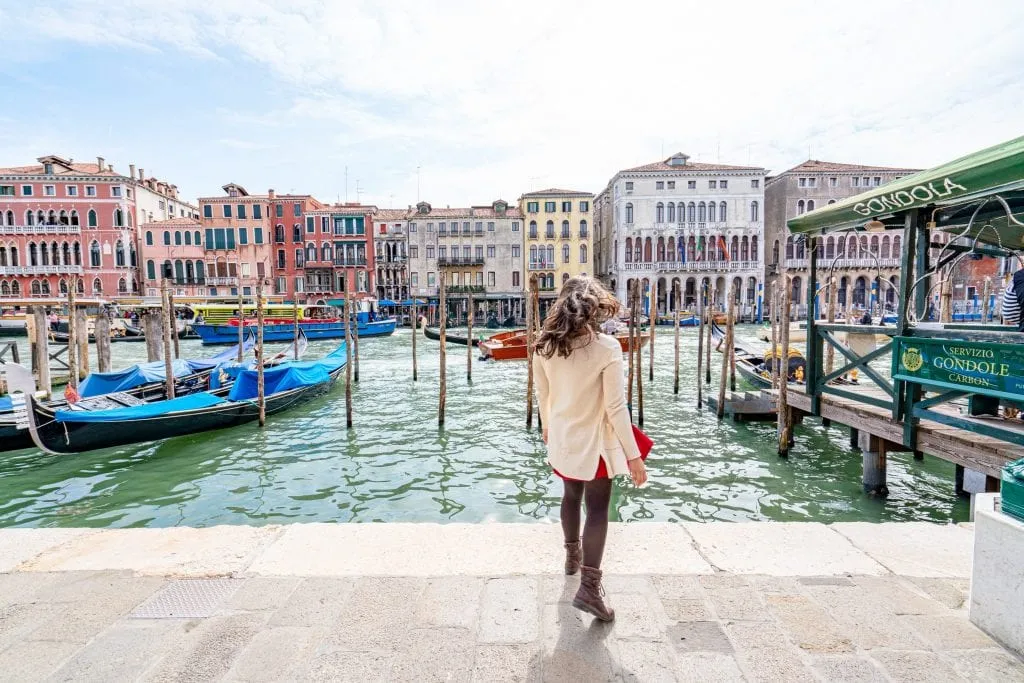
Find your platform.
Much like in an airport, your first step to finding your train platform will be to check the (often large, sometimes confusing) boards bearing destinations and times.
It’s best to search for your train based on a combination of the train number, company, and departing time– not the destination.
If your train is continuing past your stop, for example, searching by destination can get very confusing, very quickly.
European trains (and Europe in general) also use the 24-hour clock (so 3:00 PM will be displayed as 15:00, etc), so keep that in mind when looking for your train on the departures board.
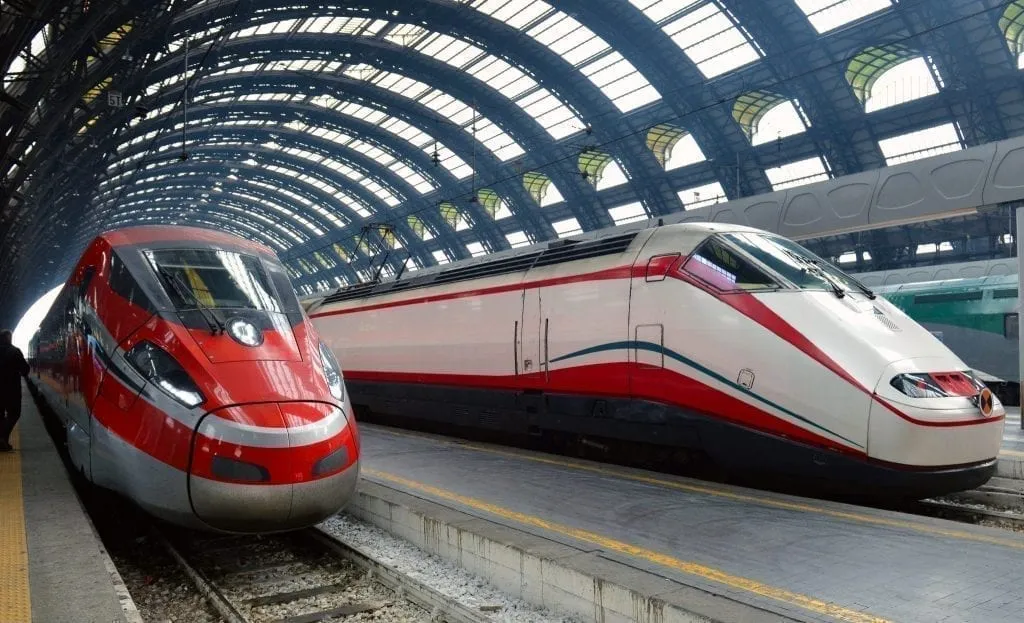
Validate your ticket.
If you have a paper ticket, you’ll need to validate it before you board.
T he kiosks to validate your ticket are generally placed just before you reach the platform, but can sometimes be easy to miss if you’re not looking for them.
(As far as we’re concerned, this hassle is another point in favor of online/downloaded tickets.)
If applicable, find your train car and seat number.
If your train has reserved seats, you’ll need to find the exact train car number and seat number to sit in.
T his is most common on long-distance, high-speed trains.
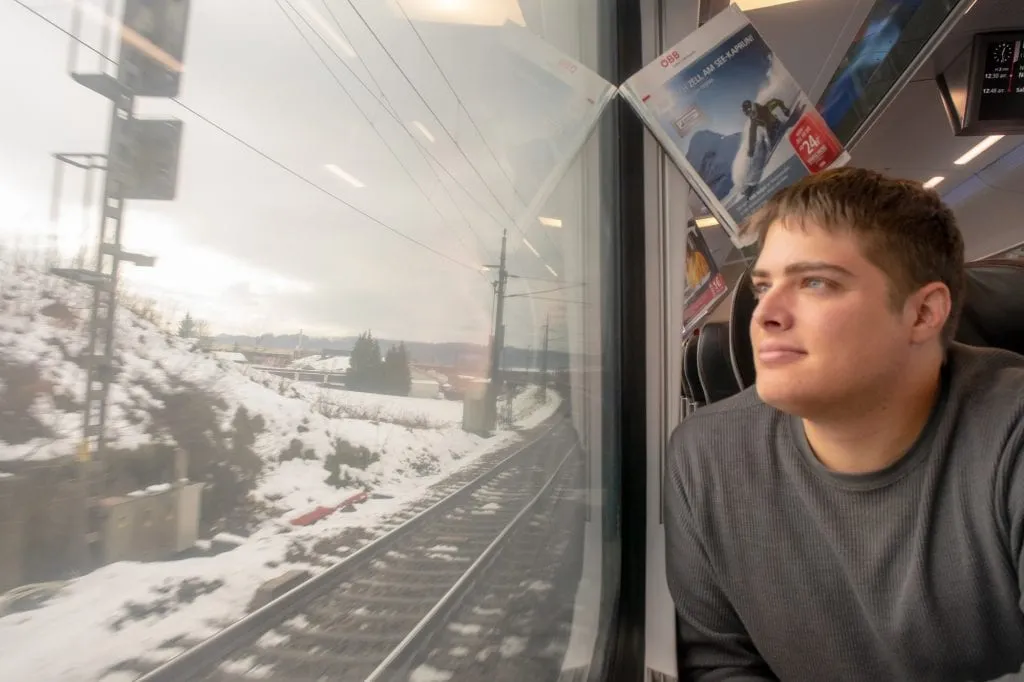
… Or just look for the appropriate class.
If your train has open seating, the only seating concerns will be whether you sit in the 1st or 2nd class.
The “1” or “2” denoting whether it’s a first or second-class train car is generally marked obviously on the side of the train, near or on the door itself, so it’s fairly easy to make sure you’re in the correct place.
Stow your luggage.
In some trains, this will mean storing your luggage in the racks provided at the ends of each train car, in others, it will mean in the racks above the seats, and in still others, there are even places to store bags between the seats.
Keep an eye on what others are doing, but keep in mind that as long as your luggage isn’t in anyone else’s way, there’s generally some flexibility to the process.

Settle in and enjoy the views.
Once you’ve found your seat and stored your luggage, it’s finally time for the best part of train travel in Europe: kicking back and enjoying watching the world go by.
No matter how many times we ride trains through Europe, we never stop getting a little thrill during this part of the process!
Keep your ticket handy for when the conductor comes by.
At some point, as you travel Europe by train–and it could be 5 minutes into your ride, 5 hours into your ride, or both–a conductor will come by to check your ticket.
Be sure to have your ticket in a convenient place so that you’re ready when this happens!
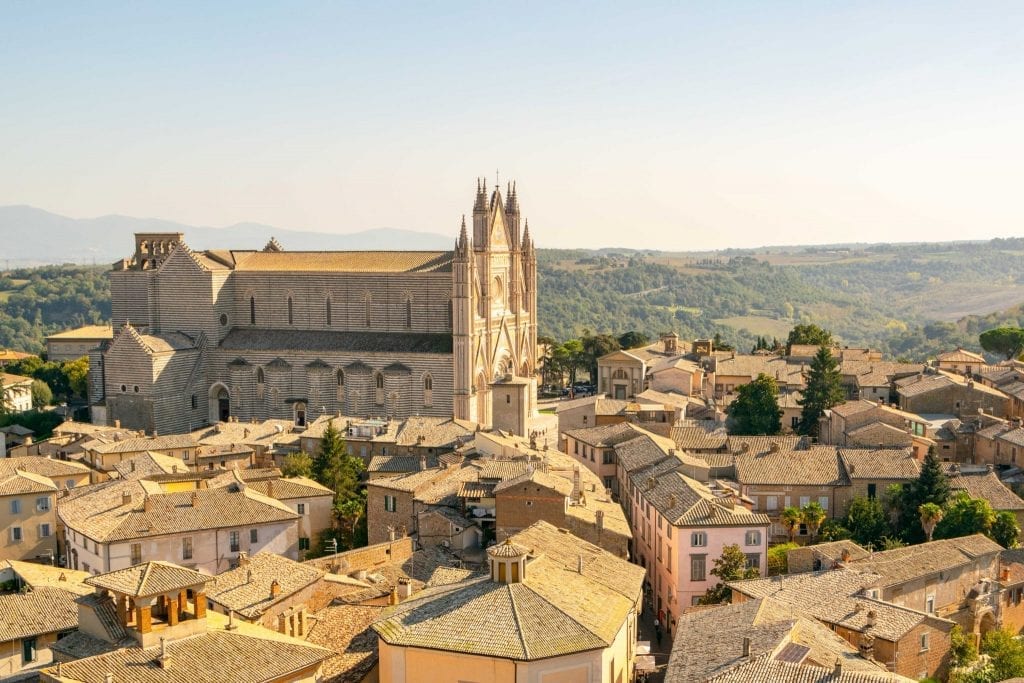
Listen carefully as you get close to your destination.
As you begin to get close to your destination, it’s time to pay very close attention to the announcements.
Many European cities have train stations that sound very similar to each other, especially to those not familiar with them (for example Roma Tiburtina and Roma Termini), and you’ll want to be certain to exit the train at the correct stop.
O therwise, you might accidentally find yourself deep in the suburbs instead of in the center of the city!
In many places, especially along routes popular with tourists, arrival announcements for each station will be repeated in English, but that’s not a guarantee.

Exit the train quickly and smoothly.
When you reach your stop, be ready to exit immediately–that means luggage in hand and waiting at the end of the train car to exit.
You’ll generally see people start to queue up a few minutes before arrival.
The train stops long enough for everyone to exit comfortably, so you don’t need to push past other people or even hurry if you’re prepared.
However, if you wait until the train stops before even getting your luggage together, well–if your station isn’t the final stop, you might find the train moves on before you have time to get off.
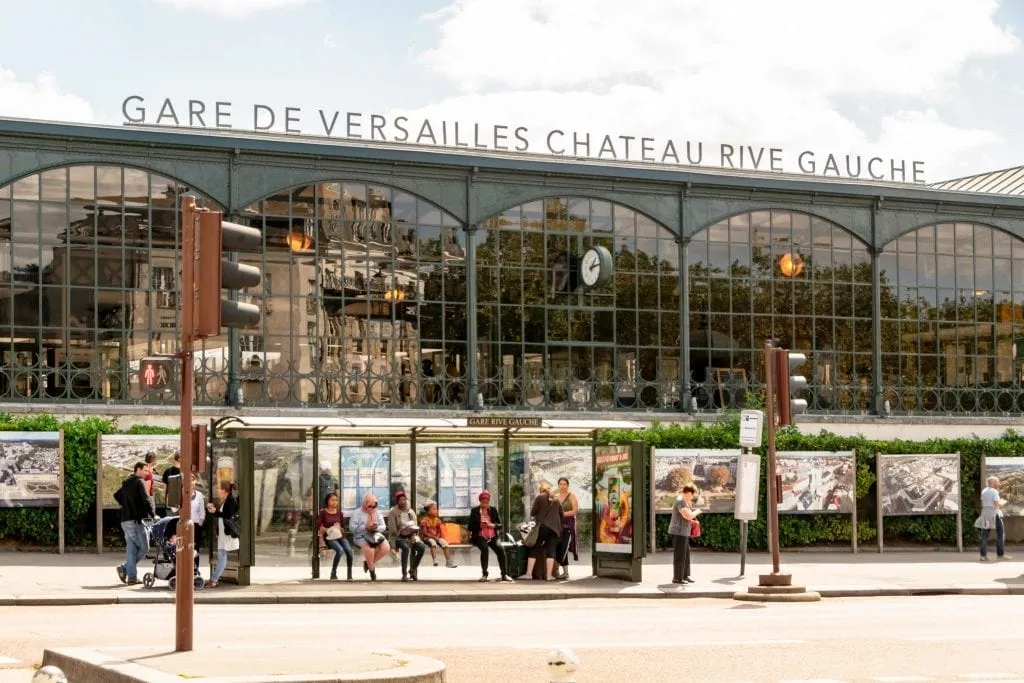
If you have your heart set on traveling Europe by train, plan ahead.
As you plan your Europe itinerary , you’ll likely find that some destinations are better suited for traveling Europe by train than others, and it definitely pays to know which destinations require a train, plane, or bus before arriving in Europe.
Train travel in Europe is generally best suited for certain Western and Central European countries–the further you move into the Balkans and Eastern Europe, the more limited (and, shall we say, adventurous) it becomes.
And, despite being situated essentially as far to the west of Europe as you can get, Spain and Portugal are surprisingly isolated from the perspective of train travel (this is due to having a different size of railroad gauge than other countries in Western Europe).

Distance also plays a key role.
Traveling from Paris to Venice by train is a long but completely doable day, but Paris to Zagreb , not so much–that route is better suited to a plane.
Add in the fact that you’ll want to book your variable-price tickets in advance, and the bottom line is that you should definitely bank on planning at least the most important routes in advance.

Definitely book complex routes for train travel in Europe in advance.
If you’re traveling from Rome to Florence or Madrid to Barcelona, especially if you don’t mind taking a regional/slow train, you can book your train tickets once you already arrive in Europe.
For more complex or longer routes, though, you’ll make things much easier on yourself if you book before you start your trip abroad.
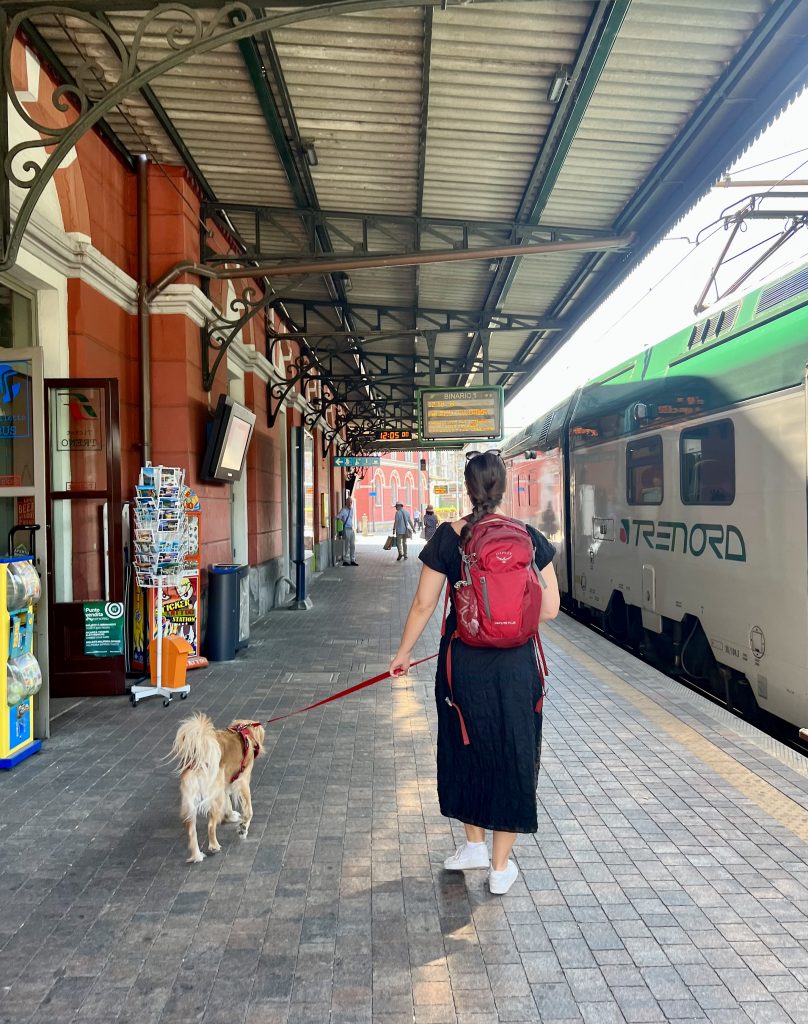
Bring snacks and drinks along for the ride.
While most long-distance routes will sell simple food on board like sandwiches, drinks, and pre-packaged snacks, the selection is generally about on par with airplane food, in other words, expensive and unexceptional.
Commuter and regional trains are much less likely to sell food on board.
On long-distance trains, there’s typically a dining car you can visit to make purchases, and on some routes (especially in first class), a restaurant cart will come around offering a few items, similar to a flight attendant.
Better not to worry about it, though: we recommend packing plenty of snacks (or even a full meal) and drinks to bring along, which is completely typical on trains in most places in Europe.

If you have a long train ride ahead, consider packing cards or a game.
Not only will this help entertain you throughout the journey, but it’s also a great way to meet other travelers!
Don’t count on having internet access onboard.
Even if you have a European SIM card and are traveling within the Schengen Zone (where SIM cards are supposed to work across borders), maintaining an internet connection on a European train ride is iffy.
B etween tunnels, remote countryside, border crossings, etc., it’s best not to count on having access.
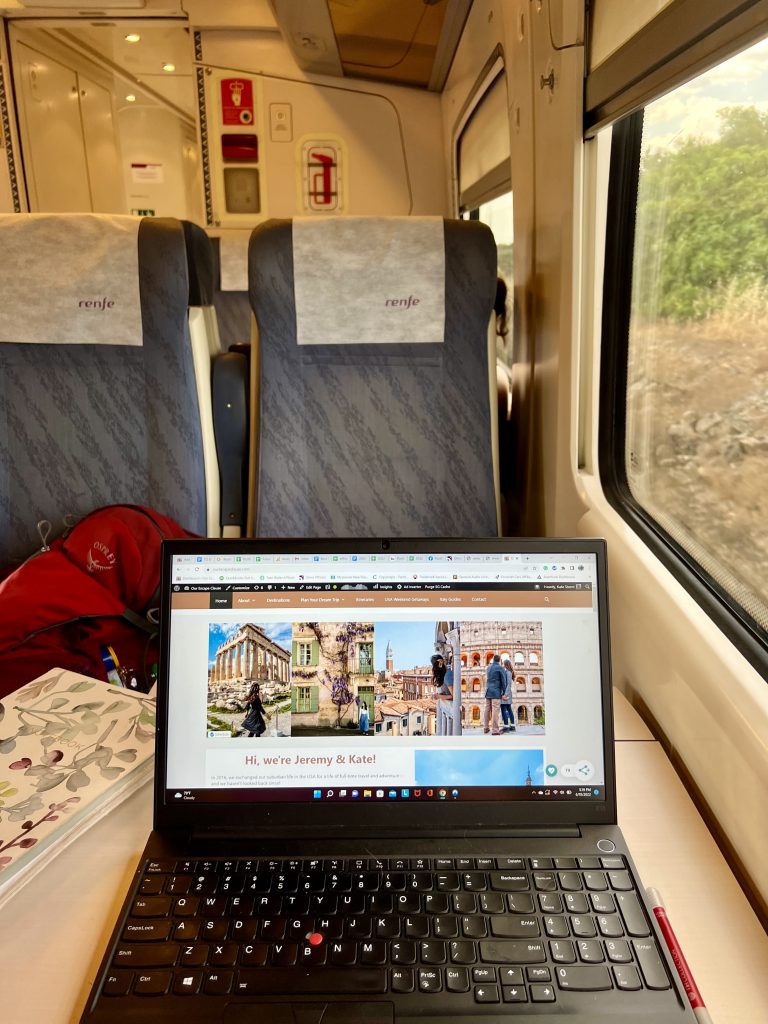
If the train advertises wifi, don’t count on that either–some of them require a local tax ID number or phone number to access.
We’ve found that our best bet for internet access during train travel in Europe is whenever the train briefly stops at a station.
If you have a SIM card that works for that destination, you can usually expect at least a few minutes of connectivity there.

Make sure you go to the correct train station.
We mentioned this above, but it bears repeating: be very certain that you go to the correct train station when traveling by train through Europe… and that goes for when you get on and when you get off!
… And show up early.
Some train stations in major cities are enormous, and can almost resemble airports, with 30+ platforms, various levels, and in some cases a mall inside them (like Roma Termini, for example).
If you’re not familiar with the station in question, be sure to leave yourself plenty of time to find your way to the correct platform once you arrive!
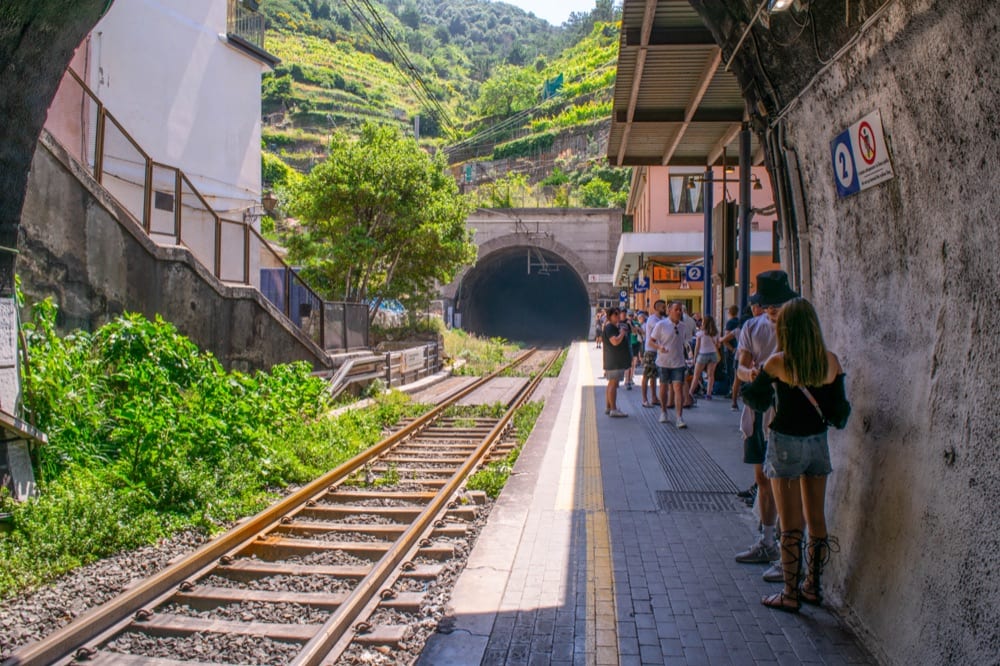
If you have an opportunity to take an overnight train, do!
Not only is it a great way to save on the cost of a hotel for the night , but spending the night in a sleeper car can be quite a travel adventure!
(Though in the interest of full disclosure, I have never once gotten what I would call a good night’s sleep on a train. No regrets, though, and we’ll do it again!).
Toilets are plentiful, but their quality is questionable.
In other words, bring some toilet paper (I usually keep a small packet of tissues handy for that purpose) and hand sanitizer.
Also, wet floors aren’t exactly unheard of, so you might want to stick with close-toed shoes.
Most high-speed trains in Europe have a toilet available in every train car, so you typically won’t need to go far to find one.
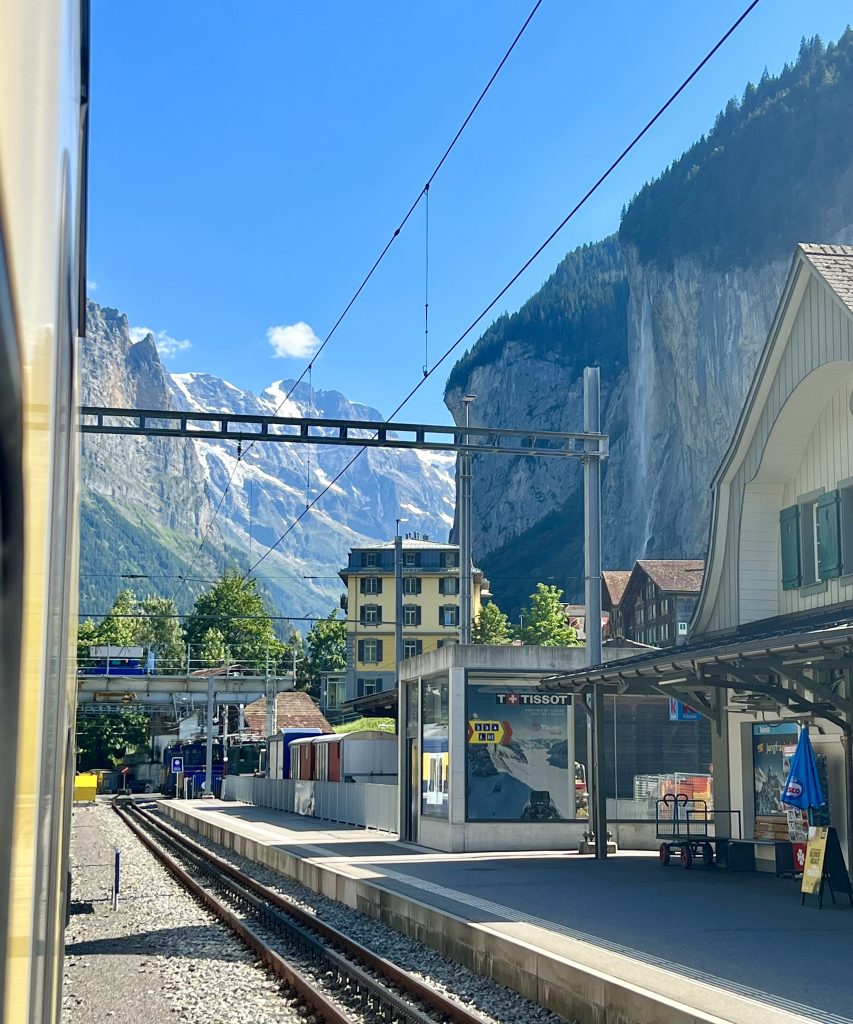
If you’re a student and/or under 26, you might qualify for discounts.
Keep that in mind when booking your train tickets for Europe, and if you do book a discounted fare, be sure to keep your ID handy (it’ll likely come in handy in many other places during your trip, too).
Keep in mind that some under-26 discounts are only available to EU residents, so be sure to verify that before counting on them if you aren’t European.
You can generally bring dogs (and cats) with you on trains in Europe!
This is a bit beyond the scope of this blog post, but given that we have several photos of Ranger in here, I’m sure at least a few readers are curious!
The vast majority of trains in Europe allow well-behaved companion animals on board, with varying requirements and costs (generally either free or the price of a child) based on the animal’s size, whether it’s confined in a carrier, etc.
It’s best to check the expectations for each route in advance, but with a little planning and flexibility, your furry friends are generally welcome.
Ranger is quite the traveler and has visited 8 countries and counting with us, many of them by train!
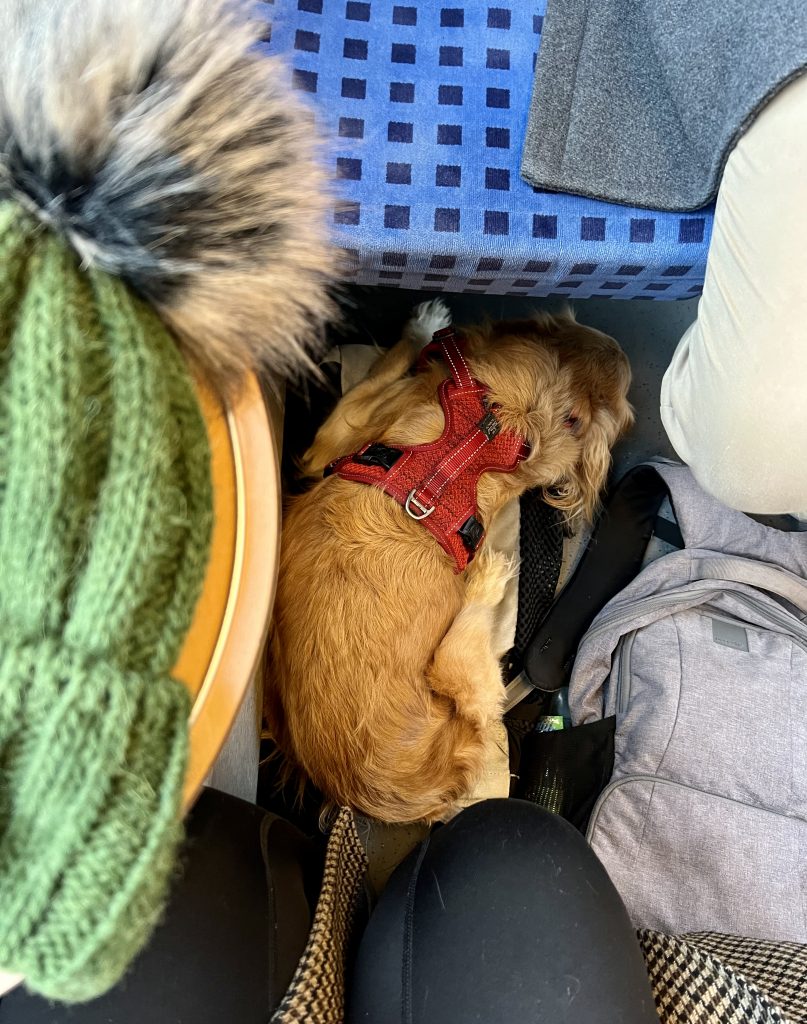
Keep an eye on social norms.
Cultural expectations around eating, talking loudly, and storing your luggage can and will vary depending on where your train travel in Europe takes you.
B e sure to keep an eye on what everyone else is doing to ensure you’re not inadvertently committing a faux pas !
For example, if you take a train, say, in Italy and then later in Austria as you travel Europe by train, you’ll likely notice a huge difference in the noise level on the train!
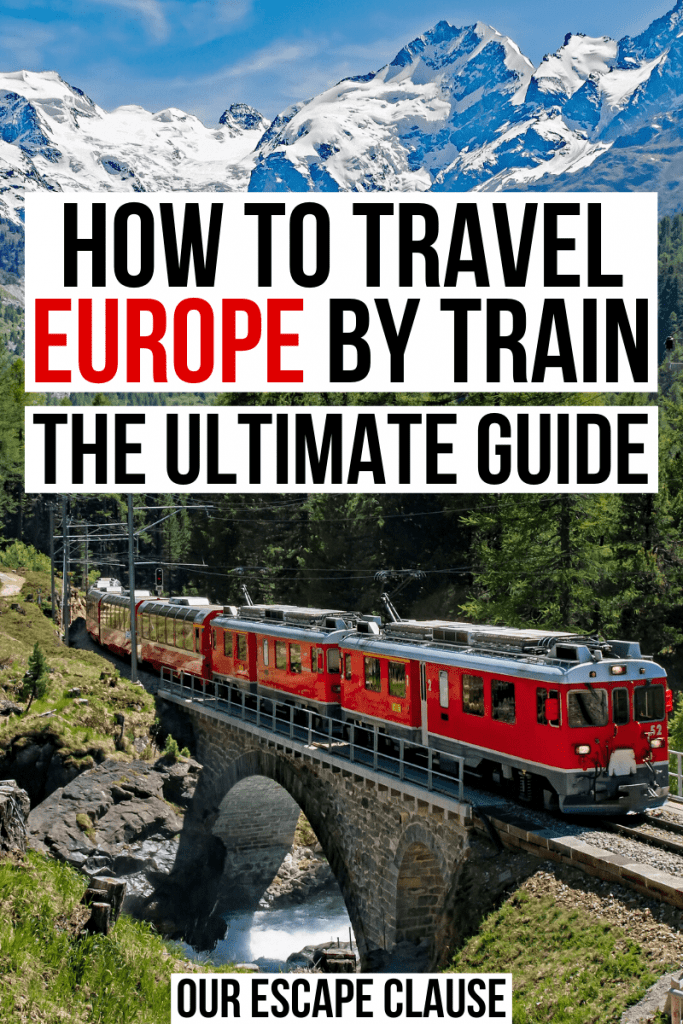
About Kate Storm

In May 2016, I left my suburban life in the USA and became a full-time traveler. Since then, I have visited 50+ countries on 5 continents and lived in Portugal, developing a special love of traveling in Europe (especially Italy) along the way. Today, along with my husband Jeremy and dog Ranger, I’m working toward my eventual goal of splitting my life between Europe and the USA.
64 thoughts on “How to Travel Europe By Train: The Ultimate Guide (+ Tips!)”
We are senior citizens planning a trip to Italy and surrounding areas in September 2022. Looking at some train travel, multiple cities for sight seeing. We like the smaller, picturesque, historical cities. What advice can you offer?
I definitely recommend searching “Italy” on our search bar (top right of the site on desktop, part of the menu on mobile). Italy is one of our favorites and we have (literally) about 100 posts about it!
For small, picturesque, historic cities, Siena, Venice (it is pretty small!), and Verona come to mind. Florence, too–surprisingly small in some ways!
For even smaller hilltop villages like Montepulciano, etc, in Tuscany, be aware that many of the train stations aren’t in the town center, so you’ll likely want to catch a taxi in many of them to avoid hauling luggage up a hill.
Two years ago we had a small villa in a very small town in Italy. We trained to a new place everyday. It was funned and easy. We took the local bus into the next target town, bought our tickets at the station and took off for the day. We went to Florence, Pizza, and several smaller towns. We are mature seniors and had no trouble getting around. Only a couple of people spoke english in a small town, but, we managed easily.
Your comments encourage me to locate a home base in Italy and take a train or bus to the surrounding suburbs etc. I’m no spring chicken nor my husband but we get around easily. Thank you
Thanks for the helpful information. Appreciate it!
My boyfriend and I just booked our first train tickets in Europe thanks to you!!! I’m so happy we found your blog. We’re going to France and Spain this summer!
Ahhh that is wonderful to hear! Have a fantastic time!
My wife and I, both 70 are taking a cruise from Budapest to Passau and plan on taking trains to Birmingham England from Passau. I’ m planning about 5 stops. First Venice then Tirano, St. Moritz, Sion, Strasbourg and finally Birmingham. I plan on a Eurrail pass. do you have any advice, help or suggestion. Thanks
Hi Wayne! If you’re planning on an Eurail pass, my best advice is to research your routes, dates, and times in advance–many popular routes will still require advance reservations even with a pass.
Kate, my wife and I are planning our first cruise in Europe, and are thinking about taking the train from Barcelona to Rome (cruise departure). Your blog was a great overview. My question has to do with ability to get off and on a subsequent train, for day visits on the way. Is switching covered or individually arranged ahead of time, and is it a good or bad idea for novice mostly monolingual travelers to Europe? Advice? Thanks,(Chuck)
If you book a ticket from Barcelona to Rome, your ticket will be good for that specific train/departure only, so you can’t get off and back on at various stops. If you want to stop places along the way, you’ll need to book individual tickets between each destination you plan to visit.
If you have your heart set on that, look into an Eurail pass–it does what you describe, however, it can get confusing (some routes still require advance reservations) and will usually be more expensive than booking tickets individually.
Traveling by train is absolutely doable as a novice traveler, but be sure to be careful when you’re booking your tickets (to ensure they’re the right dates/times/train stations you expect), and pay close attention to the stops to ensure you don’t miss yours.
Another option, if you’re traveling during the summer and want to get from Barcelona to Rome quickly without flying, would be to take a ferry to Rome and then train to a few places around Italy from there.
Hope you guys have a great trip!
My family is looking to travel from Lille to Amsterdam. My question is: when we depart out train that originated in Lille and transfer to a new train in Brussels, will we need to go through some form of customs before we board the train for Amsterdam? I just want to get an idea of how much time to leave for connecting trains.
Hi Matt! No customs required–all of those countries are part of the EU Schengen Zone, so moving between them via train is generally as seamless as road-tripping between US states.
And, is 33 minutes to connect from one train to another a lot of time? We have never done this type of thing before so I’m not sure if that is cutting it too close
33 minutes should be okay! Definitely move with purpose to find your next platform once you arrive, but you shouldn’t be in a huge hurry as long as everything is on time.
Kate- I am considering coming to Europe early for my Christmas river cruise heading out of Brussels. I was thinking of taking the train from the Brussels airport to Koln to see their markets and explore, and then doing a day train up to Dusseldorf to see their Christmas markets. It looks like about a 2 hour train ride on Thalys to Koln and then only about 30 minutes from Koln on to Dusseldorf. I will then take the train back to Brussels for my riverboat cruise. Does this sound feasible?
As long as the timetables work in your favor, I don’t see why not! Germany and Belgium are both great countries for exploring by train.
Hello Kate, We are looking to visit Italy for the first time in December/2022, I was looking in the train tours, visiting 4 cities (Rome, Florence,Venice & Naples). Your thoughts on train tours? Thank
Hi Sharon! I’m not sure what you mean by tour–if you mean a guided trip, they can of course be very fun with the right group, but I wouldn’t say you need one for this route.
All of those cities are very simple to visit independently by train, and we have taken trains to and from all of them many times (I’m actually typing this on a train to Venice).
Hi Kate, my husband and I are planning to fly in to Italy and travel by train to the following places: 1) Milan 2) Switzerland 3) Vienna 4) Prague 5) Paris
May I know if these places can be connected by train. If yes which train will you recommend, please. We are actually thinking about 15-20 days to cover these areas. As it’s our first Europe trip, do you think it’s sufficient and is there any place along the way that you would encourage to go. Thank you.
Yes, those are all excellent destinations to visit by train, so you’re good to go there. As far as specific trains, you’ll need to pull up the individual routes to check (we recommend Omio for this, especially with cross-border trains).
That’s definitely too many places for 15 days, though, and still pushing it at 20. I’d recommend trimming the itinerary a bit if you can (or adding on extra days, of course!).
Hi there This was so helpful. My husband and I are going to Amsterdamin September and then 3 nights in Bruges. All us booked but I’m overwhelmed but the trains websites. Omio is the easiest but I’m still leary. Is it legit and a decent safe way to book trains? We are only going to Belgium. Then two days to the countryside in The Netherlands which we will just grab a regional train. Everyone is telling us to book the train to Bruges. Any helpful advice would be great. We would go to Antwerp and take an IC train to Bruges an hour later,as my husband does have hip and knee problems. Thanks in advance.
I understand, it’s a lot to take on the first few times!
We use Omio regularly, as do many people we know, it’s perfectly legitimate.
The Antwerp train station will be a beautiful place to rest for an hour. It’s absolutely stunning, especially the front foyer, and often pops up on lists of the best things to see in the city!
Hi Kate, My husband and I will be traveling from Prague to cities in Austria and Germany by train next month. We have used trains a few times in Europe before, but it was pre Covid. It looks like most Covid restrictions have been dropped, but I wondered if you have to show Covid vaccination cards on the trains?
Thank You, Jaymie
I’m always hesitant to answer questions like this because I feel like I’ll be summoning disaster with how quickly things can change, LOL.
But at the moment, no, you won’t need your vaccination proof in either place as far as I know.
Life is pretty 2019 these days when it comes to the logistics of traveling around Europe as a visitor, though a handful of places still require masks on public transport (I think Vienna is one of them, but again–things change!).
This is so helpful, but I’m striking out with trains from Naples to Rome? It says that there aren’t any? Why would they list it as an option if they don’t travel to there? Also, is there a way to preview how long the train rides are to decide if we want to travel to certain cities? Cannot find any train tables. I find the Omio and Eurail sites to be difficult to navigate and I can’t get enough information to plan! :( Does it make sense to buy a eurail pass first and then research times and etas? Any help is appreciated!
Trains from Naples to Rome definitely exist! It’s possible you’re looking too far in advance to book the tickets–on Omio right now, it looks like I can purchase Naples to Rome tickets up to about 6 months out.
When you search for a specific route on Omio, Trenitalia, etc, it’ll show you how long the train is and how many changes there are, if any, much like searching for a flight.
We don’t recommend using the Google tool for this, as it tends to default to how to get somewhere if you leave at that second, which can be confusing and normally involves a more complicated route than you need.
Personally, we don’t generally find Eurail passes to be worth it in terms of cost-savings for most travelers, but in terms of research, you’ll be working with the same information either way. :-)
Hope that helps! It can be a bit confusing at first, but if you try practicing by looking at dates sooner than when you actually plan to travel, I think you’ll find the information you’re looking for.
Thank you for taking the time to write all that useful information. It is so much appreciated by many of us! :)
Like many of your readers, we are (two young adults) planning to visit Europe for the first time this upcoming May. We are currently looking at: Landing in the morning in Prague, spend 1 or 2 nights, then Vienna, one night, leave following morning for Bratislava (this one is a maybe, it’s so close!) OR Vienna to Venice. Spend 1-2 nights, then Zurich, and finally Munich, before we make it back to Prague to catch our returning flight. We are looking at 9 days from the morning we land. 🥴 We figured it would be more efficient to travel in a circle, as some destinations -like Paris- will be out this time around. :(
Thoughts on that? I will look into Omni regarding trains, but our plan is to travel only by train, if possible.
I know that’s a lot of questions, but THANK YOU so much for your help! 😊
Thanks so much, Al! So glad to be helpful. :-)
You definitely have the right idea with traveling in a circle, though I definitely recommend trimming some destinations!
With 9 days, I’d suggest no more than 3 base cities (and that’s pushing it), and you can add a day trip or two from there if you like.
I know it’s SO tempting to add more places (I have this problem constantly myself lol) but you’ll have much more fun with a bit of time to explore each place!
I’m not sure what your priorities are or what your budget is, but based on the cities you listed, I’d cut Zurich (Switzerland is amazing, but you don’t have time) and Bratislava. Ideally, I’d suggest cutting one more city as well.
If it were my trip, personally, I’d do a Prague – Venice – Munich triangle, and potentially day trip to Neuschwanstein Castle or somewhere else in the Bavarian Alps with one of the days in Munich. That’s just personal preference, though!
You can definitely do all the destinations you listed by train, no issue there at all. :-)
That recommendation sounds amazing. The two big ones are Prague (#1!) and Venice, but really hoping to do Munich as well.
I will look into the Bavarian Alps, as I am not familiar with them :)
Thanks again. Really enjoy reading through your content! 😊
If you love mountains and/or castles, you’ll definitely love them!
Enjoy some Czech beer for us :-)
Hi, we are doing Europe by train in June. Is there a way to determine: a. which direction the train(s) are going, so we can face forward? b. Which side is considered the right side (vs left side) for best views when recommended? Thanks for your perspective.
Unfortunately, there’s no clear-cut way to determine which way trains are facing, especially because they often turn around during the route, depending on how they pull into/out of various stations. On long journeys, it’s not uncommon to find yourself facing forward part of the time and backward part of the time.
If you’re starting from the beginning of the line, you can sometimes tell which way you’ll be facing at the beginning based on the route, but not always.
The same goes for the views–for very specific routes, you can sometimes get personalized recommendations from others who have traveled the route (especially for particularly scenic ones), but there’s no simple solution to figuring it out beyond just recommendations.
It’d certainly be easier if that were the case!
Hi Kate, Really enjoying your posts, photos, and appreciate the helpful advice. I am planning a trip in Sept/Oct to visit Scotland for a week before traveling in southern Germany and Austria. What would you recommend about getting from Scotland/London to Koln, Munich or Frankfurt? Is there a good train route to take? Or is this a case where flights make more (economic or time) sense? Thanks for any pointers!
That’s definitely a route that is better served by flight, both from an economic and time perspective! :-)
Is there something I am missing about Omio, the booking site that you recommend?
My wife and I are moving to Lyon in April and plan to go to Amsterdam in May. I went on the Omio site just to get a sense of what was available from Lyon (Gare Part Dieu) to Amsterdam (Centraal) on a random date (I picked May 9) and the site told me it could not find any trains between these places. But on the Rail Europe site, it showed a slew of trains available throughout the day.
I am confused.
I am too, I’m not sure why it’s not coming up! I just did the search myself and played around with dates, destinations, etc. Paris – Amsterdam, for example, seems to be pulling up just fine.
Could be as simple as a bug, but I just shot Omio an email asking for clarification.
Hi Kate I am Josh from KL Malaysia looking forward for europe trip in september 2023. I would like to start trip from berlin to budapest for 15 to 17 days.how to go about it by using eurorail?
Eurail has a website with a planning tool that can help you sketch out your journey.
Generally, you’ll buy either a set number of travel days within a given time period (like 7 days to be used in a month) or an unlimited pass.
Many routes do still require advance reservations (with additional fees), so be sure to check each route individually so you don’t miss anything!
Hi! I would love to travel as comfortably with my dog as you have, seeing from the pictures. I have a couple of questions: 1) what’s the name brand of that pet carrier. Looks perfect for mine. 2) Could you post tips on hoe to travel with your pet successfully.
Thank you for your content!
Yes, absolutely–with a catch (if you’re in the US). We bought the bag on Amazon Spain when living in Portugal and don’t know of an equivalent here. But this is the link: https://www.amazon.es/-/pt/gp/product/B00XR2D94W/ref=ppx_yo_dt_b_asin_title_o07_s00?ie=UTF8&fbclid=IwAR3p0Ihrxf6e1yL4nJv5pJBK0GXmOIVIqXL97ov77VRuxSIvm61M2-NbfQE&th=1
Here’s Ranger’s backpack that he gets carried in as well (size large): https://www.amazon.com/gp/product/B07C9XLXVH?ie=UTF8&th=1&linkCode=ll1&tag=ourescapeclau-20&linkId=813c9a64c05de1faef0162cbed102f22&language=en_US&ref_=as_li_ss_tl
He absolutely loves both–gets so excited when we get his bags out, and climbs right in when we get onboard!
Traveling by train in Europe with a dog is usually pretty simple, but you’ll always want to look up requirements for the specific country/train company (some require dogs not in a carrier to pay a half-fare or child’s ticket, etc).
If your dog is very small (like a yorkie or similar) they’re usually free, though again, be sure to check in advance.
I have it on my list to write a whole blog post on this topic eventually, but I hope that helps get you started! :-)
Just wanted to say thank for you for such amazing content. We are starting to plan a 5 week trip to Europe for Summer 2024 with our 4 kids and your site and recommendations are beyond helpful.
Thank you so much, Megan! That’s wonderful to hear. :-) Hope you guys have an incredible trip!
Hi, planning a trip to Europe with the family. Have been to Italy, Spain, Portugal, France and UK so we are looking for something different. Like Berlin, Prague and Vienna or Amsterdam, Berlin and Brussels. Love to get your thoughts on these routes and would you recommend taking the train between these cities? Or any other 3 cities you recommend we do over 10 days.
Sounds like a very fun trip! All of the cities you mentioned are definitely doable by train, but Berlin-Prague-Vienna is more cohesive than Amsterdam-Berlin-Brussels (I also personally would put a couple of dozen other cities in the region ahead of Brussels, though it definitely has things to offer!).
Since it seems like Berlin is a priority for you, I’d recommend using that as your anchor and spanning out from there.
A few other places that could make sense, if you want to add more options to your list, could be Krakow, Budapest, or Bratislava.
If you want to start in Berlin and include Amsterdam, you might look into Hamburg, Cologne, or Bruges.
You could also head south from Berlin, and do a Berlin-Munich-Switzerland (Zurich or Lucerne if you’re looking for cities) route.
Really, the possibilities are endless, so it just comes down to the cities that call to you the most!
We are seniors, experienced travellers but novice on trains. We have 3 weeks to visit Paris, Prague, Vienna, Bern, Marseilles, Barcelona, and Lisbon. What suggestions can you offer us Thanks
My first recommendation would be to trim a city or two–3 days per city is a very fast pace to keep up for 3 weeks!
Lisbon and Barcelona are of course the biggest geographic outliers. Lisbon is a non-starter as far as train travel to the rest of these cities is concerned–realistically, it’ll make more sense to fly to and from there.
Barcelona is a bit tricky, since Spanish and Portuguese trains are on a different rail gauge than the rest of the countries on your list. You can take a high-speed train from Barcelona to Paris, but getting from Barcelona to Marseilles via train is much more challenging than you’d think it would be based on a map.
The rest of the cities you mentioned are very well-connected by train, so you shouldn’t have any issues there. :-)
Really informative site you have here!
I’m from Asia and planning to visit Europe for the first time in Oct 2023. I’ll likely start the tour from London and have about 10 days, then will fly home from Heathrow Airport London. I’m really into trains and would love your advice on what some destinations would be possible. I’ve never been to Europe so anything is fine with me. :) Thank you
Honestly, the number of options is so overwhelming that you’re going to want to narrow it down–a lot!
Assuming you plan to hop over to mainland Europe (as opposed to heading north to Scotland, for example), Paris and Amsterdam are both great jumping-off points connected to London by train.
From either city, you can then reach dozens of cities within several countries in a day’s worth of train travel (or less).
Consider taking a look at places that interest you in France, Germany, Italy, Switzerland, The Netherlands, and Belgium–just to name a few!
If you want to peruse some sample itineraries, we have several in this post: https://www.ourescapeclause.com/2-week-europe-itinerary-trip/
Hope you have a fantastic trip!
Thanks for all the info contained within this blog. We are planning for summer 2024,a 2-week tour of Europe starting and finishing in the UK. How many stops would you recommend? Where would you suggest?, need to combine, beach, sightseeing and something in the Alpes? Ive got in mind Uk – South of France – Italy- Budapest-Krakow – Germany(or similar)-UK Now for the tricky bit, we are planning to do this with around 20 Explorer scouts! Any tips for travelling in groups? Can you also recommend a great website for hostels Thanks in advance
Sounds like quite the trip! 20 scouts–you guys have your work cut out for you, but I’m sure they’ll love it. :-) Can’t offer much personal insight in that direction myself, but I commend you guys for taking it on.
With only 2 weeks, I’d recommend 3 stops, with an additional day trip or two to add on more destinations. Sticking with the UK – South of France – Italy might work best in your case. Germany and Switzerland would also work as potential substitutes as they’re geographically close (depending on where you go).
We go into a lot more detail on putting together a 2-week itinerary in this guide: https://www.ourescapeclause.com/2-week-europe-itinerary-trip/
As far as booking lodging goes, we tend to book all of ours through Booking dot com these days. For hostels in particular, Hostelworld is also popular, though we have rarely used it ourselves. Depending on how old your scouts are you might want to double-check any age requirements for dorm stays.
We are a couple in our 60’s who have travelled by train in Italy and Japan .We are travelling to Greece for 2 weeks then flying to Hamburg.From here we are going to travel straight to Berlin(3 nights),Amsterdam(3 nights),Paris (5 nights),Interlarken,Switzerland (3 nights) then to Munich(4 nights). I have just started researching the best way to purchase rail tickets either a Eurail pass or point to point on Omio.Considering our itinerary what do you recommend?I have read that a Eurail pass is easier than point to point bookings but may be more costly.
Thanks for your blog,very informative.
Hi Francine,
In our experience, Eurail passes tend to be a bit more expensive for most travelers. Part of the reason for this is that many popular routes still require advance reservations that require you to commit to a date and often pay an additional reservation fee.
We have used an Eurail pass in the past, but these days, we always choose to book point-to-point journeys.
However, the only way to know for sure about your route in particular is to plan your trip out via Eurail (be sure to double-check what routes require reservations) and as a point-to-point trip and compare prices. Every trip is different, and since the prices for high-speed trains change depending on when you book them, there’s no way to know for certain.
If you’ve been comfortable traveling by train in other countries in the past, I wouldn’t say the ease of using an Eurail pass is worth the probable extra cost, especially with how simple it is to book train tickets online these days. It does depend on the traveler, though!
Thanks for the information Travelling to krakow then Prague Budapest and Croatia. Have 2 month. Would like to travel by train How far in advance do you need to book train tickets as I want to do it leisurely and not book to far in advance. Also what other country’s/cities do you recommend Thank you so much Betty
For most routes in that area, booking as you go (a few days to a week or so in advance) is just fine, as long as you’re a bit flexible. Exceptions can include night trains and traveling over holidays, so keep that in mind!
Keep in mind that train travel in Croatia is much less expansive than you might think–Dubrovnik doesn’t even have a train station! You can use some train routes, like Zagreb to Split, but plan on adding in buses and/or rental cars (plus ferries, of course) depending on where you want to go in Croatia.
With 2 months to travel from Krakow to Croatia, you might also consider stops in Austria (Vienna is right along your route), Slovakia (Bratislava is very easy to reach) and Slovenia. Depending on how direct you want to travel, Bosnia and Herzegovina could fit in as well.
That barely scratches the surface of the possibilities, but hopefully it gives you some ideas!
Hi! My wife and I love to travel (Between the two of us we have done Italy, Fiji, Australia and many others). We are planning on the F1 races in Spielberg, Austria next June. Thinking about the train from Vienna to Barcelona after and wondering if the ride (about a day) is worth the time? The flight is about 5 hours. We had fun on the train in Italy (Rome to Venice) We will likely leave Vienna the Mon or Tues after and have another 10 days. What do you think about Barcelona and Madrid? Do both? Or one over the other? Thanks in advance!
The distance between Vienna and Barcelona is far enough that unless the idea of a night train and a few train changes sounds like a fun adventure, I’d recommend flying! Basically as a travel experience it can work, but as a basic form of transportation, they’re a bit too far apart for the logistics to make sense.
As far as Barcelona and Madrid, both are wonderful, but they’re very different. Barcelona wins on whimsical architecture and access to the sea. Madrid wins on stately art museums and for having a more laid-back vibe. We enjoy both cities, but Madrid is our personal favorite of the two (though we are in the minority with that opinion!).
If you have time to spend a few days in each, they’re definitely both worth experiencing.
Hi! Thanks for the reply….sounds like flying is the way to go….we will have 4 days each in Madrid/Barcelona so should be able to get the flavors of both. Love your blog!
Thanks, Greg! Enjoy Austria and Spain! :-)
Hi Kate! I just found your blog while planning my first Europe trip… I’m so excited I have actual tears! I promised myself traveling around/to Europe would be something I accomplish by the time I turn 25. This train travel blog has given me so much needed information as when I originally started planning this trip a few years ago my original plan was by train. I will be combing through your blog site to read as much as I can and support you how I can.
My plan is to start in southern Portugal, through southern Spain, southern France, into Italy. I need to do more research to see if this much in a 2 week time span is even feasible. And, it looks like I may be better off taking a bus in Western Europe. This has been my one hurdle in actually going. If I’m going to go, I’m going to visit multiple countries… but the navigation between countries is the most fearful part for me. I will be using your blog to help me plan and prepare.
All this to say… I’m so glad I found your blog!! Thank you for all of your wonderful information.
Your comment brings a huge smile to my face! I remember planning our first trip so clearly at about the same age (I was 23 on our first-ever trip to Europe and 24 on our first multi-country European backpacking trip) and I can definitely say it was nothing short of life changing. :-)
All of the places you mentioned are among our favorites in the world! And reading between the lines, it sounds like you may have a preference for coastal areas, which all of those areas have in spades.
One small snag is that you have chosen some of the hardest places to travel between countries by train in western Europe, namely Portugal and Spain. Getting between major cities by train is no issue within each country, but the two aren’t very well-connected by train to each other, and the only train route to France from Spain leaves from Barcelona. There’s a long history as to why, but basically the train rail gauges in the Iberian peninsula are different than elsewhere.
However, don’t worry! There are plenty of solutions. :-) Buses are definitely a great option, especially for getting between places like the Algarve and Seville, etc. There are local buses, but also check out Flixbus, which is very popular with travelers and easy to use (we’ve used it many times ourselves). Also, flying is a surprisingly affordable option–Ryanair, Easyjet, etc. have tons of routes in these areas and are frequently way cheaper than traveling by train. Blablacar–basically Uber for traveling long distances–is also an option, though not one we have lots of personal experience with.
Finally, don’t forget about ferries! They can be surprisingly affordable, especially in Spain and southern Italy. We took a ferry from Barcelona to Rome and found it very memorable with amazing views: https://www.ourescapeclause.com/barcelona-to-rome-ferry/
As I always like to tell people, getting on that first plane and starting your trip is the hardest part. After that, everything falls into place. :-)
Hi Kate, Your blog has been super informative and helpful! We are planning a family trip to Europe this May with our 3 teenagers. Our goal is to do Rome (4 nights), Venice (2 nights), Salzburg (3 nights) and Munich (4-5 nights) in 15 days. Planning to fly into Rome and fly out of Munich or Frankfurt (Dallas is home), and travel by train from city to city. Are we taking on too much? Do you recommend using the fast train from Rome to Venice? Really want to take the train thru the Alps from Venice to Salzburg, but is it going to be much more expensive than flying? I’m assuming I need to book that leg of the train trip asap. Again, great job on the blog! It has made me very excited for our trip!
That’s great to hear, thank you!
That sounds like a good pace for a trip–if anything, 5 nights seems slightly long in Munich, though very doable with a day trip or two built in (and there are plenty of amazing ones in Bavaria!).
Taking the fast train from Rome to Venice would absolutely be our preference–it’s the fastest way to travel between the two cities by far.
Same for Venice to Salzburg (it’s a lovely train ride!). but yes, it can be more expensive than flying depending on when you book and how good of a flight deal you get. It’s much more comfortable regardless, though (not traveling to and from the airports is a big benefit in its own right). Depending on what train company you travel with, expect tickets to be available for purchase anywhere from 3-6 months in advance. I’d start watching earlier, though, just looking at more recent dates, to get a feel for what prices to expect.
Thank you for taking the time to put all of these great information together. Really appreciate it. So our plan for next year is as follow (12 days):
Spain: 1 day Madrid 1day Sevilla 1 day Barcelona
from Barcelona, take fast train to Italy 1 day Rome 1 day Naples 1 day Milan
from Milan take fast train to Switzerland:
What places (areas) would you recommend visiting in Switzerland? We would like countryside, small towns. I heard Switzerland is one of the most expensive countries to visit, so anything where we can enjoy nice scenery but not the most expensive areas. Also, is it feasible getting around in trains between these cities/countries? Thank you in advance!
Leave a Comment Cancel reply
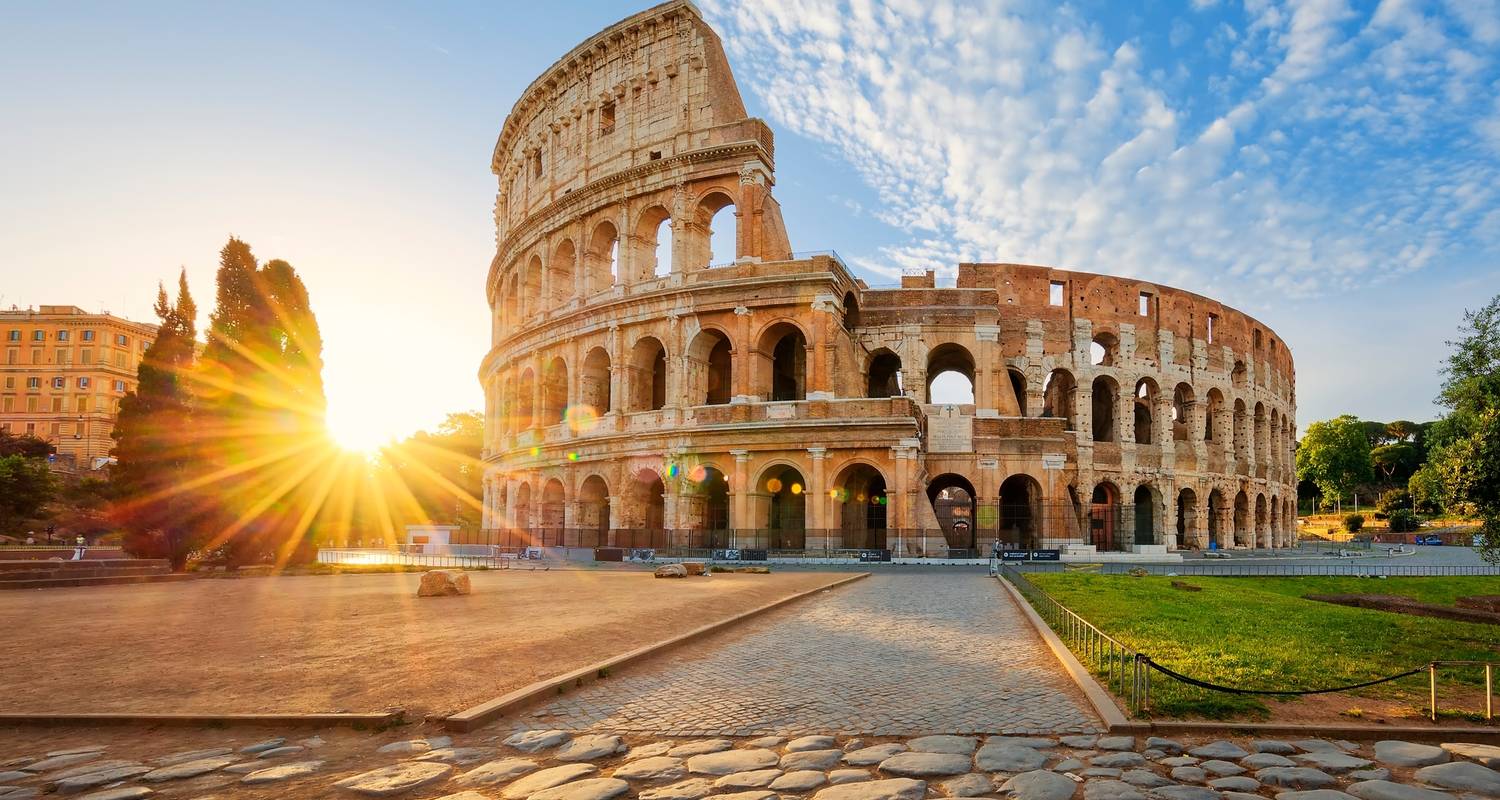
Train & Rail Tours in Europe
- Choose from 100+ Europe tours
- 950+ verified reviews from TourRadar travelers
- 24/7 customer support
10 best Train & Rail Europe tour packages
Compiled by

Nadine Europe travel expert at TourRadar
Eco-Comfort - Tour Of Italy By Train
Europe by rail budapest to milan, italy by high-speed train, european romance, mediterranean express: rivieras & railroads, europe by rail - london to prague, train tours italy: venice, florence, rome, sorrento by train, paris to barcelona: tapas & train rides, italy by train, jacobite steam train & the great glen.
“The efficient train travel offered a seamless way to explore various destinations.” Sarah, traveled in March 2022
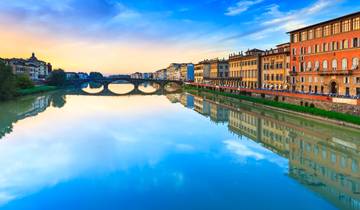
- Train & Rail
- Taste Chianti wines in a Tuscan vineyard
- Admire Pisa's Leaning Tower and Siena's Duomo
- Skip lines at the Vatican and Sistine Chapel
“The overall trip was fab - it was amazing to explore the different cities. All cities were great - would have loved to stay in Lake Bled for an extra day!!!” Emily Benham, traveled in August 2024

- Sightseeing
- Ride a gondola through Venice's canals
- Explore Budapest's famous ruin bars
- Learn chocolate-making in Vienna
“Italy's high-speed train package redefines exploration! Included excursions offered an effortless way to discover Italian cities, maximizing time and experience.” Drew, traveled in May 2023

- See St. Peter’s Basilica and the Sistine Chapel
- Discover the hidden gems of romantic Venice
- Find your favourite gelato flavour in Florence
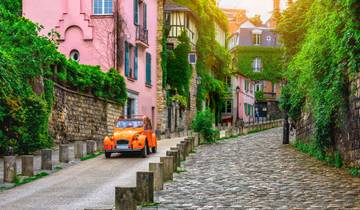
- Christmas & New Year
- Admire Florence's Renaissance art
- Explore the historic sites of Rome
- Enjoy a boat ride through Venice
“A really great experience which everyone should make.” Carolin S, traveled in September 2018
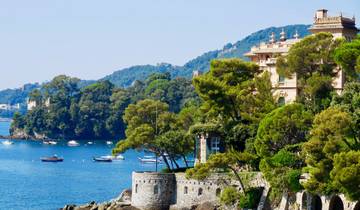
- Spend an afternoon freely in Nice
- Discover Monaco with your CEO on foot
- Explore Rome's cobblestone streets at night
“She can't get rid of us now. Just a big thankyou to gem for putting up us all x” Blaine Atkin, traveled in June 2024

- Experience Amsterdam's nightlife on a bar crawl
- Stroll through Prague's Old Town and castle
- Visit Paris and ascend the Sacré-Cœur dome
“We truly feel like we got the full Italian experience. Be prepared to walk...a lot. Nothing wrong with that, just some people aren't used to it, but we loved it.” Parmveer Singh, traveled in July 2022

- • A guided tour of every visited place of interest
- • Guaranteed departure
- • Luggage bus
“The free time on the tour to go out and do some great sightseeing was a great experience.” Tiffany Reitsema, traveled in May 2022

- Visit the Leaning Tower of Pisa
- Grab drinks at a Paris hostel bar
- Cook tapas in a Barcelona class
“All hotels were good, arrangements were clear and well provided. No complaints all.” ALLEN STAFFORD, traveled in July 2023
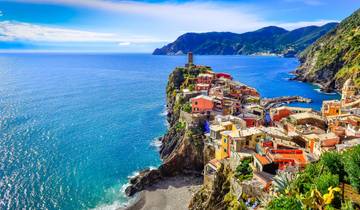
- Visit Monterosso, Vernazza, Corniglia, Manarola and Riomaggiore
- Travel in time as you discover the breathtaking Eternal City of Rome
- Wander the streets of historic Florence and see the famous Duomo
“Fantastic history. Great views.” Staci Shaffer, traveled in August 2023
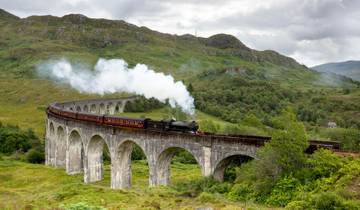
- Glen Coe: Dramatic & wild landscape with history to match
- Loch Ness: Monster spot from the shore
- Mallaig: Explore the coastal village with views to the Isle of Skye
More about Europe
Discover TourRadar
Wander-Lush
Europe by Train: 20 Itinerary Ideas for 10 Days of Travel
There’s no better way to slow travel through Europe than by train. Here are 20 itinerary ideas for 10 days in Europe by rail – with options for every travel style, budget and season.
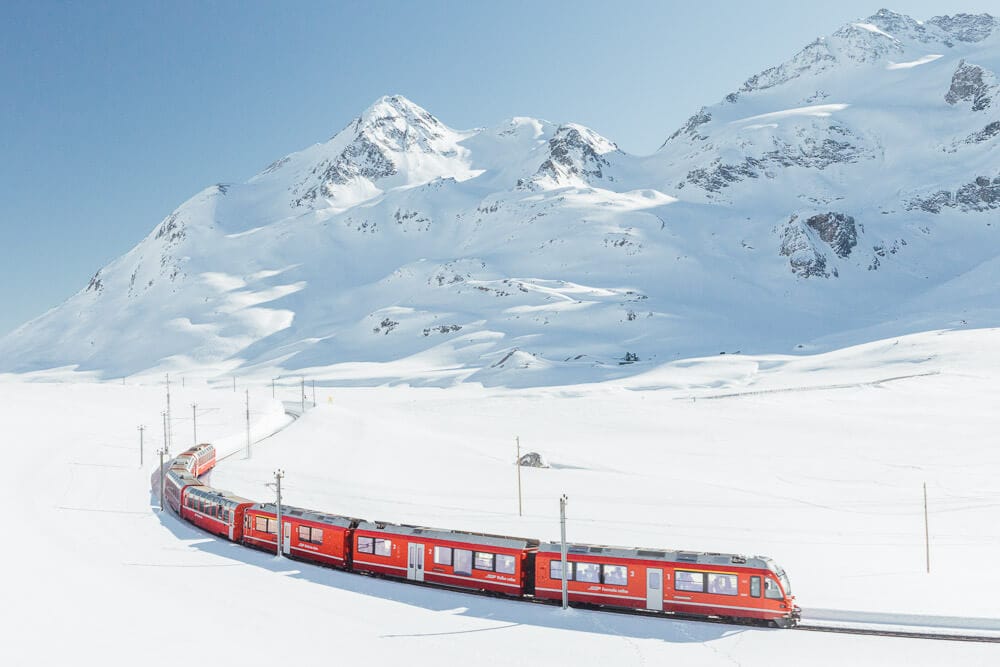
Europe is experiencing something of a railway renaissance, with old tracks being revived and new rail routes opening up.
Whether you’re looking for a fast-paced, multi-country itinerary or you prefer to explore one country in depth, travelling by train is an easy and affordable way to get around.
Some of these train journeys are among the most beautiful on Earth; others are a convenient way to get from A to B. Whatever you’re looking for, here are 20 of the best Europe 10-day itinerary ideas to get on board with.
Please note: This post contains affiliate links, meaning I may earn a commission if you make a purchase by clicking a link (at no extra cost to you). Learn more.
10-day itineraries for travelling Europe by train
Each of these Europe train itineraries is perfectly suited to 10 days of travel but can easily be shortened or extended depending on how much time you have.
Depending on your travel plans and just how far you plan to ride the rails, it might be economical to pick up a Eurail Global Pass.
Similar to a Amtrak Rail Pass in the US or the JR Pass in Japan, it can be used for multiple trips across the continent (it covers 33 countries in total). There are no fixed dates, and you have complete flexibility to design your own route.
Learn more about the Eurail Pass and purchase your pass online here through the official website .
Central Europe by Train: Hungary to Slovenia
- Route: Budapest – Bratislava – Vienna – Ljubljana
- Editor’s pick
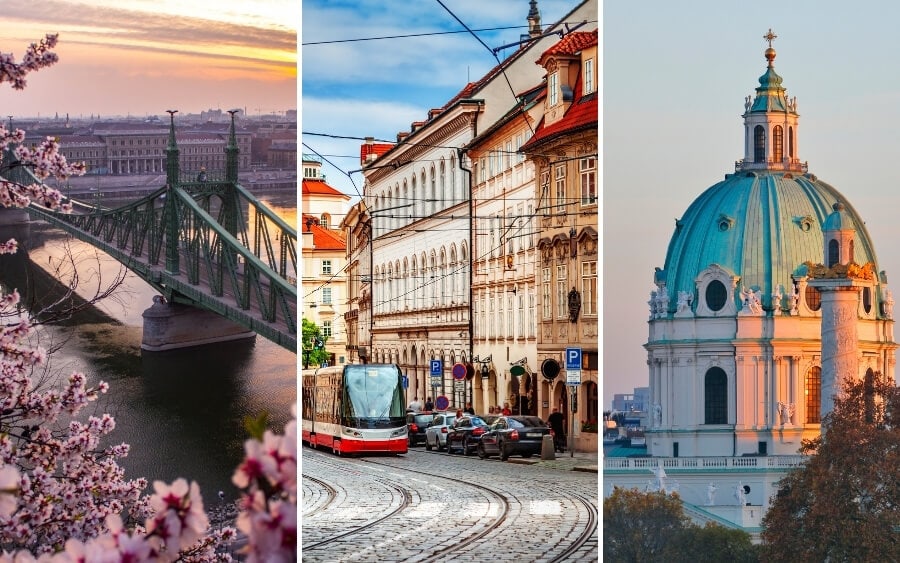
This route traverses four of Central Europe’s great capitals: Budapest, Bratislava, Vienna and Ljubljana.
Made for travellers who don’t mind moving at a fast pace and want to make the most of their 10 days in Europe, this itinerary hits all the urban highlights of Hungary , Slovakia, Austria and Slovenia with plenty of opportunities for day trips to castles, wineries and hiking areas in between.
Start in Hungary’s enthralling capital and spend a few days experiencing the best of Budapest . Don’t miss a morning wander around the covered market, a soak in the Gellert or Széchenyi Thermal Bath, and sunset at Fisherman’s Bastion.
After the impressive scale of Budapest, Slovakia’s capital (3.5 hours away by train) seems diminutive in comparison – but don’t be fooled, Bratislava has a lot to offer visitors. With one full day in the city you can catch all the highlights, starting with a morning walking tour of the historic Old Town core and culminating with a view from the castle grounds.
For something different, cross the famous UFO Bridge to wander around Petrzalka , a colourful neighbourhood on the opposite side of the river. Then indulge in a day trip on the Danube or through the countryside to visit Slovakia’s amazing castles, wineries and old towns .
Continue to Austria, following the mighty Danube river. For this leg you can choose between a morning train (1.5 hrs) or if the weather is good, the ferry (1.5 hours). Vienna needs no introduction – there are countless things to keep you occupied in this classic European capital for 2-3 days, ranging from historic cafes to museums and churches.
When you’ve had your fill, board the train for a final time for the scenic journey to Ljubljana. This train ride takes the better part of a full day and leads you through some of southern Austria’s and northern Slovenia’s most beautiful countryside. Stopovers in Graz or Maribor (Slovenia’s second-largest city) can easily be arranged if time permits.
Fall in love with petite and pretty Ljubljana by wandering the river’s edge through the Old Town, browsing the produce market and taking the funicular up to the castle. Bled is within easy reach (under 1.5 hours by train or bus) and you won’t regret adding on a half-day trip to visit the region’s most iconic lake .
Northern Italy: Milan to Trieste
- Route: Milan – Verona – Padua – Venice – Trieste
- Designed by: Sophie from Just Heading Out
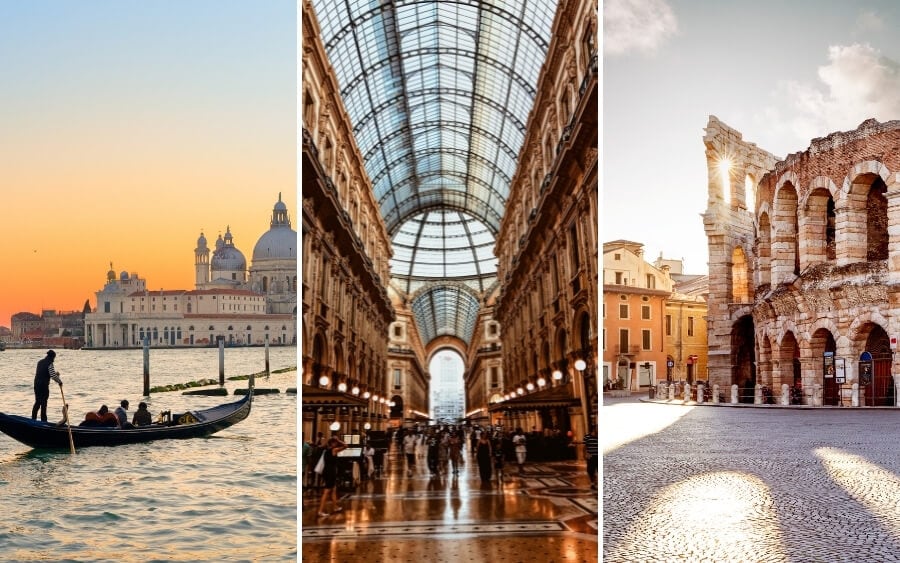
Italy has more than enough on offer to fill 10 days of travel or more . This route takes you to some of the most popular cities in the north of Italy plus a few underrated places.
Start in Milan, the elegant fashion capital. Spend two nights here to eat, drink, shop and see the highlights: The Duomo, the Galleria Vittorio Emanuele II, and the Castello Sforzesco. The next day, take either the regional train (2 hrs) or the fast train (1.25 hrs) to Verona.
Verona’s biggest claim to fame is as the setting of Shakespeare’s Romeo and Juliet , so you must visit Juliet’s balcony and Romeo’s house. But there’s much more to Verona! Climb up to the Castel San Pedro for a great view of the city, visit Castelvecchio, and see an opera performance at the historic Arena.
After two nights in Verona, board an early train to Padua (1 hr). Padua is noticeably less touristy than Verona or Milan. As one of the oldest cities in Italy , it features a beautiful historic city centre. Visit the Cathedral, the Botanical Gardens, and the Prato della Valle.
After dinner, it is time to take a train to Venice (30 mins). When you arrive, check into your hotel and rest up for three days of sightseeing . Aside from the highlights – such as Ponte Rialto, Doge’s Palace and Piazza San Marco – be sure to leave some time to explore the streets and get lost down the alleyways. A day trip to Murano and Burano is certainly worth the effort.
From Venice, it is a 2-hour train ride to Trieste. This underrated city lies close to Italy’s borders with Austria and Slovenia, and both influences can be clearly felt in the food, culture and architecture.
Trieste is the perfect place to slow down and relax for a day at the beach. Finish your trip around Northern Italy by visiting the Castello di San Giusto and Miramare Castle.
Southern Spain’s Andalusia: Madrid to Granada
- Route: Madrid – Toledo – Cordoba – Seville – Granada
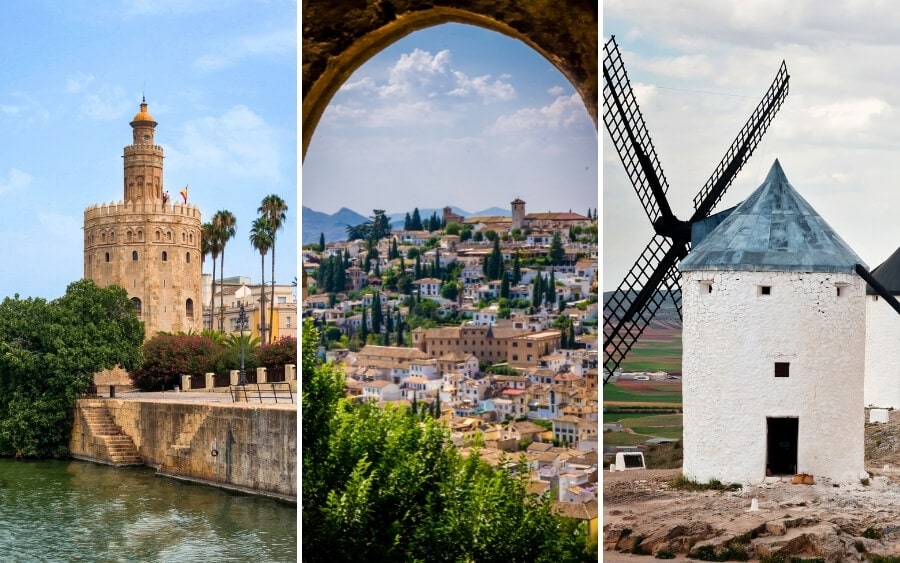
While a road trip in Spain might be the best way to explore the country from top to bottom, you can still see a lot when travelling on the country’s railway network. This itinerary focuses on the southern part of the country: the culturally distinct and utterly mesmerising Andalusia region.
Spain’s capital is a natural place to begin. If it’s your first visit, pause for a day or two to visit the most important landmarks in Madrid before boarding a train to Toledo. Half an hour later, you’ll find yourself walking the streets of one of Spain’s most magical and history steeped cities . For all the best things to do in the imperial city, see this guide to Toledo .
For the remainder of your Spain train itinerary, divide your time between Cordoba (4 hours from Toledo by train), Seville (40 minutes from Cordoba) and Granada (1.5 hours from Seville). Each of these three Andalusian cities has its particular charms and fair share of awe-inspiring landmarks, most notably the Mezquita in Cordoba, the Alcazar in Seville and the one and only Alhambra in Granada.
If you have more time, finish with a couple of days on the coast or head west to Lisbon to continue travelling around Portugal by train.
Poland & Germany: Krakow to Berlin
- Route: Krakow – Wroclaw – Dresden – Berlin
- Designed by: Kami from Kami and The Rest of The World
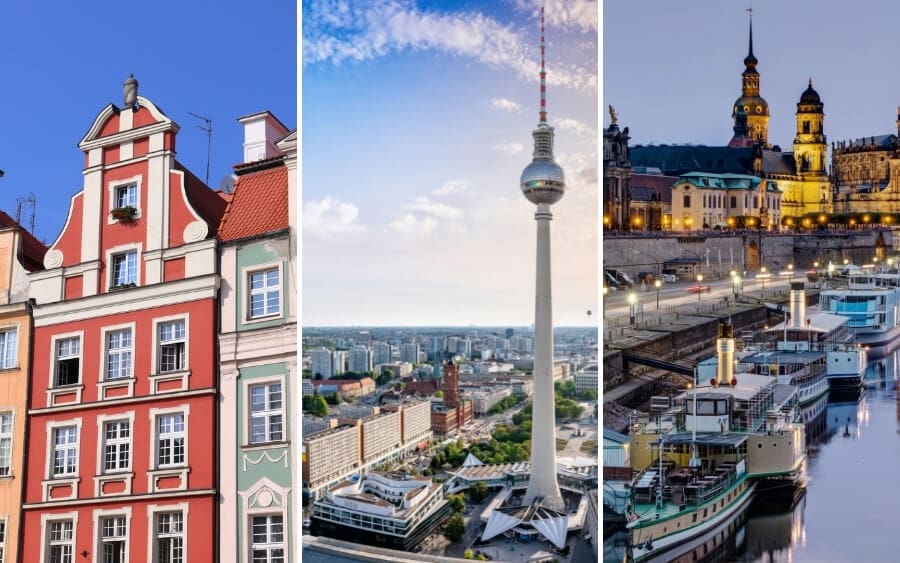
This train journey takes you through some of the most beautiful and interesting cities of Poland and Germany and allows you to see some lesser-known yet amazing corners of Central Europe.
Featuring historical sites, beautiful nature and hip spots, the itinerary is good for anyone who’s interested in culture and history but also wants to venture beyond the expected.
Start your journey in Krakow, the former capital of Poland and one of the most beautiful cities in Europe. You need at least two days to see all the main sights, starting with the Old Town and the Wawel Castle, the riverside and the Jewish quarter, Kazimierz. Krakow is a perfect base for side trips, the most popular being the UNESCO-listed salt mine in Wieliczka and Auschwitz-Birkenau concentration camp. Both are easily reached by train.
From Krakow, continue by direct train to Wroclaw (3 hrs), one of the main cultural capitals of Poland. Set aside a full day to see the city, taking your time to fall in love with the colourful Market Square and to find as many quirky dwarfs as possible. In the evening be sure to find the magical ‘neon yard’.
From Wroclaw, you can easily explore part of the Lower Silesia region – probably the most interesting part of Poland. Easy train trips include beautiful Swidnica , with its spectacular 17th-century Church of Peace (a UNESCO World Heritage Site), the stunning Ksiaz Castle (the third largest castle in Poland), numerous spa towns, and the Sudety mountains.
From Wroclaw, continue by train toward Dresden but stop on the way in Goerlitz, the city divided by the Polish-German border. It’s one of the prettiest and best-preserved German cities and you’ll surely recognise it from numerous movies, including The Grand Budapest Hotel and Inglourious Basterds . The train trip from Wroclaw to Dresden takes a little over 3 hours and Goerlitz is more or less halfway.
Even though the city was badly destroyed during WWII, Dresden has some of the most impressive Baroque architecture you can find in Europe. You need two days to see it properly, but the main highlights of the city are conveniently located in the centre.
Finish your trip in the cool and vibrant capital of Germany, Berlin (2 hrs by train from Dresden), where you can enjoy a variety of attractions – from historical monuments and mementos of 20th-century world events – and alternative sites such as Kreuzberg.
The Swiss Alps: Geneva to Tirano via the Glacier Express
- Route: Geneva – Bern – Interlaken – Zermatt – St Moritz – Tirano
- Designed by: Allan from It’s Sometimes Sunny in Bangor
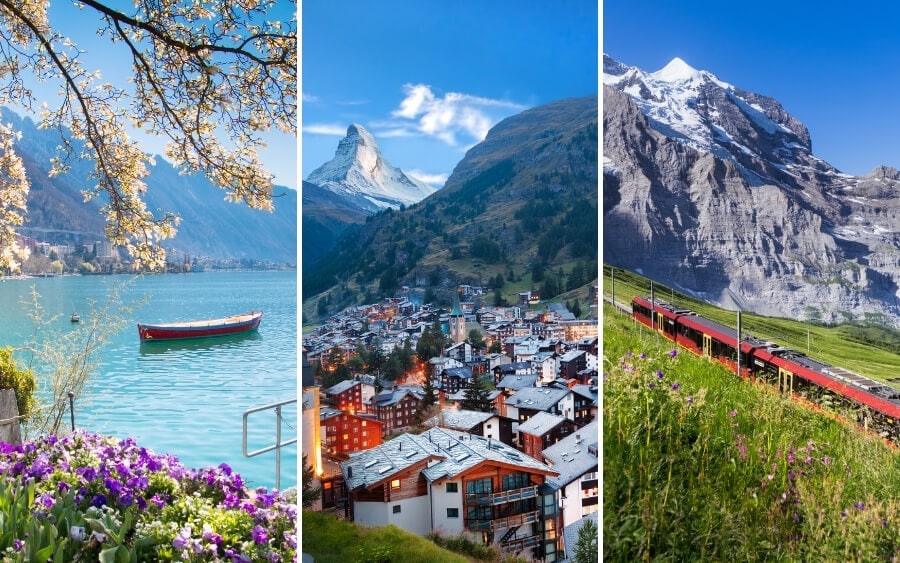
This 10-day itinerary is breathtaking all year round – but at the same time it’s winter-inspired as it follows some of the highest peaks in Europe and takes you to some of the most popular destinations for winter sports in the Swiss Alps.
Many of the stops are hard to reach, so the most convenient start is Geneva near the France/Switzerland border.
A day or two is enough time to explore Geneva, the largest city in Switzerland, before forwarding to the charming administrative capital of Bern (2 hrs). You can cover the main attractions of this small but beautiful city in a day – the connecting bridges are a must see – before the next stretch to Interlaken (1 hr), a resort town known as the ‘adventure capital of Switzerland’.
Interlaken is an ideal base to explore the many surrounding mountain peaks including the famous Jungfrau. The 3-Day Jungfrau Travel Pass offers great value for money when exploring this area’s mountains by train and cable car.
This Swiss rail itinerary then takes you high into the alps to visit some of the most beautiful winter resort towns in the world. The first is Zermatt (2.5 hrs), set beneath the majestic Matterhorn (AKA the Toblerone mountain). Cable cars from Zermatt whisk you up towards the peak.
A day is long enough to explore the town before joining the Glacier Express , one of the most scenic train rides in the world. After 7 hours riding the rails through mountainous terrain you’ll finally reach St Moritz where you can connect to yet another breathtaking train, the Bernina Express, to cross into Italy. The trip ends at Tirano (4 hrs). Spend a day in this resort town before continuing on to Milan or Turin for onward travel.
The Balkans by Train: Zagreb to Bar
- Route: Zagreb – Belgrade – Bar
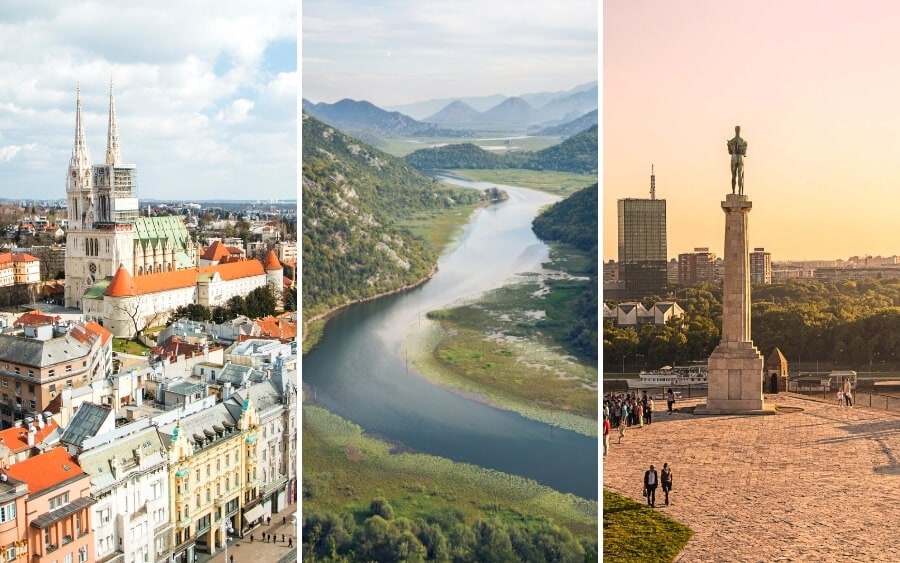
Bus is by far the preferred way to travel around the Balkans region – but there is one rail route that should be on every traveller’s radar. The train from Belgrade (Serbia) to Bar ( Montenegro ) is easily one of the most scenic and yet underrated in all of Europe.
With 10 days up your sleeve, you can tackle this full-day journey (the day train is highly recommended) plus add a few days in Croatia’s capital, Zagreb , at the beginning of your trip.
Zagreb is often overlooked in favour of Venetian cities along the Dalmatian Coast – yet Croatia’s capital is easily one of its most beautiful destinations , albeit in a slightly unconventional way. Zagreb is loaded with history, street art and beautiful churches, including the iconic St. Mark’s, with its colourful tiled roof.
After a day in Zagreb, board a train for Serbia’s capital, Belgrade (6 hrs). The former administrative centre of Yugoslavia is a must-visit for those interested in modern history and Brutalist architecture. Spend a morning at Avala Tower , climbing up to the viewing deck for a panorama, cycle around the concrete jungle that is New Belgrade, and wander the old neighbourhood of Zemun. House of Flowers, the final resting place of Josip Broz Tito, is a fascinating visit – but if you only have time for one museum in Belgrade, make it the Tesla Museum.
Completed in 1976 and officially opened by President Tito himself, the Belgrade to Bar train passes over no fewer than 435 bridges on its way to the Adriatic Coast. It’s all about the journey: The part of Montenegro the train traverses is absolutely stunning , especially when the train passes over marshy Lake Skadar.
When you arrive in Bar, make a detour to Stari Bar to explore the ruined old town and the aqueduct before finding a spot to relax on the beach. Pleasant swimming beaches can be found down the coast in Ulcinj – itself a good jumping off point for travelling into Kosovo or Albania .
The Netherlands’ Randstad: Rotterdam to Amsterdam
- Route: Rotterdam – Den Haag – Amsterdam
- Designed by: Erin from Pina Travels
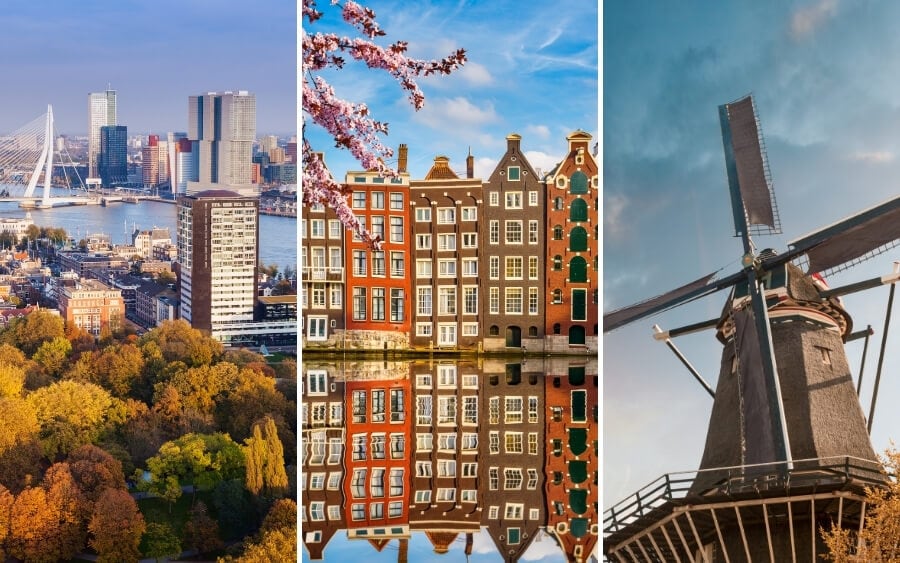
This European train route brings you to three beautiful Dutch cities within a region of the Netherlands known as ‘The Randstad’, the most heavily populated and developed part of the country.
On this route, you’ll get to experience the best of Dutch culture , architecture, history and food. Travel times between cities are short and direct, which makes this an easy train itinerary with maximum time to explore each destination.
The route begins with three days in Rotterdam. During WWII, Rotterdam was completely flattened by bombing. The city has since been rebuilt, and is now a modern metropolis that’s packed with history, art, good food and amazing architecture. While in Rotterdam, check out the city’s famous ‘cube houses’ to walk among the blocks and visit the Show Cube Museum . You’ll also want to check out the Erasmus Bridge, the Van Nelle Factory (a UNESCO World Heritage Site), and Market Hall, where you can enjoy Dutch art and food all under one roof.
From Rotterdam, take a quick 25-minute train ride to your next destination, Den Haag (The Hague). Plan to spend three days in this city, which is known for being the seat of the Dutch government since 1588. Den Haag is home to the Gothic-style Binnenhof complex and the 16th-century Noordeinde Palace, which is one of the Dutch Royal Family’s official palaces. You’ll also find plenty of museums, churches, and restaurants that are worth visiting.
Next, take a 45-minute train ride from Den Haag to the capital of the Netherlands, Amsterdam to witness the artistic heritage, elaborate canal system and iconic narrow houses for yourself. You’ll want to spend four days visiting popular attractions plus experiencing alternative things to do in Amsterdam .
Visit the Rijksmuseum to see the work of the Dutch masters and visit the Anne Frank Museum to learn the story of the Jewish wartime diarist. When you’re hungry, be sure to drop by Upstairs Pannenkoekenhuis to try some classic Dutch pancakes!
Portugal by Train: Lisbon to Santiago de Compostela
- Route: Lisbon – Coimbra – Porto – Santiago de Compostela
- Designed by: Or from My Path in the World
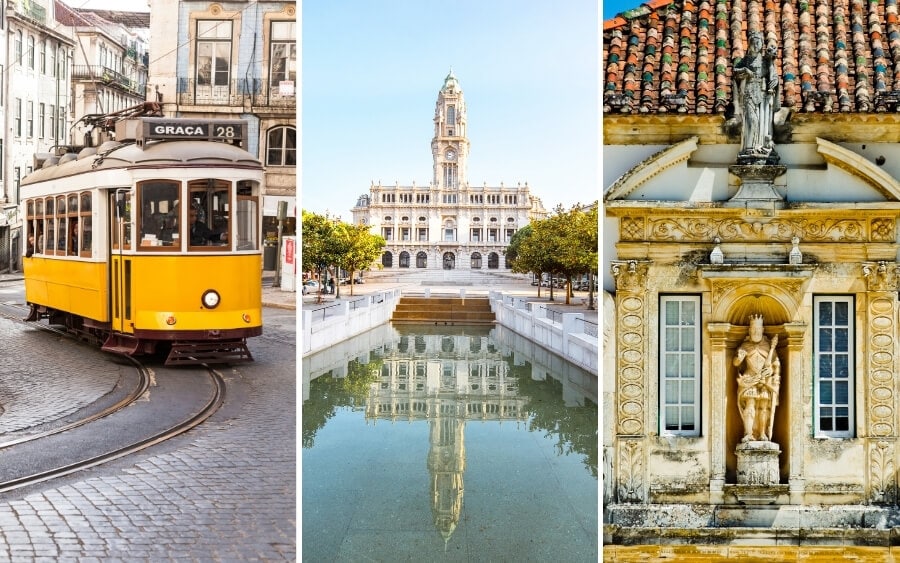
Covering three of the biggest cities in Portugal along with the endpoint of the famous Camino de Santiago pilgrimage, this route is perfect for history and culture lovers, as well as for anyone looking to immerse themselves in Portugal’s laid-back yet lively atmosphere , taste great food and wine, and meet friendly locals.
Lisbon is a contagiously vibrant city and it’s worth dedicating four days to experience the best of it, including its landmarks, museums, enchanting neighbourhoods and culinary and nightlife scenes. Some of the must-sees are Sao Jorge Castle, the National Tile Museum, Belem Tower, and the Santa Luzia Lookout Point – but the bucket list goes on and on.
A 2-hour train ride will take you to Coimbra, a postcard-perfect city on the Mondego River. Coimbra is known for its 13th-century UNESCO-Listed university, one of the oldest in Europe . While touring it, it’s possible to visit the Baroque Joanine Library, the Botanical Garden, gorgeous courtyards, and much more.
Other things to do here include visiting Sé Velha (Coimbra’s cathedral), admiring the Manga Cloister, and watching a Fado de Coimbra concert. This music genre originated in Lisbon but Coimbra has developed its own typical style.
After two days, continue to Porto (1.5 hrs), another must-visit place in Portugal . Spend another two days in this city, a fantastic base to explore the Douro Valley if you feel like hiring a car. Visit Livraria Lello (an astounding bookstore), wander through the Crystal Palace Gardens, visit the Bolsa Palace, and cross the bridge over to Gaia to tour some top port wine cellars.
Lastly, Spain’s train company, Renfe, can take you from Porto to Vigo (2.5 hrs) and from Vigo to Santiago de Compostela (50-90 mins), where you can spend your last day and a half. As the endpoint of the pilgrimage route Camino de Santiago, its highlight is, of course, the impressive UNESCO-Listed cathedral, built in the 11th-13th centuries.
Mainland Greece: Athens to Thessaloniki
- Route: Athens – Meteora – Thessaloniki
- Designed by: Chrysoula from Greece Travel Ideas
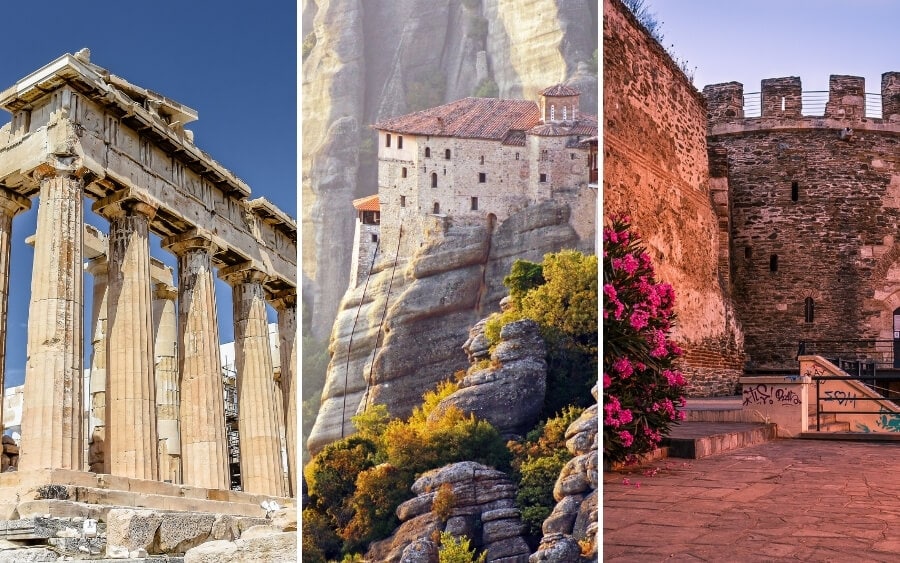
This 10-day train journey in Mainland Greece covers the country’s two major cities and the natural wonder of Meteora.
The train ride from Athens to the port city of Thessaloniki via Meteora is dramatic, as it passes through narrow valleys and steep mountainous countryside. The greatest treat is the chance to discover Meteora, with its amazing rock formations and six monasteries perched on high rocky crags.
Athens is rich in archaeological treasures that are easy to visit on foot. Other things to see include the Archaeological Museum, the various markets, and the Changing of the Guard ceremony in Syntagma Square. Four days or longer is required to enjoy all of these attractions.
The train from Athens to Meteora (Kalambaka station) leaves Larissis Athens station in the early morning and takes 4.5 hours. The journey passes through beautiful mountainous countryside with narrow valleys. It’s quite a long walk to the first of the monasteries and they are spread out across a wide area, so it’s best to take a taxi or pre-book a guided Meteora tour.
Most visitors to Meteora stay for two days in nearby Kastraki or the larger town of Kalambaka. All 6 of the monasteries are open to the public and accessible via stone-cut steps, but it’s advisable to limit yourself to 3-4 per day.
The train journey from Kalambaka to Thessaloniki takes 3.5 hours. Thessaloniki is an attractive port city with a rich history and reputation for good food, so it’s ideal to spend at least 2-3 days here. Thessaloniki has several notable Byzantine, Roman, Ottoman, and Sephardic Jewish monuments. In contrast, there are lovely beaches within easy reach, good shopping and a vibrant nightlife.
Czechia & Germany: Prague to Munich
- Route: Prague – Nuremberg – Munich
- Designed by: Riana from Teaspoon of Adventure
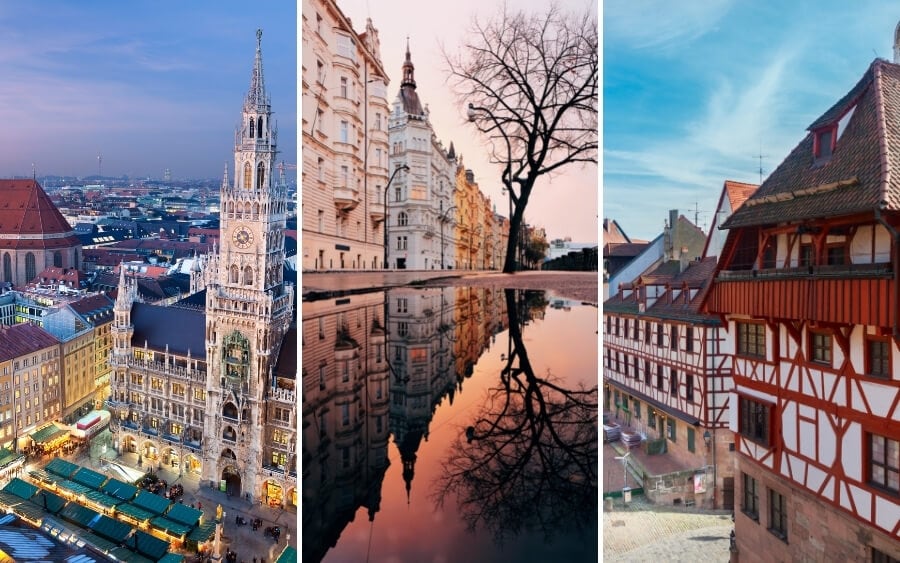
This 10-day train journey is all about beautiful buildings, rich history and – if you’re a fan – drinking lots of delicious beer!
Each of these cities has something special to offer and no shortage of things to keep you entertained. They’re also all quite close to one another, so you won’t waste too much time getting from one spot to the next.
The trip starts in Prague , one of the most beautiful capital cities in Europe, where you’ll spend three nights. On day one, walk through some of Prague’s most beautiful neighbourhoods before checking out Vysehrad castle in the afternoon. End your first day trying Czech food classics such as pork, dumplings and of course, beer!
Start the second day with a walking tour through the Old Town and Wenceslas Square, take photos on the Charles Bridge, then enjoy a river cruise in the evening. On your third and final day in Prague, see the John Lennon Wall, visit the famous Prague Castle, and end with a beautiful view from Letna Beer Garden.
From Prague, head out on a 6-hour train journey to Nuremberg, where you’ll spend three nights. Your first day in Nuremberg should be dedicated to exploring the Old Town. Don’t miss Weissgerbergasse, a street filled with historic timber houses.
Take a guided tour of the Nuremberg Memorial to learn more about the Nuremberg Trials and visit the courtroom where the trials took place. For more history, visit the Nazi Rally Grounds and Documentation Centre on the afternoon of day two. For something lighter, admire the artwork at Albrecht Dürer’s House and visit the Imperial Castle of Nuremberg.
To finish, take a one-hour train ride from Nuremberg to Munich for your final 4 days. Get your beer fix at a local beer hall or garden, tour the beautiful Old Town, including Marienplatz and Frauenkirche, shop the food markets, and visit local museums.
On your last day in Munich, head out on a day trip. Visit Dachau, the oldest and largest concentration camp in Germany for an important tour through history, or head to Neuschwanstein Castle, the inspiration behind Sleeping Beauty .
Ukraine’s Big Three: Kiev to Lviv
- Route: Kiev – Odessa – Lviv
- Designed by: Amy from Moonshine and Minibuses

This itinerary hits the three most-visited cities in Ukraine , giving you an eclectic overview of Europe’s biggest country.
While you can take the day train in order to enjoy the views, Ukraine’s night trains are the recommended affordable way to cover a lot of ground quickly. If you’re nostalgic, the overnight trains are often a trip into the past!
Landing in Ukraine’s capital will launch you right into the middle of one of the most dynamic countries in Europe. From colourful medieval legends to stoic Soviet architecture , centuries of history are on display at every corner.
With four days in Kiev, join the pilgrims in the monastery caves of Lavra Pechersk and peek at mummified monks, explore the luxurious private residence of ousted President Yanukovych, and dine at restaurants headed by internationally renowned chefs.
Just when you’re getting into the groove of Ukraine, head to Odessa, the Pearl of the Black Sea, travelling either by intercity or overnight train. Odessa has a reputation for being a party town (that it gleefully lives up to), but in addition to the beach clubs and Gilded Age bars, make sure you take some time to learn about the history of the city. Established under Catherine the Great, it has a diverse and dramatic background.
After two or three days of living life to the fullest in Odessa, head towards Lviv. This city is nearly 800km from Odessa, so it’s best to take the overnight train. Considered a cultural hub, Lviv is a tapestry of idyllic European scenes, from its cobblestone streets to its skyline of church spires. Wander down alleys, pop into coffee shops, and peer into the myriad of churches.
End your trip to Ukraine at an underground bunker-style pub, a craft beer ‘theatre,’ or the regal opera house (or even the cocktail bar below it!).
Transiberian Express: Siberia to St. Petes
- Route: Irkutsk, Siberia – Moscow – St. Petersburg
- Designed by: Sinead from Map Made Memories
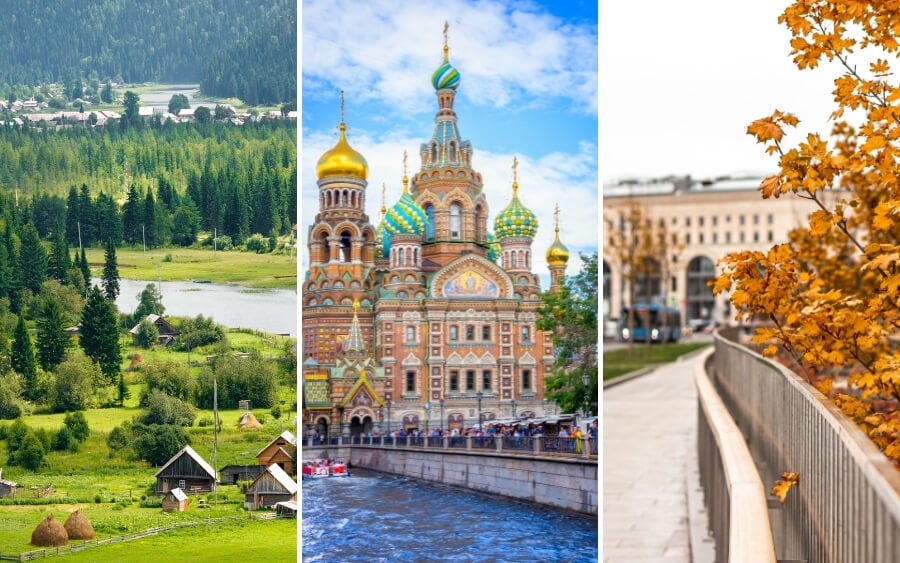
This itinerary offers something for everyone as it combines historic sites and the fantastic architecture of the big cities with small-town rural Russia, nature trails and scenic landscapes.
Spend a day exploring Irkutsk on foot following the city’s ‘green line’, a tourist trail painted on the pavement that covers points of interest around the city. Take a full day trip to Lake Baikal 70km away. Shop in the fisherman’s market at tiny Listvyanka, visit the wooden Church of St Nicholas, take a boat trip on the world’s deepest lake, or enjoy a scenic hike in the hills surrounding the lake.
The train from Irkutsk to Moscow takes around three-and-a-half full days following a popular stretch of the Trans-Siberian Railway route.
When you arrive in Moscow, spend 3-4 days visiting the imposing Kremlin, Lenin’s Tomb and the incredible Armoury. Tour opulent churches such as the iconic St Basil’s Cathedral and the Cathedral of Christ the Saviour.
For an amazing view of sprawling Moscow, head to the deck on the top of the Central Children’s Store, an enormous toy store in the centre. Spend a day riding the elaborately decorated Russian Metro system and make a stop at VDNKh to view the sculptures and to visit the Museum of Cosmonautics.
The journey from Moscow to St. Petersburg takes 4 hours on the fast train or 8 hours on a slower overnight train.
Enjoy a leisurely trip on St. Petersburg’s canals before exploring the elaborate Winter Palace (try to book tickets in advance as there are usually long queues). Make time to visit the ornate Church of the Spilled Blood, decorated from floor to ceiling in tiny, colourful mosaics depicting intricate biblical scenes.
The Best of Britain: London Loop
- Route: London – Bath – Cardiff – Liverpool – Edinburgh – York – London
- Designed by: Tracy from UK Travel Planning
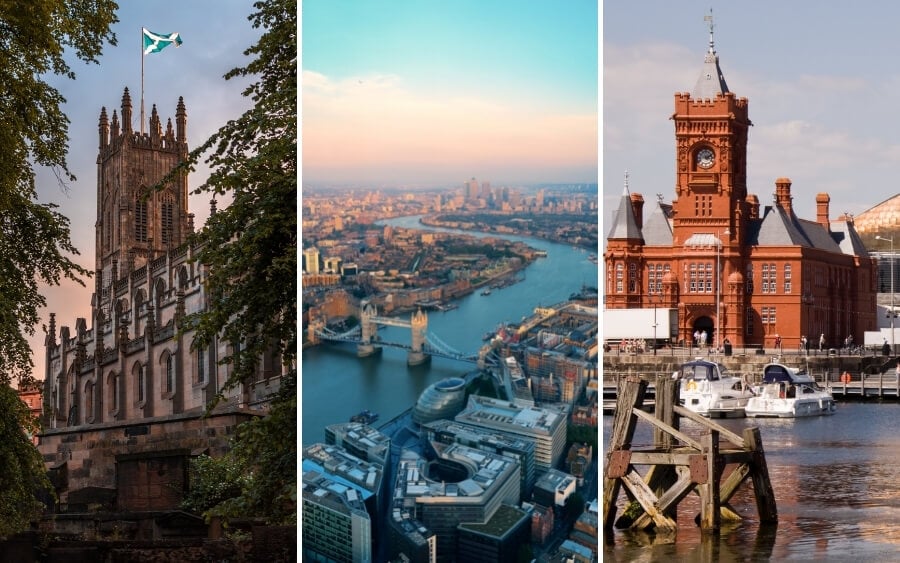
This 10 day best of Britain by rail itinerary is the perfect way for first-time visitors to explore some of the most popular cities across Britain’s three nations. In addition to visiting the three capitals, the itinerary also includes a trio of England’s most beautiful and interesting smaller cities.
A round trip itinerary, the journey starts and ends in London. To start, explore the sights, landmarks and attractions of the UK capital . A guided tour may be the best option to make the most of your day.
Departing from London, head to the UNESCO World Heritage Listed city of Bath. Travel time by train between the cities is around 1.5 hours with direct services departing from London Paddington to Bath Spa. The main highlights of Bath include the Roman Baths, Bath Abbey and the Royal Crescent. Sally Lunn’s is a popular cafe for a cake and a cuppa. On your third day, continue exploring Bath or jump on the train to Salisbury and Stonehenge.
After spending two nights in Bath, travel to the Welsh capital Cardiff (1 hr). In Cardiff, visit the castle, stroll the centenary walk or join a Gavin & Stacey or Dr Who themed tour.
Travel from Cardiff to Liverpool (3.5 hrs) and spend an afternoon exploring the main sights of the city including Albert Dock. Another option here is to take a Beatles tour and visit the childhood homes of Paul McCartney and John Lennon.
The Scottish capital, Edinburgh, fills the itinerary for days 6-7. There are plenty of things to do and see over two days, including Edinburgh Castle, walking the Royal Mile, shopping on Princes Street, and enjoying the views from Arthur’s Seat.
Then, travel from Edinburgh along the Northumberland Coast and through the cities of Newcastle and Durham before arriving in York (2.5 hrs). Walk the city walls, visit York Minster, learn about the city’s history at the Jorvik Viking Centre, and shop on the Shambles. For the best afternoon tea, head to the iconic Bettys Tea Rooms before travelling back to London on day 10 (2 hrs) to complete your loop.
To put a festive spin on this UK road trip, consider timing your journey to spend Christmas in London .
Norway by Train: Bergen to Oslo via the Flam Line
- Route: Bergen – Voss – Myrdal – Flam Fjord – Gudvangen – Laerdal – Flam – Myrdal – Oslo
- Designed by: Tracy from Tracy’s Travels in Time
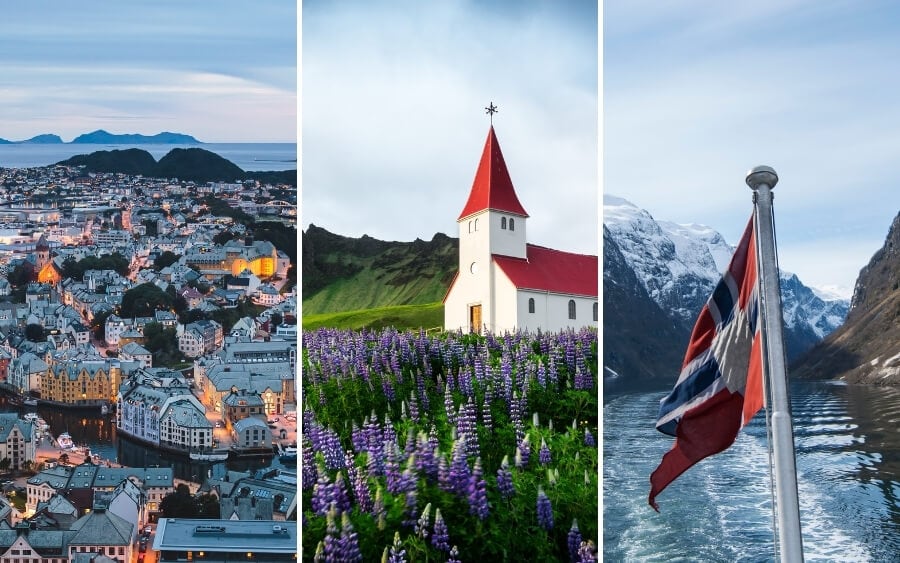
This rail itinerary from the coastal city of Bergen to Norway’s capital, Oslo, is perfect for those who want to experience the breathtaking beauty of this Scandinavian country. Train lovers will enjoy travelling on the Flam railway, which is recognised as one of the most scenic rail journeys in the world.
Spend the first couple of days exploring the city of Bergen. Not-to-be-missed highlights include the UNESCO World Heritage Site of old Hanseatic wharf and the buildings at Bryggen, Bergen’s fish market, and a ride on the funicular to Mount Floyen for spectacular views of the city.
On day three, hop on the train to the small resort town of Voss. The journey takes 1.5 hours with beautiful views along the way. If you’re visiting in summer, enjoy the hiking trails around Voss. In winter, make sure you book accommodation in advance as Voss transforms into a popular ski resort.
After spending the night in Voss, take the train to Myrdal (1 hr) where you alight and transfer to the Flamsbana Line. This is one of Norway’s most popular attractions, so book your tickets in advance.
As well as the Flamsbana, there are a few things to do and see in Flam including the museum – but the main attraction is the fjord on which Flam sits. Catch a boat and enjoy a spectacular scenic trip along two of Norway’s most famous fjords to the neighbouring village of Gudvangen.
The next few days offer the perfect opportunity to explore the local area. Stay in Gudvangen overnight before catching a bus to the nearby town of Laerdal via one of the longest road tunnels in the world.
Relax for a few days, enjoy a few hikes or cycle around. Explore the Gamle Laerdalsoyri village in Laerdal, whose wooden houses date back to the 18th and 19th centuries. The Borgund Stave Church near Laerdal is the best preserved stave church in Norway and can be reached by bus or bicycle.
On day eight, take the bus to Flam (50 mins) and jump onto the Flam railway back to Myrdal. Trains run from Myrdal to Oslo up to four times a day, but be sure to check connections.
The final two days of this itinerary are spent in Norway’s capital, Oslo. Explore the city’s museums (fans of artist Edvard Munch can experience his works at the new Munch Museum) and enjoy the architecture, cafes and foodie culture .
Northern Spain: Madrid to Barcelona via Basque Country
- Route: Madrid – Bilbao – San Sebastián – Zaragoza – Barcelona
- Designed by: Vicki from Vicki Viaja

While many visitors to Spain only travel back and forth between the most popular destinations, this Spain 10-day itinerary leads you to the north of the country – an area known for its great food and unique culture.
The itinerary starts in the capital of Spain, Madrid. In three days, you can get a good first impression of Spanish culture and visit essential sights such as the Plaza Mayor and the Almudena Cathedral.
The journey continues to the north of Spain. In Bilbao (4-5 hours from Madrid by train), you can experience the unique culture of the Basque Country. Bilbao is also the ideal destination for art lovers. Besides the world-famous Guggenheim Museum, the art museum Museo de Bellas Artes de Bilbao awaits you.
San Sebastián, also called Donostia, is another example of a great city in the Basque Country. After taking the train from Bilbao (2 hrs), get to know the northern beaches. The most famous in the area is the Playa de la Concha. Don’t miss the sunset .
Continue 3 hours by train to Zaragoza, a beautiful city in Spain that is unfortunately overlooked by most travellers. The city is built in the typical Spanish style and its restaurants allow you to try lots of delicious dishes from the region. Particularly impressive is the Pilar, the city’s basilica, which is located in the center. It’s the largest of its kind in Spain and is considered one of the most important churches in the country.
The last stop is in the Catalan capital Barcelona , 90 minutes by train from Zaragoza. Spend a few days relaxing on the beach, soaking up Catalan culture, and discovering some of the most impressive buildings of the Modernisme movement, including the Sagrada Família, La Pedrera and Casa Batlló.
East Meets West: Istanbul to Bucharest
- Route: Istanbul – Edirne – Plovdiv – Sofia – Bucharest
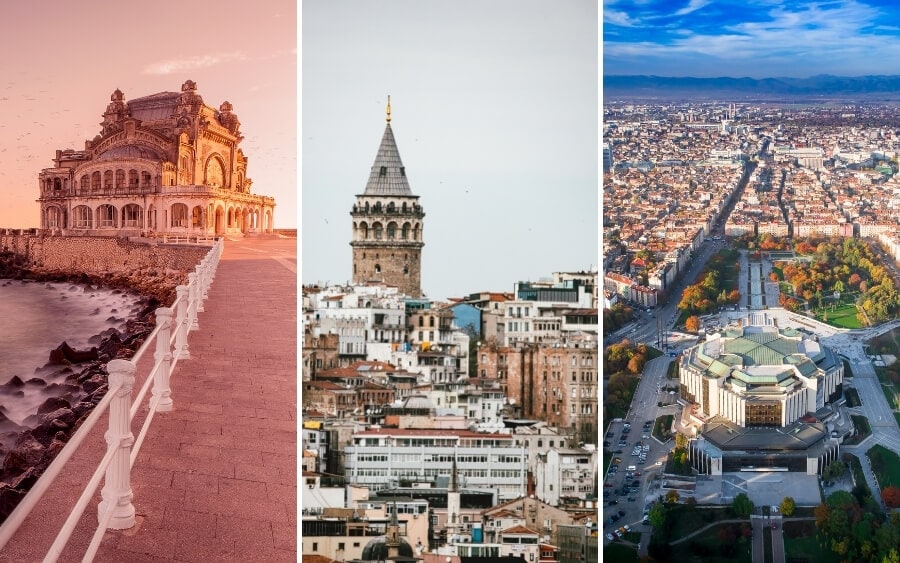
This train journey is unique because it crosses continents, taking you from Istanbul from East to West, Asia to Europe, and through to Bulgaria and Romania. Trains in this part of Europe might be a little slower and less comfortable than what you’re used to, but that’s all part of the fun.
Start your epic rail journey the best way possible by crossing the Bosphorus into Europe. Istanbul is a huge, heaving city. Whatever time of year you visit – winter or summer – and however you choose to explore it – by focusing on the highlights, by wandering the less-touristy neighbourhoods or by letting your stomach guide you between the best restaurants and markets – you really can’t go wrong. Just make sure to set aside time for the Hagia Sophia and Grand Bazaar.
Before leaving Turkey , make an overnight rest stop in the city of Erdine (4 hours from Istanbul by train) to see the stunning 16th-century Selimiye Mosque before crossing the border into Bulgaria. As you continue moving north, you’ll see how the historic Ottoman influence has permeated the Balkans region.
While Sofia, Bulgaria’s capital city, has its draws and is worthy of a day or so of your time, Plovdiv is where you should direct most of your attention. One of the oldest cities in Europe, Plovdiv counts an immaculate Roman Amphitheatre and exquisite Bulgarian Revival architecture among its many virtues. To get there, you’ll need to take a bus or local train from Sofia.
The Sofia to Bucharest leg over the Danube river is another highlight of this itinerary – just be warned that it takes a full day to reach Romania’s capital and in the winter months , you may need to change trains at the border.
Devote some of your time in Bucharest to learning about Romania’s tumultuous recent history and don’t leave without visiting the vibrant Piata Obor market . One of the best things to do in winter is hop between the many cafes and wine bars, an experience that will show you a different side to the city.
Transylvania by Train: Bucharest to Sibiu
- Route: Bucharest – Brasov – Sighisoara – Sibiu
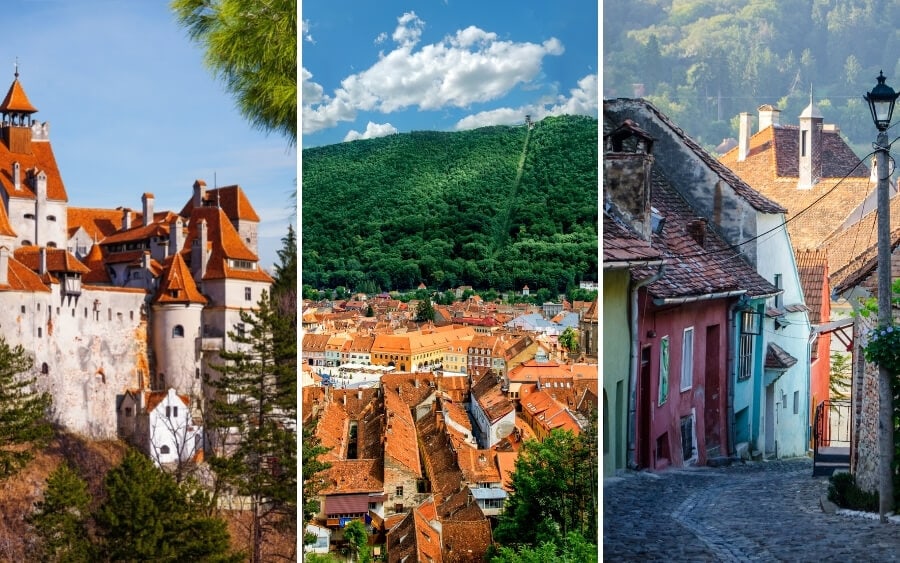
A perfect extension on the previous itinerary (or a wonderful rail journey all on its own), Transylvania by train is a slow travel experience that will allow you to soak up the magnificent landscapes and wild nature this part of Romania is known for.
This trip is all about the fortified churches, Saxon cities and magnificent castles, with a side of hiking (or skiing) plus plenty of opportunities to immerse yourself in Transylvania’s unique culture along the way.
A road trip through this area of the Balkans will give you more flexibility, but the romance and nostalgia of the train can’t be beat. Connections are reasonable, times fast and fares extremely affordable, making this a great choice for budget-conscious travellers.
Departing from Bucharest, take an early morning train (1.5 hrs) to the small city of Sinai to visit the awe-inspiring Peles Castle. As you break through into mountainous territory and enter Transylvania proper, your first stop is Brasov, another hour north by rail. Brasov is the first of three charming cities on this itinerary and warrants at least two full days, with an afternoon set aside for visiting Bran Castle.
The fortified city of Sighisoara (4 hours by train) is smaller than Brasov but even more charming. Walk the old walls, admire the craft guild gates and climb up both the bell and church tower for a view.
Sibiu (3 hrs) is known for its distinctive vernacular architecture and grand main square – there are towers here that you can climb for an aerial view, too. Connections back to Bucharest are easy to find, or you can continue west to Timisoara then cross into Northern Serbia .
Classic Italy: Venice to Rome
- Route: Venice – Florence – Rome
- Designed by: Samantha from The Wandering Wanderluster
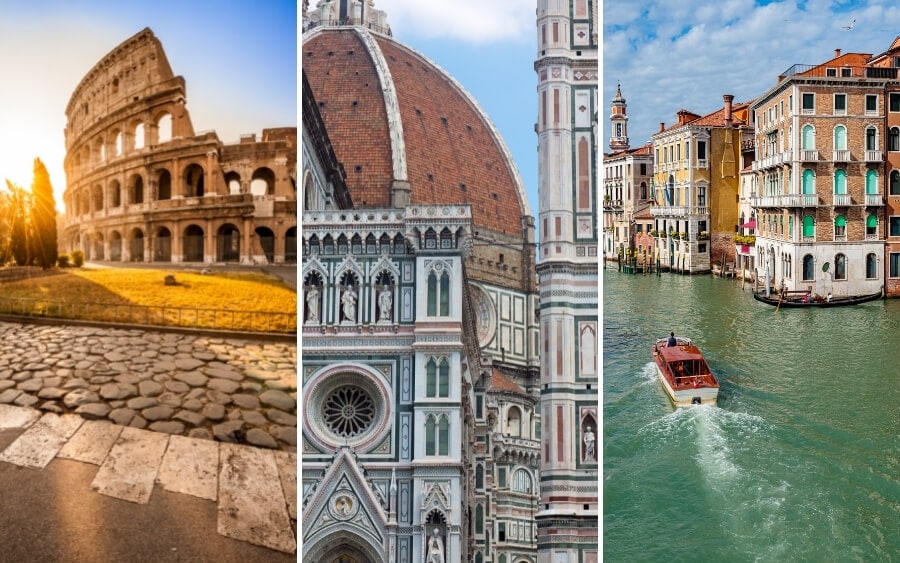
Train travel is arguably one of the most romantic ways to travel. So why not travel by train through three of Italy’s most romantic cities?
Venice, Florence and Rome are three of the most-visited cities in Europe and fortunately they are very well connected by Italy’s high speed rail network, which means you can easily visit them all in 10 days.
The beauty of this short Italy itinerary is that it can be done in either direction and thanks to the frequency of train departures, you can pretty much leave and travel onto your next destination anytime you want.
Start your trip in the serene ‘Floating city’ of Venice in the north, known for its charming canals, gondolas and beautiful architecture that lines the main artery through the city, the Grand Canal. There is a lot to see in Venice but for first timers, three days is plenty for the main highlights.
Jump on a 2-hour train and arrive in the heart of the Renaissance city of Florence for another three-day stay. Art lovers will trip over their tongues at the sheer volume of masterpieces to see in the city, while foodies will want to devour their body weight in Bistecca alla Fiorentina and drown themselves in Tuscan wine.
Finally, head to Italy’s magnificent capital city, Rome, where there are as many ancient ruins as there are churches – the main must-visit being St Peter’s Basilica inside Vatican City.
Three Great Capitals: Paris to London
- Route: Paris – Brussels – London
- Designed by: Dymphe from Dymabroad
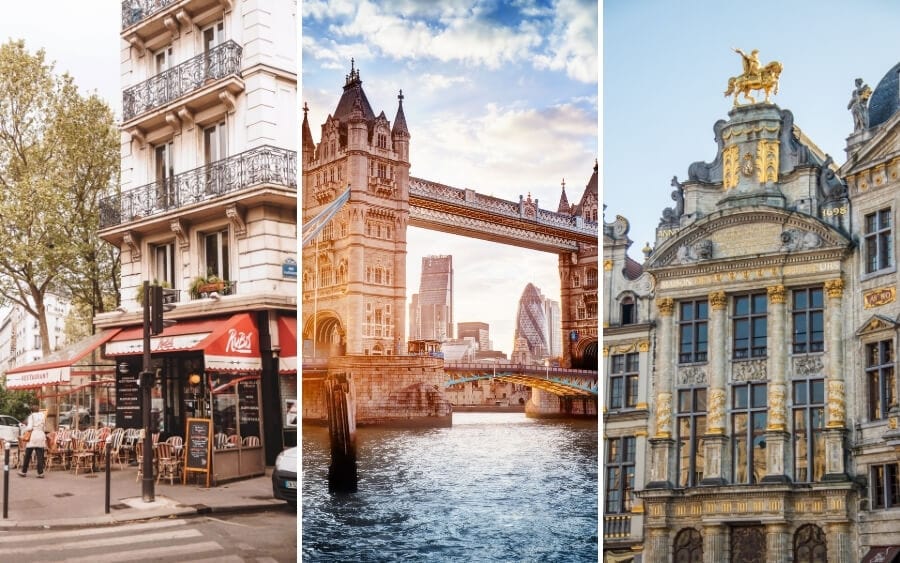
This is the perfect itinerary by train for visiting three of the greatest European capitals.
Start in the French city of Paris where you can glimpse the Eiffel Tower, Louvre Museum and Sacré-Cœur in Montmartre. To explore the highlights of the city, three days is a good amount of time.
The train journey from Paris to Brussels takes about 1.5 hours. The capital of Belgium houses some of the institutions of the European Union. After two days, continue to London (2.5 hrs) for Big Ben, London Eye, Tower Bridge, and Oxford Street.
There are plenty of Instagrammable places in London to check out. Three days in the city is plenty of time to see the most iconic sights.
Christmas Market Route: Frankfurt to Metz
- Route: Frankfurt – Cologne – Aachen – Liege – Metz
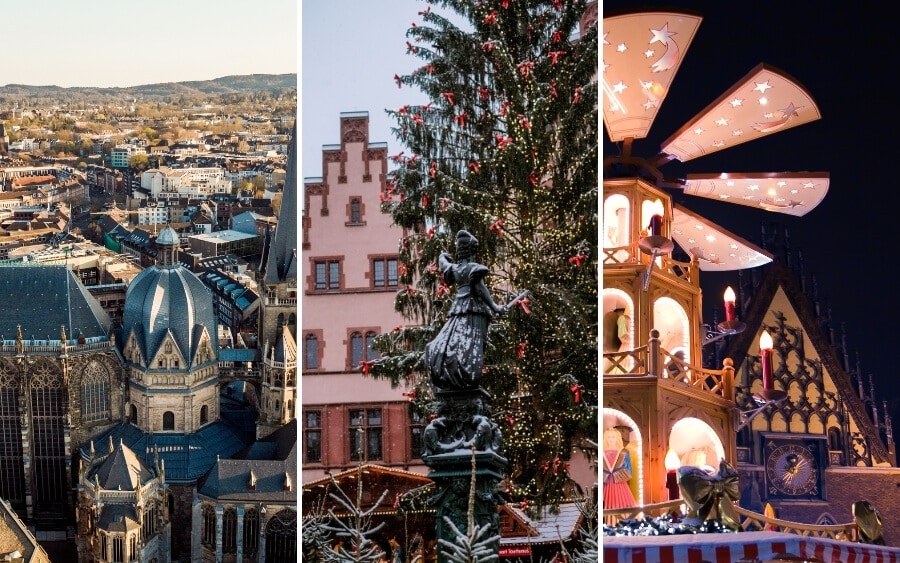
This festive-themed train trip around Europe takes you between five of the region’s most atmospheric Christmas Markets in Germany, Belgium and France. Travel times are short, so you can easily accomplish this route while the markets are in full swing.
Frankfurt’s Christmas Market dates back to 1393 and is one of Germany’s largest and most spectacular festive events. While you wait for Römerberg square to transform into an open-air market, spend your days in Frankfurt roaming the riverside and the reconstructed Altstadt Old Town. For more things to do in Frankfurt, see this list .
If you’re looking for something special to buy from the market in Frankfurt, a locally made blue-and-white pitcher jug is a great choice. Save some room in your suitcase, though, because there’s lots more shopping to come.
Cologne (60 minutes from Frankfurt by train) and Aachen (30 minutes from Cologne by train) boast two more gorgeous German-style Christmas Markets.
When your time in Germany draws to a close, cross the border by train to visit Liege (20 mins) where you’ll find yet another classic market, this time with Belgian souvenirs and food . Finish with a scenic train trip through Luxembourg to the French city of Metz (4 hrs), where a special gastronomic market awaits.
More Europe travel inspiration
- Europe road trip itinerary inspiration : 13 ideas for winter
- Foodie experiences in Europe
- Best places to go in Europe in fall
- Train travel packing list
Awesome information. I am going to use this guide to enhance my travels abilities.
So happy I came across this post! What a great list! I really like the look of the Swiss rail trip.
Leave a Reply Cancel reply
Your email address will not be published. Required fields are marked *
- Subscribe to future posts
Travel Europe on a Budget
The Savvy Backpacker
City Guides .\33 a132798-3f3b-4585-954d-7e70cf863447{fill:#231f20}
Complete guide to train travel in europe | how to travel europe by train.
Our step-by-step guide to traveling Europe by train.
Transportation
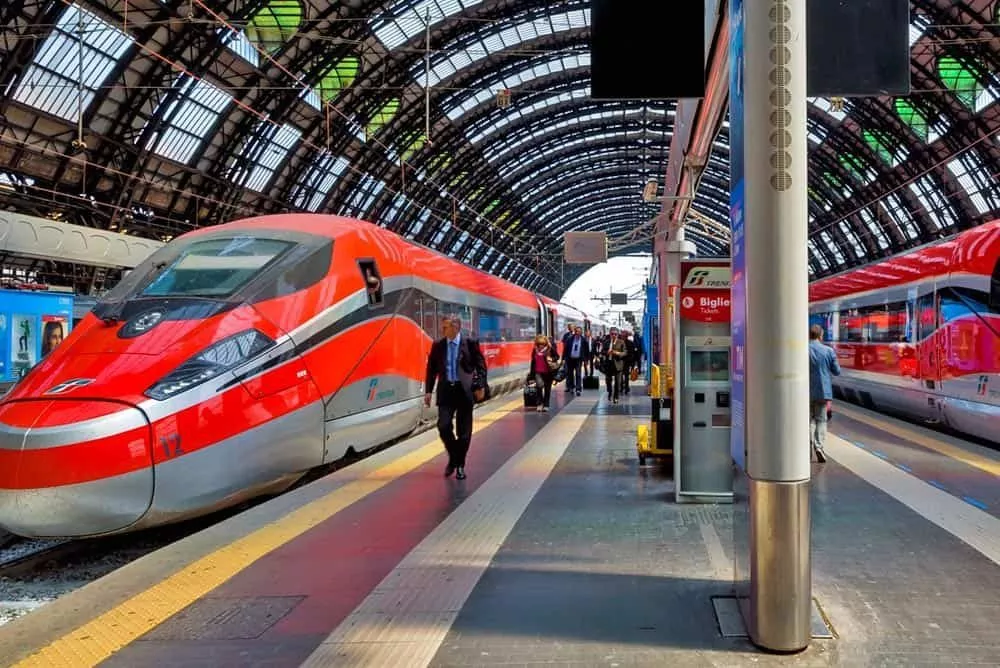
Traveling by train is the quintessential way to tour Europe. It’s romantic. It’s inspiring. It’s super-efficient. It’s comfortable. Some might say it’s almost magical. And to those who don’t live in a country where train travel is prominent, it’s a little mysterious.
In this Complete Guide To Train Travel In Europe, I’ll cover everything you need to know about traveling Europe by rail—including how to get the best price on train tickets, rail pass tips, understanding train schedules, tips for riding trains, how to navigate train stations, and advice for dealing with other issues you might encounter. By the end of this guide, you’re going to be a European train expert!
Quick Tip: Most train tickets are now electronic so you’ll want fast and reliable mobile data on your phone when traveling via train. Check out my guide on how to use your phone in Europe and our guide to the best SIM Cards and Data Plans for Europe .
The Pros and Cons of Europe Train Travel
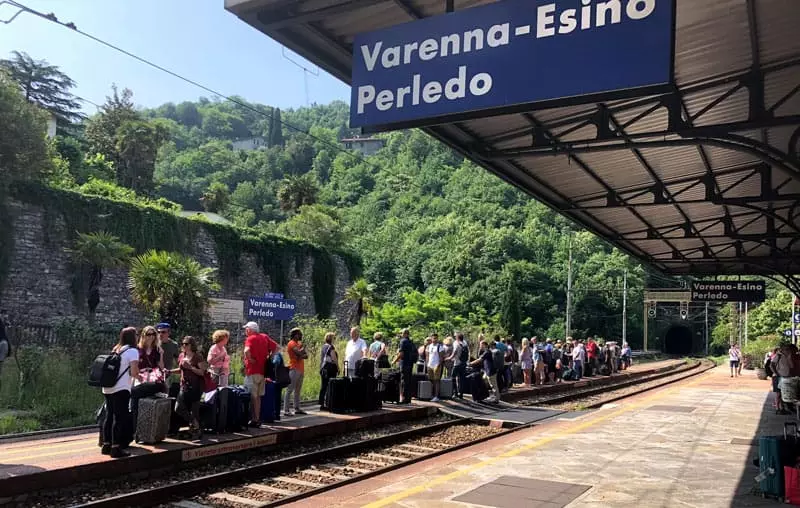
Let’s start with a quick overview of the positives and negatives of train travel in Europe.
Advantages Of Train Travel In Europe
Here are all the things I love about riding the train in Europe:
- In contrast, traveling from the airport to the city can take anywhere from 20-60 minutes and costs between $10-$80.
- There are no lengthy check-in procedures or security screening for most train travel. You simply show up a few minutes before the train leaves, buy a ticket if you don’t have one, and hop on the train.
- There are no luggage weight limits or extra fees for multiple pieces of luggage—just make sure that you’re able to lift your bag onto the train.
- Most European trains now accept electronic tickets—you simply show your ticket on your phone. That means no waiting in ticket lines and it makes planning your train travel even easier.
- You can pretty much bring whatever you want on a train—including alcohol. So stop by the local grocery store and pick up some cheap food for the journey.
- Europe’s rail network is extremely vast so it is possible to travel to even small towns by train. Most destinations offer multiple trains a day. The most popular routes usually have multiple trains an hour so getting to where you want to go is rarely difficult.
- If you’re traveling a long distance, consider taking an overnight train. These trains have special sleeper cars with bunks (usually six-bunk rooms or two-bunk rooms). A bunk in a sleeper car will cost about $45-$90 extra (about the same as a night in a hostel) but you won’t lose out on a whole day of travel. Overnight trains also have normal seats if you don’t want to fork over the extra cash for a bunk but it’s kind of uncomfortable.
- Train travel allows you to be spontaneous so you can show up at any train station, buy a ticket, and be on your way.
- Europe has a lot of beautiful countryside so traveling by train is a great way to see some fantastic views.
- Some trains also offer designated quiet cars if you truly want quiet.
- Train seats are larger and more comfortable than plane seats (especially when compared to many discount airlines). You’re also free to move about the train whenever you feel like it. Many trains also have seats that face each other and have a table between the seats—so it’s great for groups.
- European trains run on schedule well over 90% of the time but flights are only on schedule around 65%.
- Historically, train stations were the central hub for commerce and transportation so European cities showed off their status by building grandiose train stations. While it isn’t a huge deal, it is one of those nice little perks.
- Many countries offer sizable discounts for people under 26 years old so don’t forget to look into those discounts.
- The train is the most environmentally friendly form of travel. In fact, even France banned short-haul flights to encourage more train travel within France.
- We’ve always found riding the train to be fun. It’s oddly magical and relaxing.
Disadvantages of Train Travel in Europe
Train travel isn’t perfect so here are a few things to watch out for:
- That said, you can get some really good deals if you’re able to book high-speed trains in advance but you’ll pay a premium if you book last minute.
- There are often discounts for travelers under 26 years old.
- Note: Don’t forget to add in travel time to/from the airport and time to get checked in and through security—which will add around three hours to your journey.
- The train schedules can be a little confusing—especially for beginners. Luckily, there are plenty of apps that help make the process much easier but we still get tripped up every now and then.
- Many cities have more than one train station (Paris has six!). It’s not uncommon to arrive at one station and leave from another.
- It is also possible to change stations during a single journey. For example, when traveling from London to Lyon via the Eurostar, the Eurostar stops at the Paris North station, but then you have to travel to the Paris East station to catch the train from Paris to Lyon because there are no direct trains from London to Lyon. This transfer would require a cheap Métro (subway) ride.
- Striking is a national pastime in Europe. It happens a few times a year (or more if the people aren’t happy) but they announce the strikes well in advance so it shouldn’t be a surprise (just a hassle). You’ll just have to deal with them if they happen.
Pre-Trip Train Journey Planning
There are a number of great websites that will help you plan your train journey.
The first is Rome2Rio — simply plug in your destinations and it will give you all the train routes (as well as plane, bus, and car routes with cost estimates and travel times) for your journey. Rome2Rio is good for comparing different modes of transportation but I find better train ticket prices and more complete train listings on Omio and Trainline .
The German Railways Website ( Bahn.de ) shows the schedule of every train in Europe (yes, every train). We find that it’s helpful for piecing together complex train journeys. But it’s also good for seeing which trains require reservations and other important information. Unfortunately, you can only book German train tickets on the site so hop over to Omio and Trainline to book your tickets.
I’ve also written a few country-specific train guides to help you learn the quirks of each country’s rail network.
- Belgium Train Guide
- England Train Guide
- France Train Guide
- Germany Train Guide
- Italy Train Guide
- Netherlands Train Guide
- Portugal Train Guide
- Spain Train Guide
- Switzerland Train Guide
How to Buy European Train Tickets
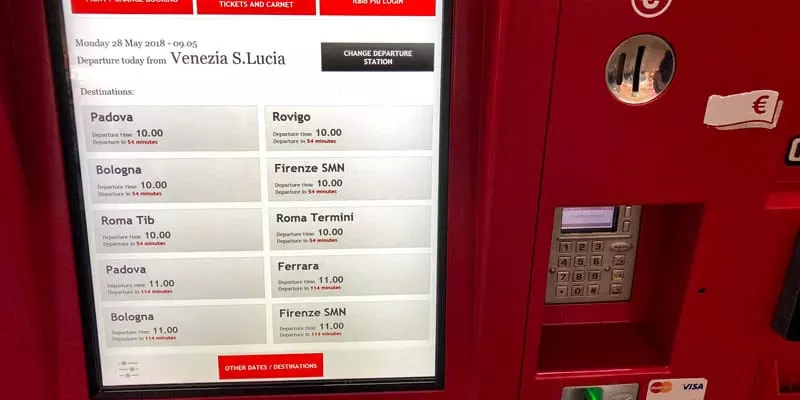
Buying European train tickets can be a little complicated—especially when you’re looking for the best deals.
That’s because each country runs its own National rail service (many countries also have separate private rail networks as well) and each does things slightly differently.
Luckily, there are plenty of online tools to make the whole process easier and we’ll walk you through the process.
NOTE: I’ve written an in-depth guide on how to buy train tickets in Europe if you want a more detailed look at finding the cheapest train fare.
How To Understand Train Ticket Pricing
Before we get started, I need to explain the two main ways train tickets are priced— fixed price and variable price .
Variable-Price Train Fares
Variable Train Fares are always changing based on demand, the day of the week, the time of year, and the distance to the departure date. Essentially all high-speed trains operate on this pricing model.
- In general, the prices will continue to creep up as the departure date approaches—you’ll pay a fortune if you buy last minute.
- Of course, you lose flexibility when buying tickets in advance because the cheapest tickets are normally non-refundable/unchangeable
Fixed-Price Train Fares
With Fixed Train Fares , the price is solely determined by the distance traveled. This is most common on regional and slower trains. With this type of ticket, it doesn’t matter when you buy tickets because the price never changes.
Where To Buy European Train Tickets
There are two main ways to buy European train tickets—directly from each country’s National Rail Service (via their website or at the train station) or through a third-party train booking search engine like Omio and Trainline —I find these booking services to be much more user-friendly.
Third-Party Train Ticket Booking Sites
There are quite a few advantages to buying your train tickets with third-party booking sites:
- The advantage of booking with a third-party booking site is that it lets you book more complex multi-country/international train routes. Many National Rail Services have trouble booking international routes (i.e. going from France to Italy)—so they can’t always find the best deals or show all available routes.
- Many of Europe’s National Rail websites still have issues processing foreign credit cards so it’s common for credit cards to be declined when booking. These third-party sites won’t have these issues.
- We’ve found that it’s common for Europe’s National Rail websites to be plagued with weird technical problems and overall poor user interfaces. Many times you’ll get kicked from the English version of the page to the local language in the middle of the booking process. These third-party booking websites take care of these issues.
- Third-party booking services have much better smartphone apps than the clunky national rail service apps.
Our Favorite Train Booking Websites
- Omio : Omio is a great train booking engine that lets you book tickets from just about every country’s rail service and they make the booking process very user-friendly.
- Trainline : Trainline is a new European train booking service (very similar to Omio ) that sells train tickets from Austrian, French, German, Spanish, Italian, and German Railways railways (and a few others).
National Booking Sites
Despite their technical issues, sometimes the cheapest tickets can only be found by booking directly with each country’s national rail service. This is because sometimes they offer limited-time deals that third-party booking sites don’t have access to. So it doesn’t hurt to at least take a look.
Links to Some National Railway Websites:
Austrian Railways ¹ – Belgian Railways ¹ – Danish Railways – Finnish Railways – French Railways – German Railways – Irish Railways – Italian Railways – Spanish Railways – Netherlands Railways ¹ – Norwegian Railways – Polish Railways – Swedish Railways – Swiss Railways ¹ – United Kingdom Railways
¹ Domestic tickets (i.e. trips that are wholly within the country) are always the same price — regardless of when they’re purchased and they never require a reservation. Therefore, it is easiest to buy tickets at the station. However, these countries often have a separate international high-speed train system (e.g., Belgium has slower regional trains and high-speed Thalys trains that link major Belgian cities to other international cities — these tickets should be purchased early for cheaper fares).
Quick Note About Eastern Europe Trains
Some Eastern European countries still don’t have online ticket booking so it’s only possible to purchase tickets at the station or through a local travel agent. Ask your hostel or hotel and they’ll tell you where to locate an agent.
Receiving Your Online Tickets
There are multiple ways to collect your tickets after you purchase them:
- Electronic Tickets: Many times you can have an electronic ticket sent to your phone (either via email or the booking app). Simply show the conductor on the train when he checks tickets and he’ll scan the QR code on the screen. This isn’t available in all countries but most countries have switched to eTickets.
- Print-At-Home Tickets: Anywhere that offers electronic tickets will usually let you print tickets at home. You can often simply save the PDF to your phone/tablet and the conductor can scan it from there.
- Note: You’re often required to use the SAME credit card use to purchase the tickets to collect the tickets at the station.
Buying Tickets At The Station
You can buy train tickets at any train station—either from the ticket window or from automated ticket machines. We recommend trying the automated ticket machines since the lines at the ticket window are long, slow, and understaffed.
When To Buy Train Tickets To Get The Best Price
Fares are fixed for most regional and local trains so there is no reason to buy them early.
For high-speed trains , it’s best to buy tickets early to get the cheapest tickets. In most cases, train tickets can be purchased 60-90 days before the departure date but buying a few weeks early is usually fine.
Train Ticket Price Examples (Comparing Last Minute vs Buying Early)
- Purchased Two Days Before Departure: €69.00
- Purchased Three Weeks Before Departure: €55
- Purchased Two Days Before Departure: €135
- Purchased Three Weeks Before Departure: €97
- Purchased Six Weeks Before Departure: €54
- Purchased Two Days Before Departure: €234
- Purchased Three Weeks Before Departure: 124
- Purchased Six Weeks Before Departure: €55
As you can see, booking just a few weeks early can save quite a bit of money.
Quick Point About Buying Train Tickets Early : As stated above, buying tickets in advance is the best way to save money but this also limits your ability to be flexible/spontaneous. This is especially true since many of the truly cheap train tickets are non-refundable. For optimum flexibility, it might be best to buy a rail pass. Here’s my Guide To Using Rail Passes in Europe and my Eurail Pass Review .
Other Train Ticket Discounts
Most rail services offer various discounts—some are based on rider age but other discounts are based on region, the day of the week, or other schemes.
- The most common discount is a youth discount — which is usually for people under 27 years old.
- Most countries offer a number of potential discounts. For example, Germany has a Schönes-Wochenende-Ticket (Happy Weekend Ticket) where groups of 2-5 people can ride as much as they want on regional trains from Saturday to Sunday for €44. Check each country’s rail service website to see if there are discounts available.
Eurail Passes
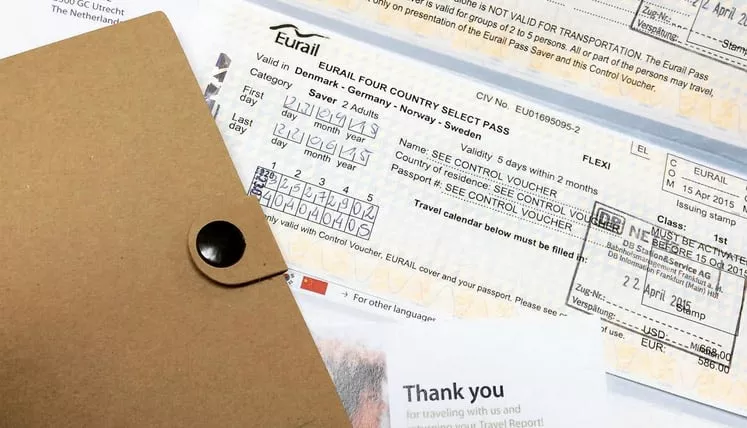
Many travelers choose to use rail passes instead of buying individual tickets. That’s because Eurail passes can save you a bit of money (depending on how you use them) but most importantly they give you excellent flexibility by allowing you to travel without needing to plan.
Note: We’ve written a lot about Eurail Passes. Check out our Guide To Using Rail Passes in Europe and our Eurail Pass Review for more in-depth information.
Quick Rundown On Rail Passes
A rail pass (aka Eurail Pass) is a single ticket/pass that allows you to ride any train in Europe—simply hop on, show the conductor your pass, and you’re good to go. Actually, it’s not quite that easy these days as there are a few stipulations, but the general idea is that you can ride any train without booking individual tickets.
Types Of Rail Passes
- Continuous: Unlimited travel to any Eurail participant country for between 15 days and 3 months.
- Flexi: 10 or 15 individual travel days (doesn’t have to be consecutive days) to any Eurail participant country within a two-month period.
- For example, one pass could be 10 days of train travel between France, Switzerland, and Italy. You have a two-month window to use of your 8 travel days. Each day you travel by train counts as one travel day but you can take unlimited train rides within each day.
- Eight travel days in a single country which must be used within a month.
Advantages of Rail Passes
- Flexibility: The number one benefit of rail passes is the flexibility they offer. You simply have to walk onto the train and go. That’s why this is a great option for people who don’t want to plan and who would rather wander across Europe.
- Long-Distance Trains: It’s also a good deal if you plan on taking a lot of long-distance trips because those tickets tend to be expensive so a rail pass is a good way to save some money. On the other hand, if you’re taking a bunch of short train rides then you’ll probably be better off buying single tickets.
- Low Stress: Piecing together a bunch of train journeys and then pre-purchasing individual tickets is stressful and takes a lot of time and planning. For a lot of people, paying a little extra for a rail pass is worth the hours saved having to preplan your entire trip.
Disadvantages of Rail Passes
- More Expensive: It’s usually cheaper if you purchase your train tickets online a few weeks in advance. That said, most of these cheap pre-purchased tickets are non-refundable so you’ll lose most of your flexibility. However, if you’re purchasing your train tickets a few days before departure then it’s much cheaper to use a rail pass.
- Reservations: A few countries require rail pass holders to pay extra for a seat reservation on high-speed trains. The fee can range from anywhere from €5-€35 and they have to be made in advance — they can sometimes be made online or directly at the train station. Here’s a detailed guide to rail pass reservation requirements from eurail.com. You can also enter your journey into Bahn.de and it will tell you if that specific journey requires a reservation.
Navigating The Train Station
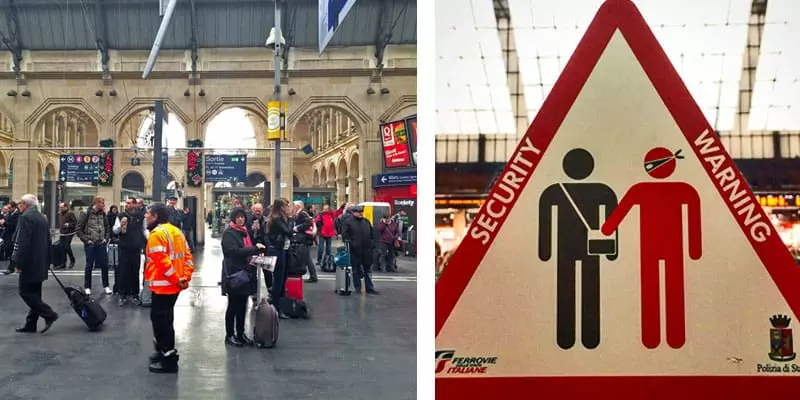
Ok, now we know how to buy train tickets and rail passes… so let’s learn about what to expect when you get to the train station.
The train station is the central transportation hub of most European cities so things can be a little chaotic and confusing—especially if you’re not used to traveling by train.
In this section, I’ll give you some tips to help you find your train.
First, make sure you have the correct train station because many cities have multiple stations. For example, Paris has six stations. Even some small towns have two different stations.
Once you arrive at the station, you’ll see signage in English so you shouldn’t have much trouble finding your way. Some stations are huge so you may have to walk quite a bit and navigate stairs and escalators.
Depending on the size of the station, you’ll also find fast food, cafes, shopping, lounges, and restrooms (although you sometimes have to pay to use them). Also, most train stations have luggage lockers that you can rent if you need them.
Pickpockets and Scams at the Train Stations
Train stations can get very busy, hectic, and full of confused tourists so they’re a common target for pickpockets and other scammers. Pay attention to your stuff and be wary of “helpful” strangers willing to help you with the ticket machines. Check out our Guide To Avoiding Pickpockets and Tourist Scams in Europe .
Train Ticket Machines

If you need to buy your train tickets or print your pre-purchased tickets you’ll want to first head to the automated ticket machines. Everything is in English and the machines are easy to use.
Alternatively, you can still go to the ticket window or customer service desk but the lines are usually long.
Reading The Train Station’s Departure Board
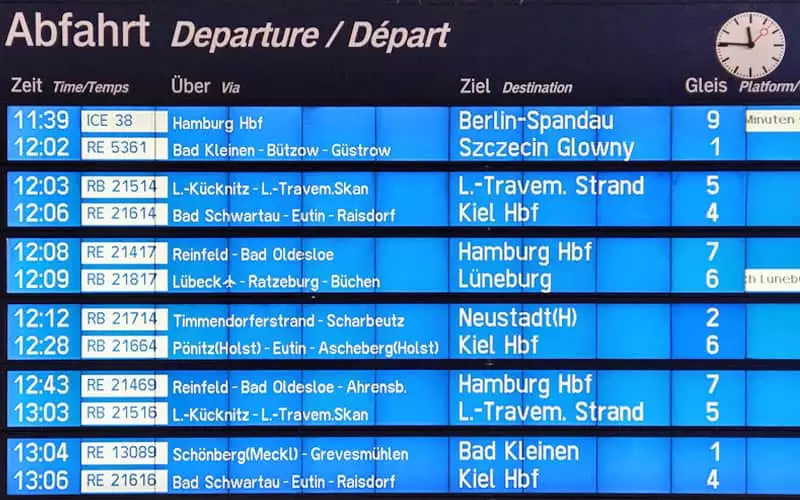
Once you arrive at the station you’ll want to look for the departure board. There are usually multiple boards throughout the station and one giant main board. This board tells you where to find your train, when it leaves, and where it’s going.
The three most important things to note are the train number , departure time , and the platform .
Your train ticket will show the scheduled departure time and the train number but it usually won’t show which platform the train leaves from.
So head to the departure board and find your train number to see at which platform your train is located. It’s very common for the departure board to not display the platform until 10-15 minutes before departure so pay attention to the board.
Find Your Train’s Platform
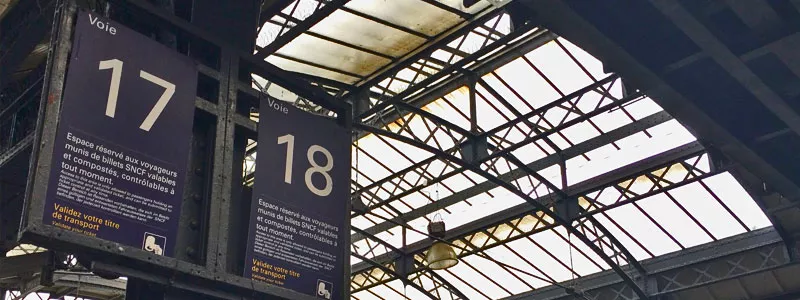
Once know what platform your train is departing from you’ll want to find that platform at the station. Sometimes the platforms are a bit hard to find so you might have to seek them out.
Don’t worry if there isn’t a train there at the moment because trains often pull in, load up, and leave.
There are usually a few staff members milling about on each platform so don’t be afraid to ask train station staff as most can speak English.
Validate Your Ticket
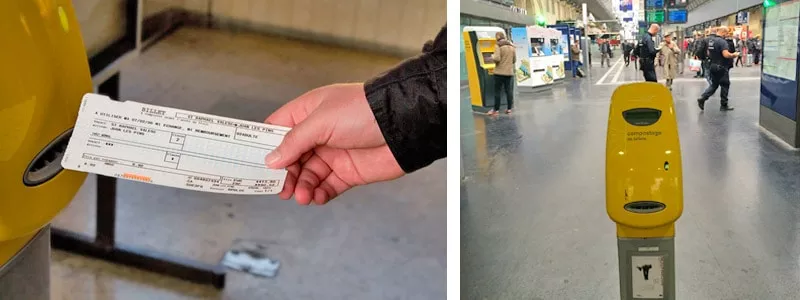
Many physical train tickets need to be validated (stamped with time/date) before entering the train so look for small validation boxes near the entrance of the platforms. Simply place your ticket inside the machine and it will stamp it.
You can receive a large fine if the ticket checker sees that your ticket isn’t validated (they’ll assume you were trying to ride for free). If you forgot, quickly seek out the conductor, explain that you forgot to validate and everything should be fine. Or you can just play the “I’m a dumb tourist and these scary trains confuse me” card and hope they let it slide.
Note: Electronic tickets don’t need to be validated because they’re usually only good for the specific time stated on your ticket. Some paper tickets also don’t need to be validated but we usually try doing it anyway to be safe.
Finding Your Train Car
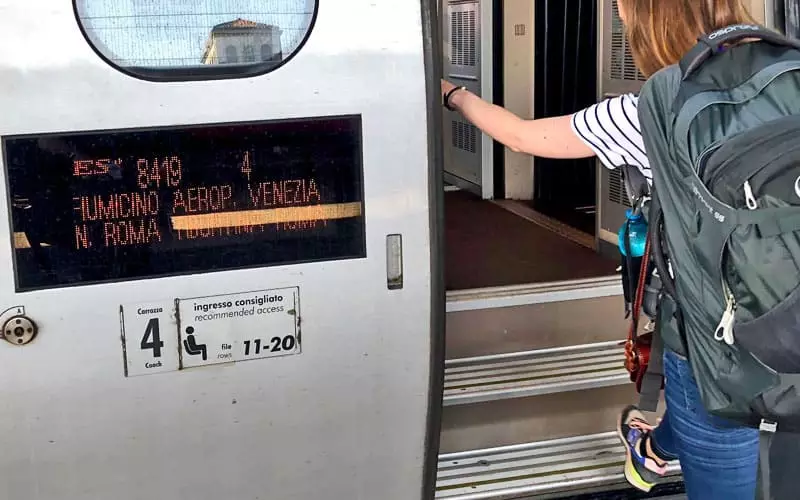
On some trains (usually high-speed trains) you have assigned seats so look at your ticket to see which train car your seat is in. The car number will be displayed on the side of each train car.
You can board the train in any car but it’s much easier if you enter your car (walking through multiple train cars is a pain).
Most regional and slower trains don’t have assigned seats so you can simply board anywhere you like.
That said, you’ll want to get on fairly quickly because trains are usually only at the station for a few minutes before they leave.
On The Train

You’ve made it on the train. Congratulations! In this section, we’ll talk about settling in and a few things you might experience on your ride.
Find Your Seat & Store Luggage
Find your assigned seat (if you have one) or take any free seat if it’s open seating. The seat numbers are displayed above the seats.
Take the opportunity to store your luggage. Smaller luggage like backpacks and some suitcases can be stored above your seat on luggage racks. There are usually larger spaces for bigger luggage at the end of each train car.
Wait For The Conductor To Check Your Tickets
A ticket checker will come by and check your ticket after the journey starts—typically within 10-20 minutes after departure.
While not extremely common in Western Europe, border patrol might board the train to check passports. They might ask you some questions but we usually only encountered this in Eastern Europe.
Enjoy The Ride
One of the great things about train travel is the comfort of the ride. Feel free to walk about, check out the bar car, enjoy a picnic (alcohol is allowed), or sleep. Some trains offer free wifi but we’ve never had much luck getting it to actually work.
Departing The Train
One of the most confusing parts of the ride is knowing exactly when to leave the train. That’s because train stations are sometimes named very similarly.
For example, many trains coming into Brussels first stop at the Brussels Nord station (which is located on the outskirts of town) before stopping at the main Brussels Centrale station (which is located in the center of town).
More Europe Travel Tips From The Savvy Backpacker

I have a lot more tips and tricks for traveling through Europe on a budget. Here are a few helpful articles I think you’ll enjoy.
- Get moving with our picks for the Best Travel Backpacks .
- Get packing with our Europe Packing List .
- Get traveling with our Europe City Travel Guides .
- Get planning with our step-by-step Guide To Traveling Europe On A Budget .
- Get a High-Speed eSIM Data Plan for Europe and learn more about how to use your phone in Europe .
- Recent Posts
- How To Buy Train Tickets in France | Guide To Buying French Train Tickets - July 26, 2024
- France Train Guide — How To Travel France By Train - July 25, 2024
- Best Prepaid USA eSIM Data Plans For Travelers | eSIM Buyer’s Guide - July 3, 2024

No Funny Business
The Savvy Backpacker is reader-supported. That means when you buy products/services through links on the site, I may earn an affiliate commission—it doesn’t cost you anything extra and it helps support the site.
Thanks For Reading! — James
Questions? Learn more about our Strict Advertising Policy and How To Support Us .

Related Reads
How to buy train tickets in france | guide to buying french train tickets.
What you need to know about booking train tickets in France and tips for getting the cheapest prices.
France Train Guide — How To Travel France By Train
How to travel France by train—tips for buying French train tickets and advice for navigating France by rail.
How To Purchase Train Tickets for Europe | Strategies For Buying European Train Tickets
Tips on the easiest and cheapest ways to buy train tickets in Europe.
Italy Train Guide — How To Travel Italy By Train
How to travel Italy by train — tips for buying Italian train tickets and advice for navigating Italy by rail.
City Guides
Choosing travel insurance, travel packing lists, budget travel newsletter.
The best budget travel tips sent straight to your inbox.
Join My Journey
Europe travel tips, advertising & privacy policies.
TheSavvyBackpacker.com is a participant in the Amazon Services LLC Associates Program, an affiliate advertising program designed to provide a means for sites to earn advertising fees by advertising and linking to amazon.com.
© 2010 - 2024 The Savvy Backpacker
Website Design by FHOKE
The best train rides in Europe: 10 amazing journeys for 2024
Jan 16, 2024 • 8 min read

Incredible scenery awaits traveling through the Bernese Alps; Jungfrau, Switzerland © Thomas Barwick / Getty
There’s something magical about a journey by train.
Sometimes the magic is inside – on a train you have room to move and meet people, dine in a restaurant car with white tablecloths, and sleep in a private compartment between crisp, clean sheets with the sound of steel wheels swishing on the rails beneath you. Sometimes the magic is outside, in the landscape the train traverses – an adventure, an experience, an insight into the heart of a nation.
Below are some of the most beautiful train rides in Europe – some well known, some less so, some luxurious and expensive, others true bargains. From countryside views and mountain villages to alpine passes and landmark bridges (with a little wildlife spotting thrown in for good measure), the continent offers up some of the most scenic train rides in the world.
The best European train trips include the fabulous Bernina Express, the most enchanting Swiss Alpine ride of all, and the spectacular railway from Belgrade to Bar through the mountains of Montenegro . The latter is one of the most scenic train rides you’ve probably never heard of, with a bargain fare of just €21. So here they are, the 10 best train journeys in Europe, extracted from Lonely Planet's Amazing Train Journeys .

1. Settle to Carlisle, England
Route: Settle to Carlisle Best bit? Marveling at the Ribblehead Viaduct, one of the great views of northern England , preferably as a steam train thunders over. Distance: 113km (73 miles) Duration: 1 hour 40 minutes
England’s Settle-to-Carlisle line has long been synonymous with the fight to preserve beautiful and historic stretches of railway. But this is no heritage line. Proudly part of the British rail network and served by regular mainline trains, the railway enjoys a double life as a frequent host of steam specials and, even rarer, steam-hauled mainline services.
Whether you have the whiff of steam in your nostrils or the hard-working growl of diesel-hauled regular trains in your ears, the views from the carriages are pretty much unmatched on the English railway network.
Passengers can feast their eyes on mile after mile of magnificent Yorkshire Dales and North Pennines scenery, interrupted only by stations so sweet you would expect to find them pictured on a box of biscuits.

2. Le Petit Train Jaune, France
Route: Villefranche-de-Conflent to Latour-de-Carol Best bit? Holding your breath as you cross the gravity-defying Pont Gisclard. Distance: 63km (39 miles) Duration: 4 hours 30 minutes
Since 1910, the dinky, sunflower-yellow carriages of the Ligne de Cerdagne have been rattling and clattering their way through the rolling forests and saw-toothed mountains of the Pyrenees , and they have secured a special place in the hearts of many French travelers.
Affectionately known as the Canary, or Le Petit Train Jaune (Little Yellow Train), this mountain railway is frequently cited as the most scenic in France , but it’s definitely not a luxury service – it’s a rollercoaster ride on which you will feel the wind in your hair and the chill of the mountain breeze as you ratchet your way up to the highest train station in France. On y va!

3. Belgrade-to-Bar Railway, Serbia and Montenegro
Route: Belgrade to Bar Best bit? Levitating atop the 499m-long (1637ft), 198m-tall (650ft) Mala Rijeka Viaduct, one of the planet’s highest railway bridges, before the train glides over the Balkans’ largest lake, Skadar. Distance: 476km (296 miles) Duration: 12 hours
Dramatic is the operative word for this route, which rumbles over an unsullied, mountainous landscape from Serbia 's capital, Belgrade , to Montenegro ’s Adriatic Coast . During the 12-hour journey, the train disappears into the Dinaric Alps, charges through canyons, teeters on stilted bridges spanning river gorges and skims atop an ancient, tectonic lake.
Like the region it serves, the railway, which chugs across the heart of the Western Balkans , eludes most tourists’ maps. The reward for treasure-hunting travelers, who are informed (or lucky) enough to know where to dig: an embarrassment of authentic culture and pristine geographic riches at every bend.

4. The Bernina Express, Switzerland
Route: Chur to Tirano Best bit? Marveling at the astonishingly turquoise Lago Bianco from the route’s highest station, Ospizio Bernina (2253m/7392ft). Distance: 156km (96 miles) Duration: 4 hours 30 minutes
We can wax lyrical about the glacier-capped mountains, waterfall-draped ravines, jewel-colored lakes and endless spruce forests glimpsed through panoramic windows on Switzerland ’s Bernina Express – but, trust us, seeing is believing.
Rolling from Chur in Graubünden to Tirano in northern Italy in around four hours, this narrow-gauge train often tops polls of the world’s most beautiful rail journeys. It's certainly one of the most scenic train journeys in Switzerland.
Beyond the phenomenal Alpine landscape, the railway itself is a masterpiece of early 20th-century engineering, taking 55 tunnels and 196 bridges in its stride. The line is on the UNESCO World Heritage List – and with good reason.

5. The Heart of Wales Line, Wales and England
Route: Swansea to Shrewsbury Best bit? Disembarking at lonely Sugar Loaf Station for a walk or picnic around the iconic nearby knoll of the same name. Distance: 194km (121 miles) Duration: 4 hours
This is Swansea to Shrewsbury the slow and, frankly, surreal way. This one-carriage train traverses track through Wales and England that might easily have been consigned to a museum or an out-of-print book, but that has somehow defied time and logic to survive as a passenger route.
Expect a spectrum of scenery, alternating from the sand-edged estuaries of South Wales, via bucolic farming towns and tracts of forest and hill country you probably never knew existed, through to one of England’s prettiest medieval cities. This four-hour, 34-station zigzag passes almost no major sights or countryside villages, but a very high concentration of spectacularly zany ones.

6. Munich to Venice on the Brenner Railway, Germany, Austria and Italy
Route: Munich to Venice Best bit? Stretching your legs at 1371m (4498ft) Brenner Pass, the highest point on the trip. Distance: 563km (350 miles) Duration: 6 hours 30 minutes
The Brenner Railway is attractive for two key reasons: mountains and wine. There may be more technically astonishing high-altitude trains, but this was the first to cross the Alps, in the 1860s.
On a surprisingly speedy day trip, you pass through three countries – Germany , Austria and Italy – and descend from the snow line to sea level. You’re rarely far from highways, but the vineyard views are still stunning. Bonus: great European cities with historic architecture – Munich and Venice – are at either end.

7. The Kyle of Lochalsh Line, Scotland
Route: Inverness to Kyle of Lochalsh Best bit? Passing under the gentle grassy slopes of Fionn Bheinn – a munro rising high over Achnasheen. Distance: 135km (84 miles) Duration: 2 hours 30 minutes
Scotland has an abundance of windswept railways – the West Highland Line and the Far North Line to Thurso among them. Though comparatively unsung, perhaps the loneliest of all is the Kyle of Lochalsh Line – with trains rumbling doggedly from Inverness through desolate glens and past snowy munros, connecting the cold shores of the North Sea to the furious whitewater of the Atlantic.
It is a railway line full of poetry and beloved by aficionados – but it’s also a useful way for independent travelers to access remote nooks of the Highlands, and make a journey to the Isle of Skye.

8. Nova Gorica to Jesenice, Slovenia
Route: Nova Gorica to Jesenice Best bit? Catching a glimpse of picture-perfect Lake Bled’s church, castle and bright-blue water. Distance: 89km (55 miles) Duration: 2 hours
Here is a near-perfect railway adventure that most people have never heard of. Then again, you could be forgiven for missing it. The Bohinj Railway, after all, connects two places whose significance can be lost to modern travelers. Europe’s shifting borders and politics may have rather marooned the Nova Gorica–Jesenice line, but that only adds to the appeal.
An unassuming regional train rattling out of a faded-grandeur halt on the Italy– Slovenia border doesn’t even hint at what’s to come. The journey is a spectacular tour of Slovenia’s upland highlights, climbing through mountain towns and villages along the Soča River, passing through superb Alpine scenery close to Lake Bohinj , and past world-famous Lake Bled , offering photo opportunities galore.

9. The Centovalli Express, Switzerland and Italy
Route: Domodossola to Locarno Best bit? Taking in the Isorno viaduct, the site of Switzerland’s first bungee jump. Distance: 52km (32 miles) Duration: 2 hours
Often eclipsed by Switzerland’s more famous rail rides, this two-hour trundle from Locarno on the palm-rimmed shores of Lake Maggiore to Domodossola over the Italian border in Piedmont is something of an unsung beauty.
Brush up your Italiano to swoon in sync with fellow passengers as the dinky train clatters across 83 bridges and burrows its way through 34 tunnels. The views make for spirit-lifting stuff: waterfalls shooting past cliffside views, hillside vineyards, gracefully arched viaducts, slate-roofed hamlets, glacier-carved ravines and mile after mile of chestnut and beech forests, all set against the puckered backdrop of mountains that are snow-capped in winter.

10. Bergensbanen, Norway
Route: Oslo to Bergen Best bit? Gazing over the soul-stirring landscape of Hardangervidda between Geilo and Finse. Distance: 496km (308 miles) Duration: 6 hours 30 minutes
This astonishing train is one of the wonders of 19th-century railway building, and yet outside Norway hardly anyone knows about it. In just over six hours and some 490km (300 miles), it covers the spectrum of Norway ’s natural splendor: climbing canyons, crossing rivers, burrowing through mountainsides, swooping past fjords and traversing barren icescapes. All aboard for the Oslo to Bergen trainline, Bergensbanen: a mainline into Norwegian nature.
This article was first published Aug 20, 2019 and updated Jan 16, 2024.
Explore related stories

Sustainable Travel
Jun 11, 2024 • 4 min read
A report from the overnight train from Brussels to Berlin, a key route in Europe’s new sleeper-train renaissance.

May 18, 2024 • 7 min read

Jan 2, 2024 • 11 min read

Oct 19, 2023 • 8 min read

Jul 5, 2023 • 5 min read

Dec 9, 2022 • 9 min read

Apr 28, 2022 • 2 min read

Jan 3, 2021 • 4 min read

Dec 10, 2020 • 3 min read

Nov 30, 2020 • 5 min read
Easily plan a European rail trip with Eurail Planner
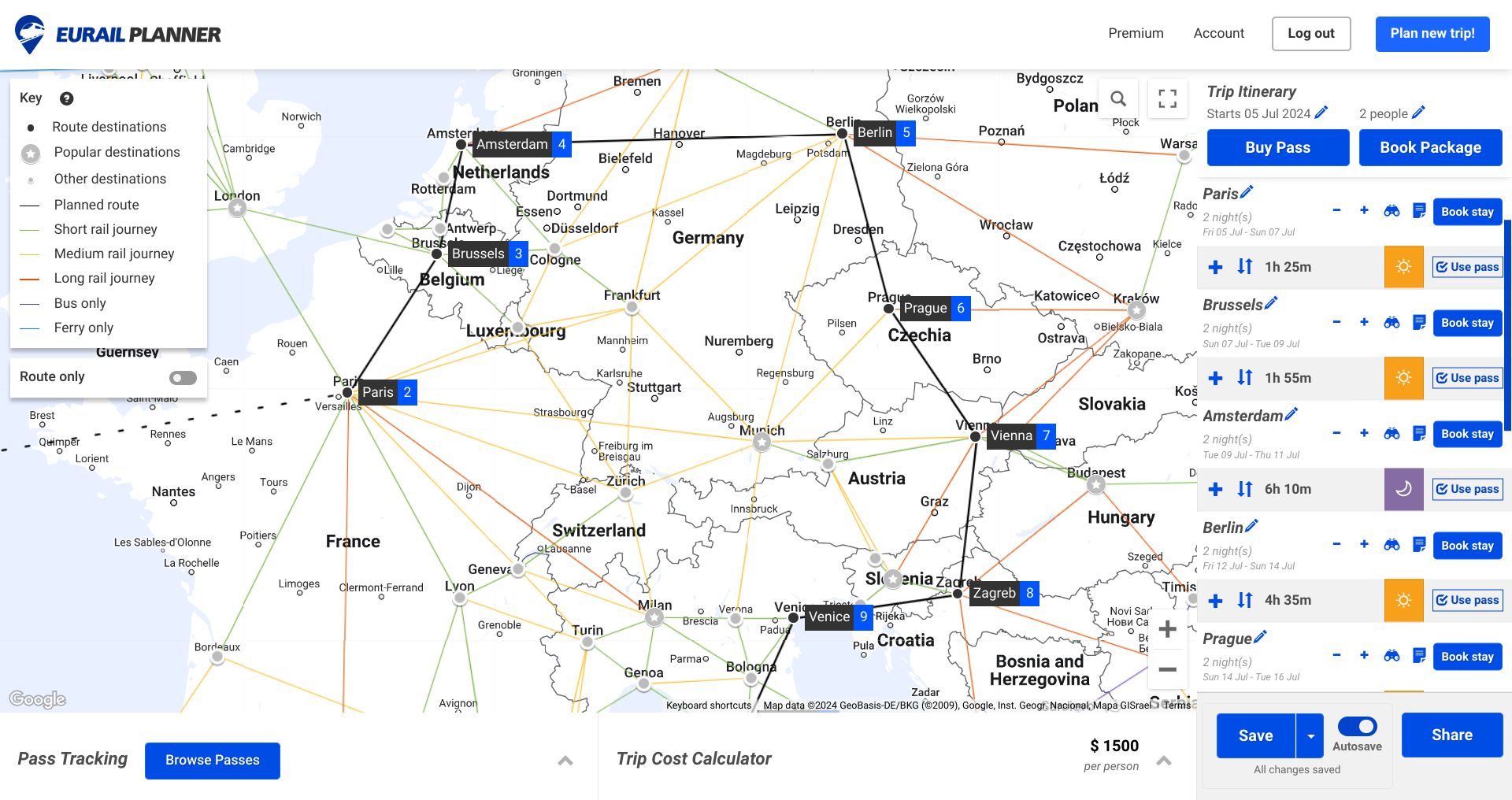
Our free app makes it easy to plan and book everything you need for your trip around Europe.
Plan the best route across Europe and see your eurotrip come to life.
See your day-by-day trip itinerary, so you know when you’ll be in each European city.
Accommodation Search
Instantly search for the best accommodation for the dates and destinations in your plan.
View durations for each rail journey on your route through Europe.
Share your plan with friends and family.
Premium Features
Unlock extra features and exclusive discounts with Eurail Planner Premium - planning your eurotrip has never been simpler.
Track your pass restrictions so you don't break the rules.
Stay in budget with a trip cost estimate that updates as you edit.
Add notes to your plan as you research your trip.
Get exclusive offers with our Premium account.
Multiple Plans
Create & save as many routes as you like.
Most popular Eurail routes
Get inspired by these popular Eurail routes. Each trip can be booked as a standard package or you can customize it and request a quote using our route planner.
Buy your Eurail pass
Whether you want to explore one country, several, or all of Europe there is a Eurail pass to suit your travel needs.

Flexi Global Pass
Travel in 33 countries with a set number of travel days in a 1-2 month period
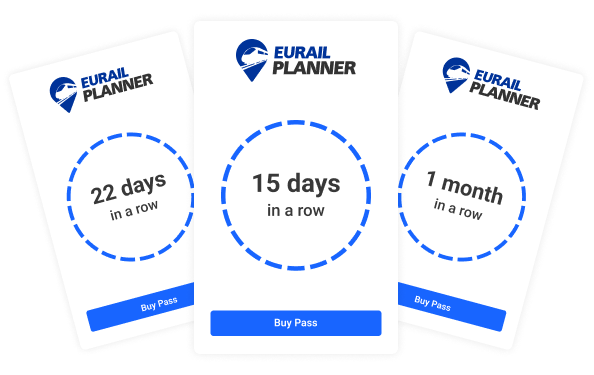
Continuous Global Pass
Unlimited travel across 33 countries for up to 3 months
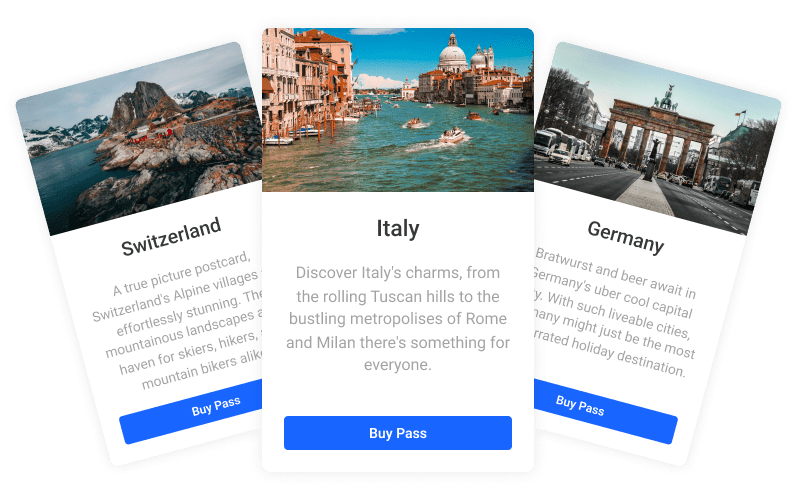
One Country Pass
Delve deeper into one of 30 European countries over 1 month
Ready to plan your Eurail trip?

Europe by train: Five great one-week rail trip routes
Posted on Last updated: July 8, 2024
Explore Europe by train with five of the best European rail trip itinerary ideas you can do in just one week, covering Northern Europe, Italy, Eastern Europe, Spain and Portugal, and Scandinavia.
* This site contains affiliate links , where I get a small commission from purchases at no extra cost to you.
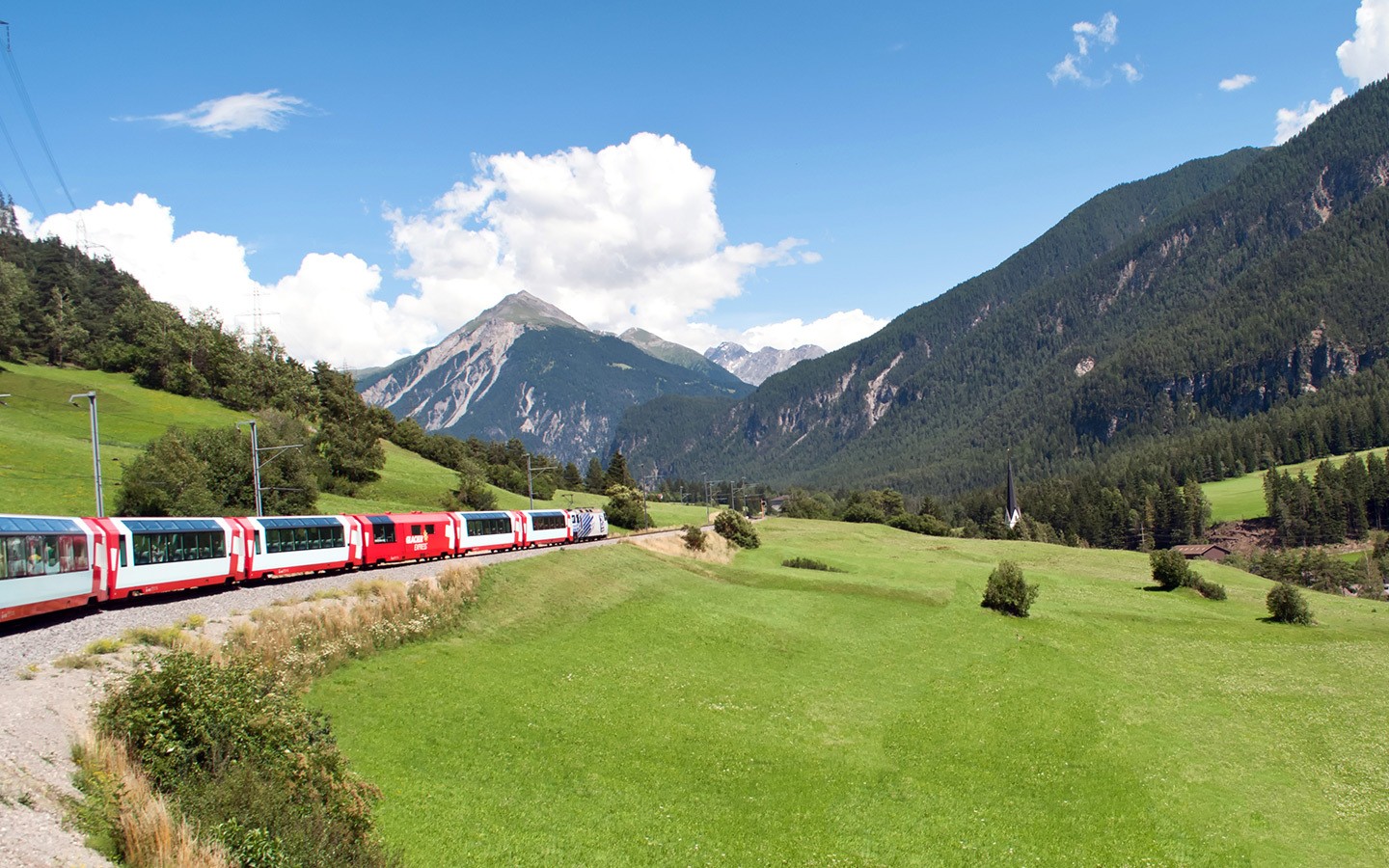
Train travel is one of the best ways to explore Europe – the continent is fairly compact so it’s easy to get around and there’s a wide network of train routes and rail passes available, so you can just sit back and soak up the views. But if you want to explore Europe by train, most suggested rail itineraries are geared up for InterRailers with months to spare.
That’s not the only option though – you can have a mini European rail adventure too. Just choose a region and a few destinations and create your own route. Or if that sounds too much work, here are five of the best one-week European rail trip ideas to get you started.
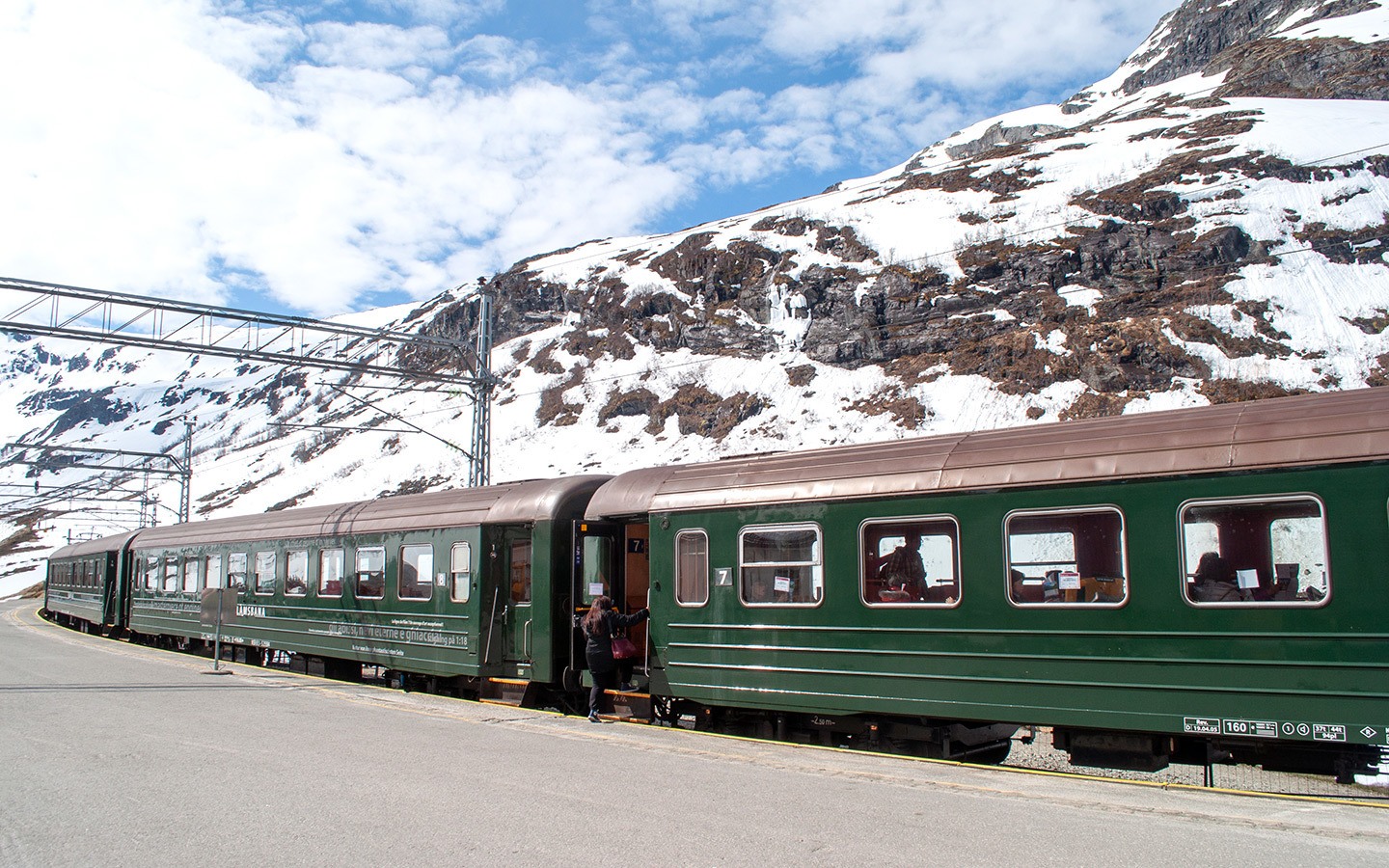
Each of the routes is possible in a week’s holiday, but if you’ve got more time you can take it slower and spend more time in each place. The idea isn’t to wear yourself out trying to see everything in every destination, but to take in the highlights and get a taste for each place (if you find somewhere you love, you can always come back again and stay longer).
From Scandinavia to Spain, there’s the perfect European rail route for you – and if you’re ready to go, check out my detailed one-week itinerary posts, which are linked to after each route description and give you the full details of which trains to take, how much they cost, how to book tickets, what to see and where to stay along the way.
Don’t want to organise it yourself? You can also book a custom rail trip based on any of our Europe by train itineraries through our partners Byway ,* the flight-free holiday platform, which includes train travel and accommodation.
5 itineraries for exploring Europe by train
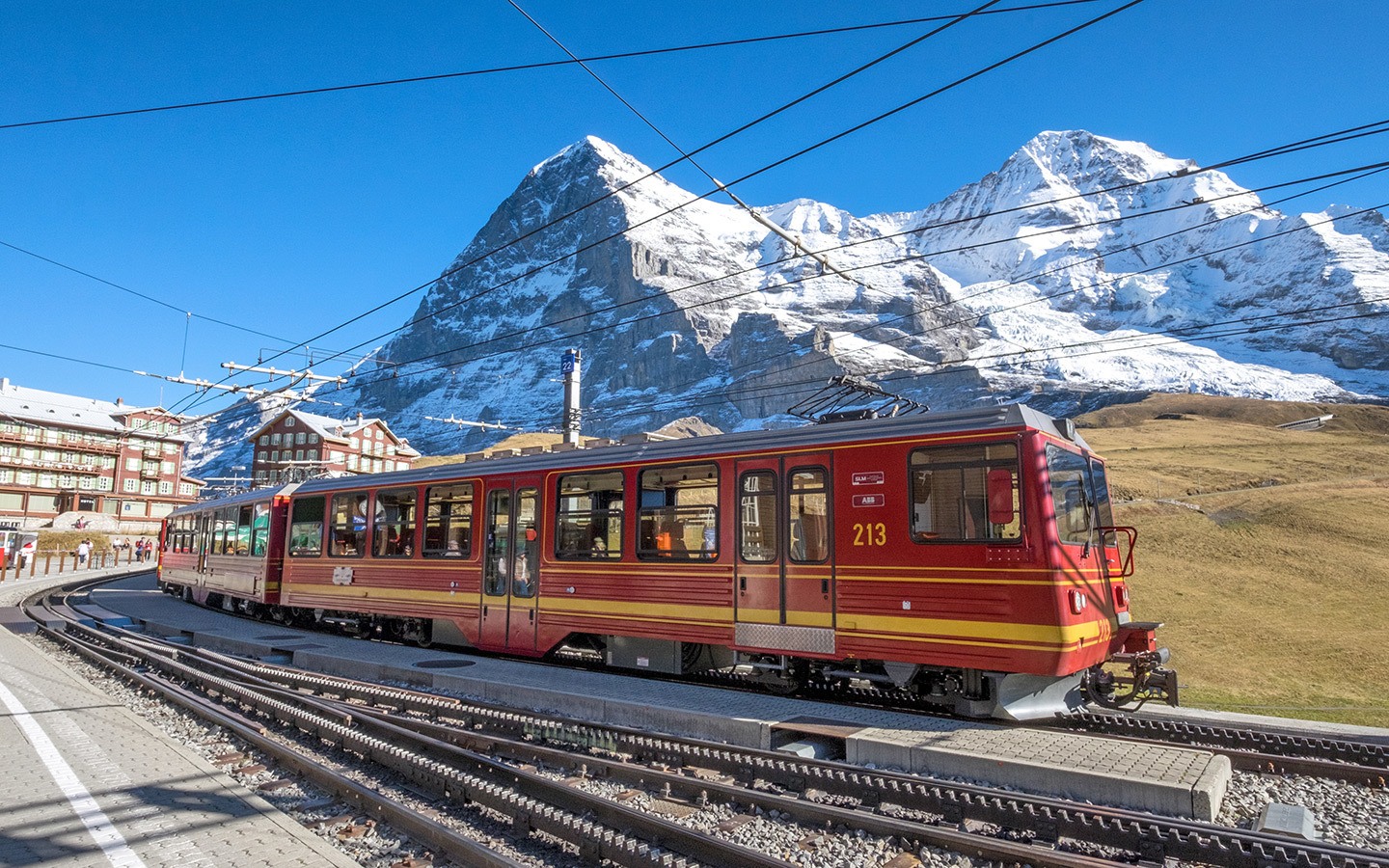
Northern Europe: Canals and chocolate
Amsterdam > Bruges > Paris > Chur > Milan
This train journey takes you through some of Northern Europe’s higlights – from its cosmopolitan capital cities to its storybook canalside towns and on through the mountains of the Alps on board one of Europe’s most spectacular train journeys.
Start your trip in Amsterdam and spend the day exploring this vibrant city with its 50km of canals and 1500 bridges. Visit one of Amsterdam’s art and culture museums, take a walk around the UNESCO-listed Canal Ring or hire a bike to explore further afield.
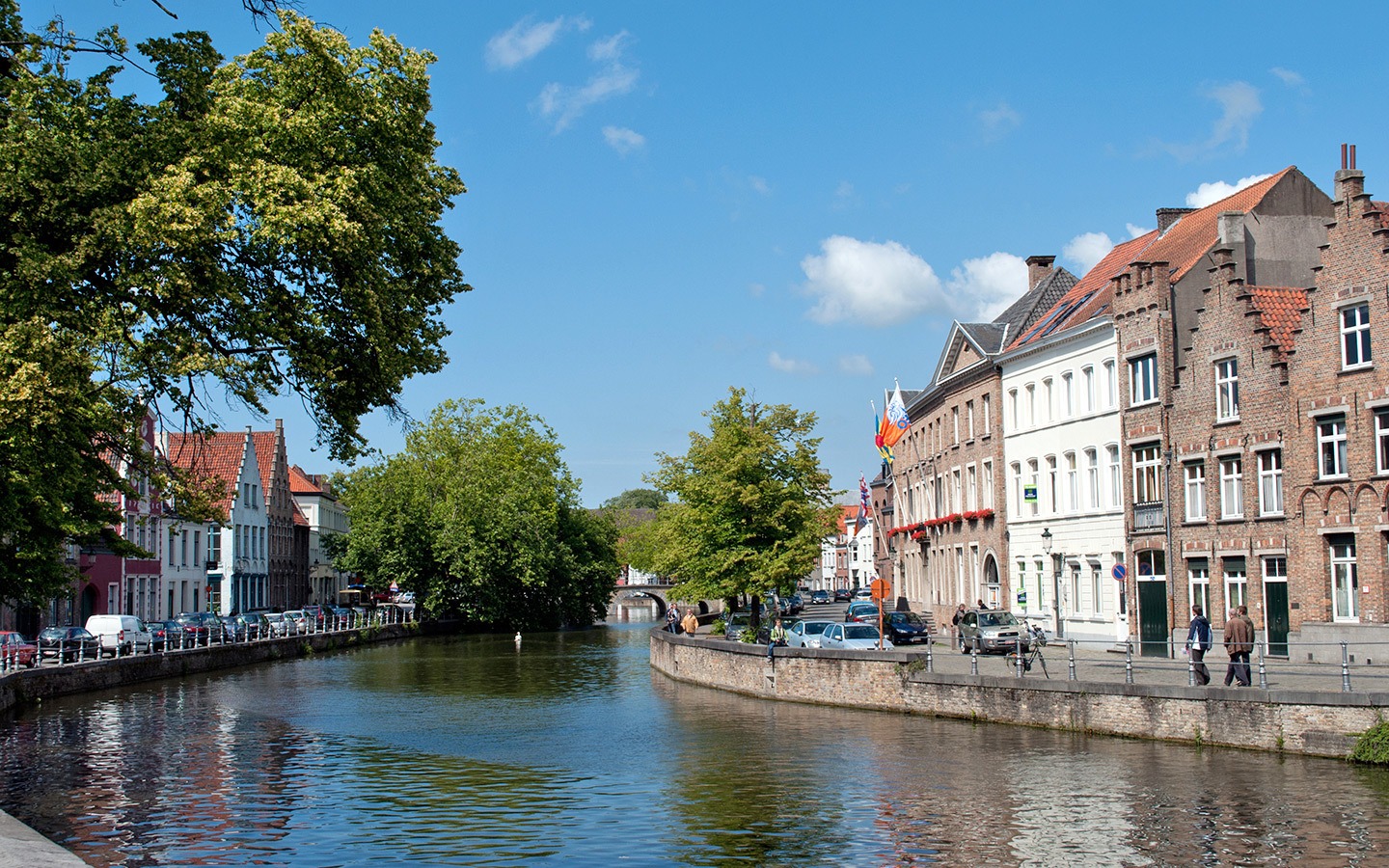
Then take an early train to the pretty Belgian city of Bruges (3 hours) for an afternoon feasting on local beer and chocolate. Next morning, climb to the top of the Belfort tower or take a boat trip along Bruges canals before catching an afternoon train to Paris (3 hours).
Paris has something for everyone – big-name museums like the Louvre and Musée d’Orsay, iconic monuments like the Eiffel Tower and Arc de Triomphe, parks, pavement cafés and boutique shops. Or why not try out some of the city’s more unusual attractions , like the Promenade Plantée railway line turned park or underground Musée des Égouts?
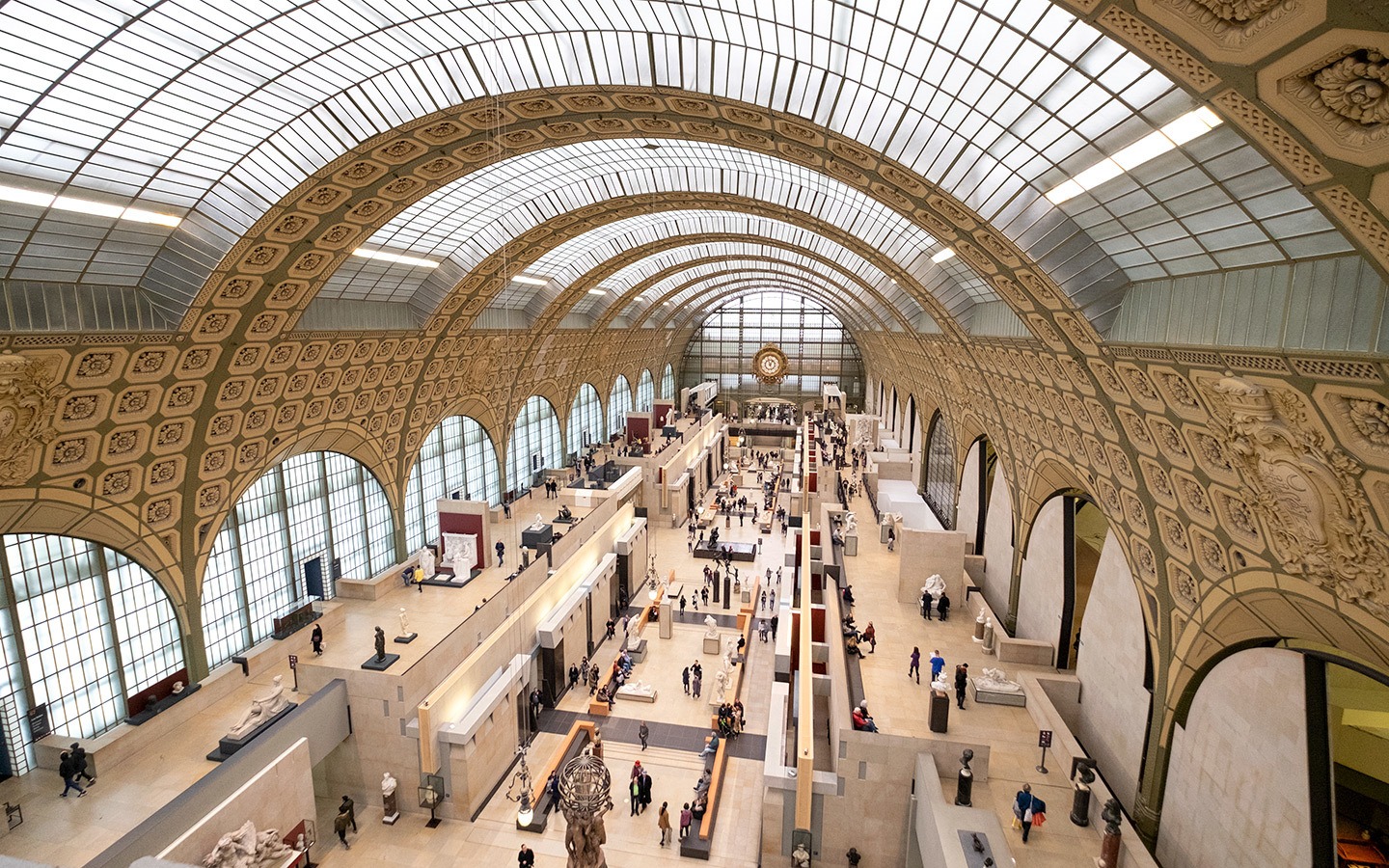
Then take the train on to Chur (5.5 hours) and spend the evening in Switzerland’s oldest city. Catch the Bernina Express the following morning – one of the most scenic train rides in Europe. This four-hour rail journey runs through the stunning scenery of the Swiss Alps, across bridges and viaducts past Alpine meadows and traditional mountain villages.
The Bernina Express terminates in Tirano in Italy, where you change onto a local train to connect on to Milan (3 hours). Then spend your final morning shopping and sightseeing in the Italian fashion capital’s historic heart before heading home.
Read the full Northern Europe by train itinerary
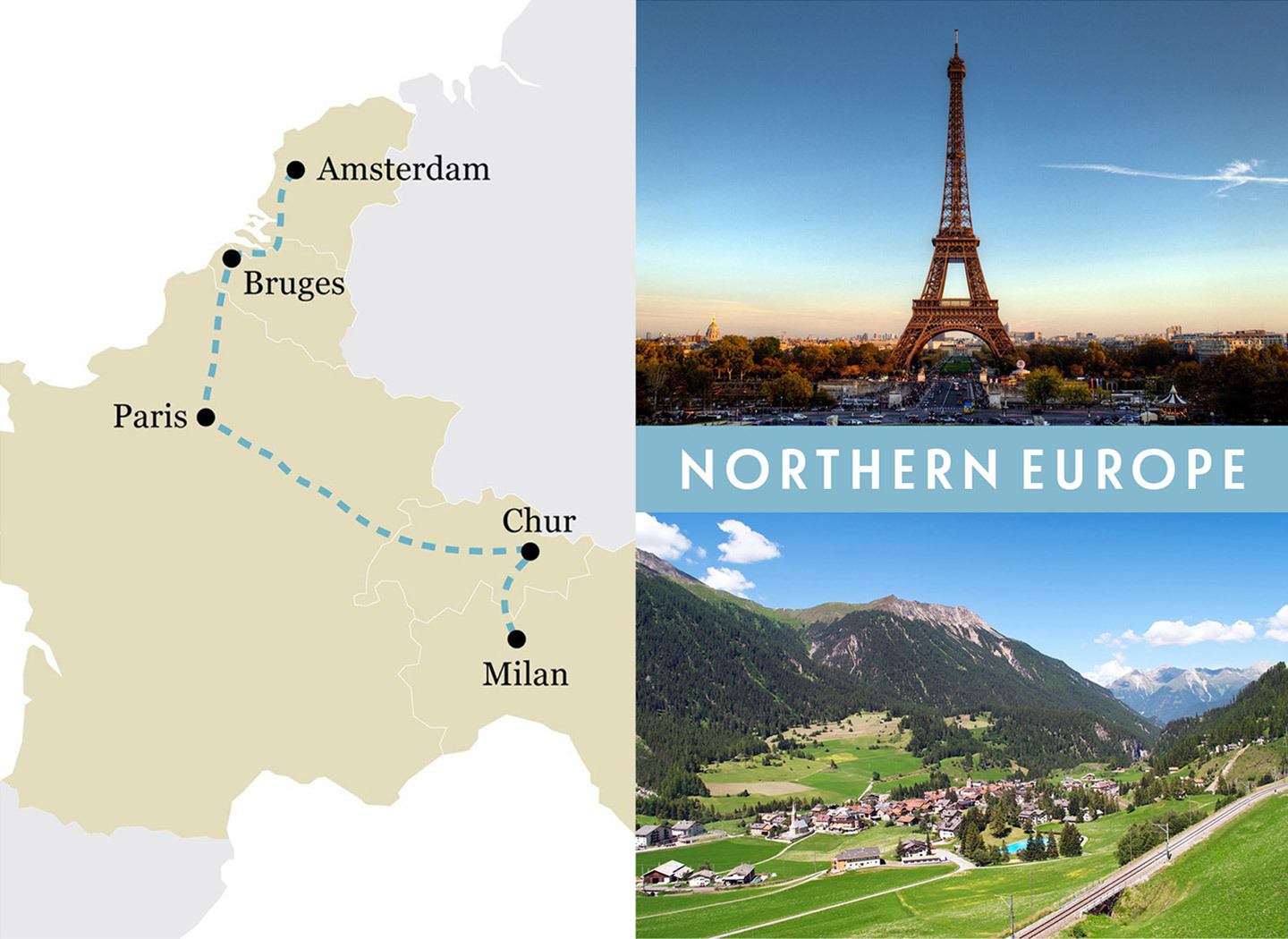
Italy: Palazzos and pizza
Venice > Florence > Rome > Naples > Sorrento > Sicily
This rail trip is a feast of Italian culture, history, food and wine, travelling from Venice in the north to Sicily in the south. Begin your trip with a full day in Venice – cruise the Grand Canal, get lost in the backstreets and brave the crowds at St Mark’s Square and the Doges Palace. Then take an early train on to Florence the following morning (2 hours).
Spend the afternoon soaking up Florence’s artistic atmosphere, with galleries, museums, churches and palazzi overflowing with Renaissance masterpieces, and try some delicious Tuscan food and wine. Next morning, take the short train journey to Rome (1.5 hours).
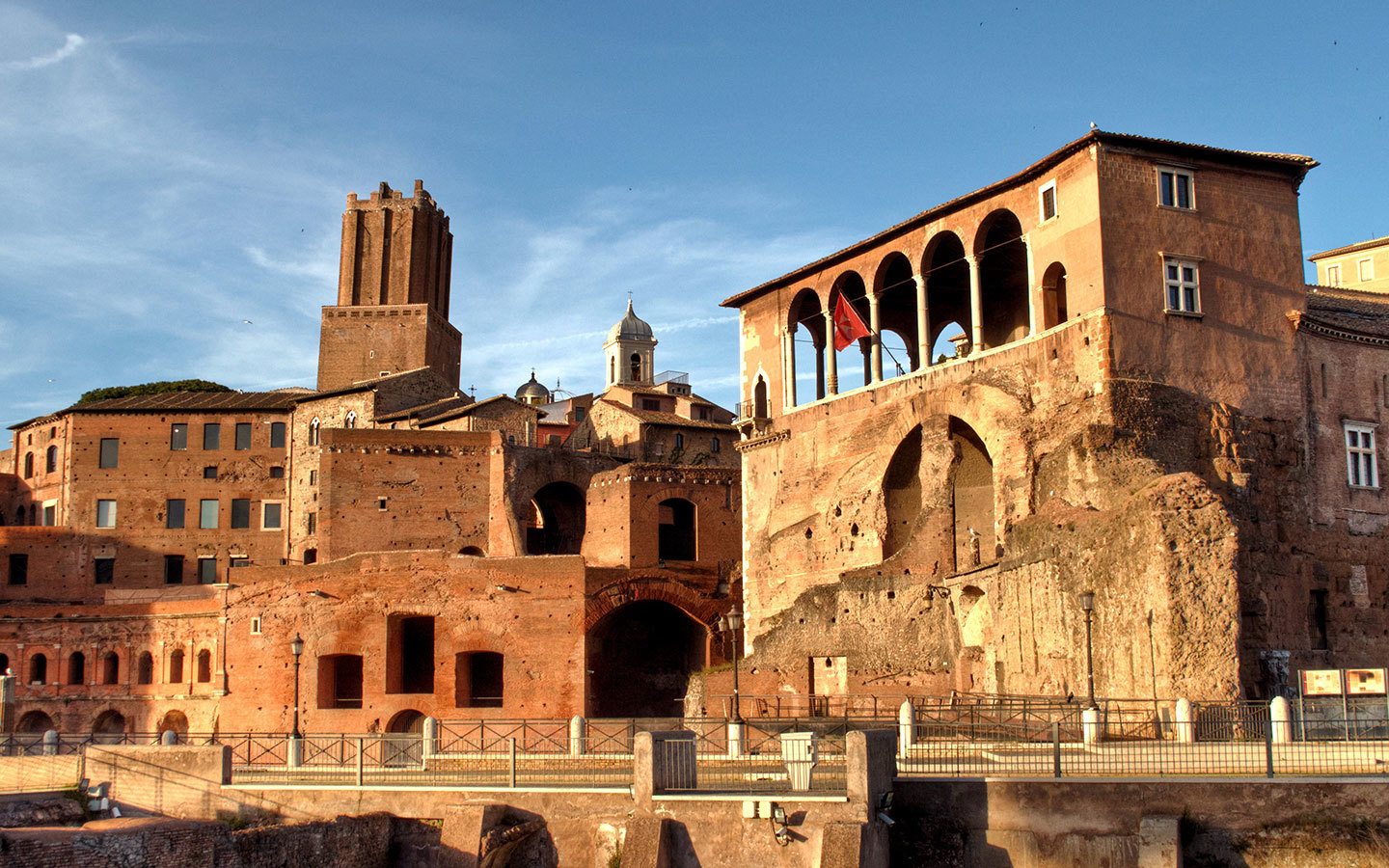
Explore some of Rome’s historic highlights, from the Colosseum and Pantheon to St Peter’s Basilica and the Trevi Fountain, before finding the perfect piazza for a sunset aperitivo .
Travel further south to the gritty coastal city of Naples (1 hour 10 mins) to spend the day exploring its archaeological treasures and stuffing yourself in the home of pizza before taking the Circumvesuviana railway south to Sorrento. Eat gelato and soak up the seaside views in Sorrento then spend the next day visiting some of the nearby sights.
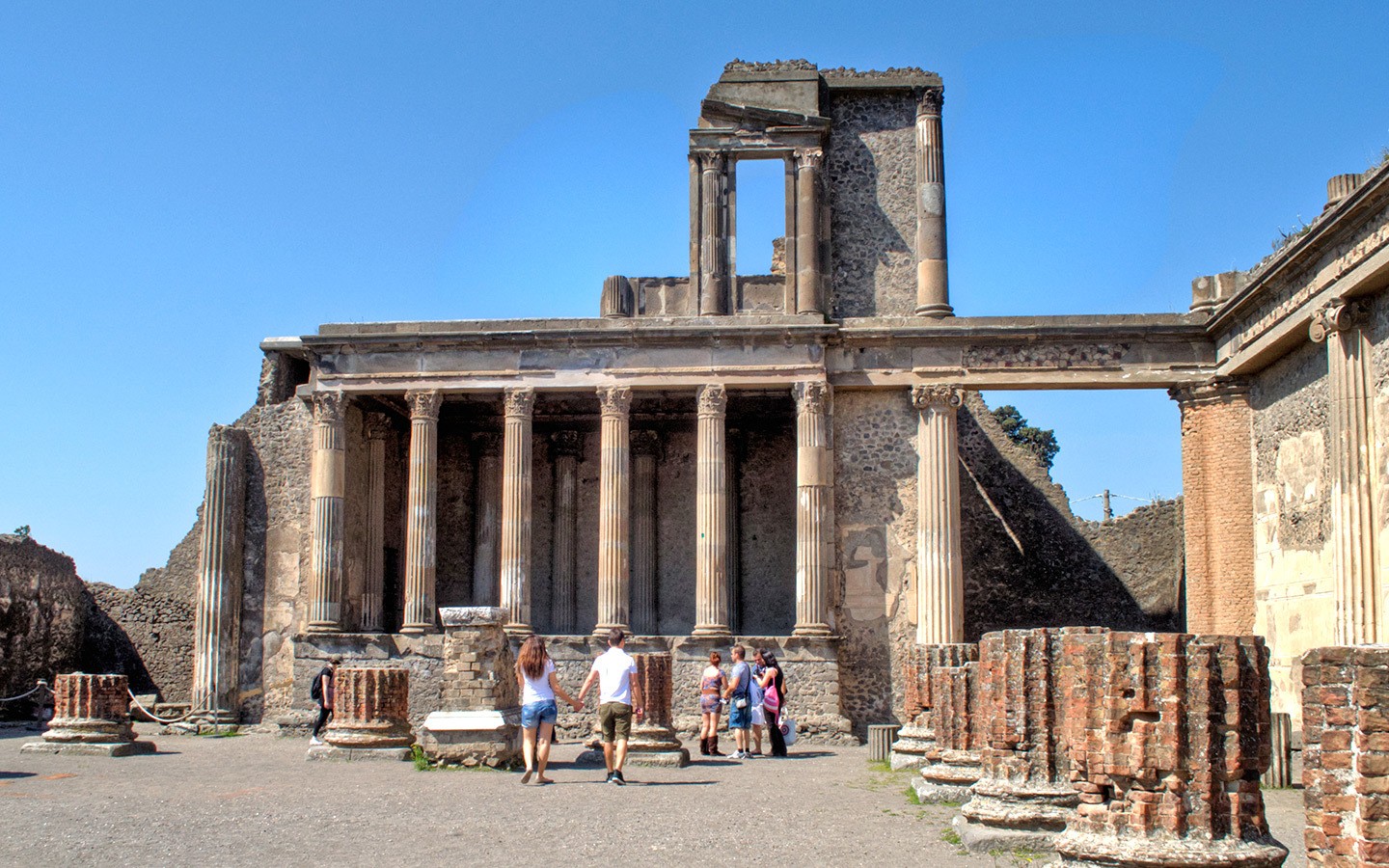
You can go back in time with a trip to the buried Roman cities of Herculaneum and Pompeii , climb Mount Vesuvius, take a boat trip along the coast to the colourful villages of the Amalfi Coast or head across the Bay of Naples to the glamorous island of Capri.
Then finish your trip by travelling south to Sicily. Getting there’s an adventure in itself – you can take the train all the way as it travels onto the ferry for the 30-minute boat trip across the Messina Straits. Once in Sicily, get a taste of the island by choosing from Taormina (6 hours 45 mins), Catania (7.5 hours) or Palermo (9 hours) for your final stop.
Read the full I taly by train itinerary
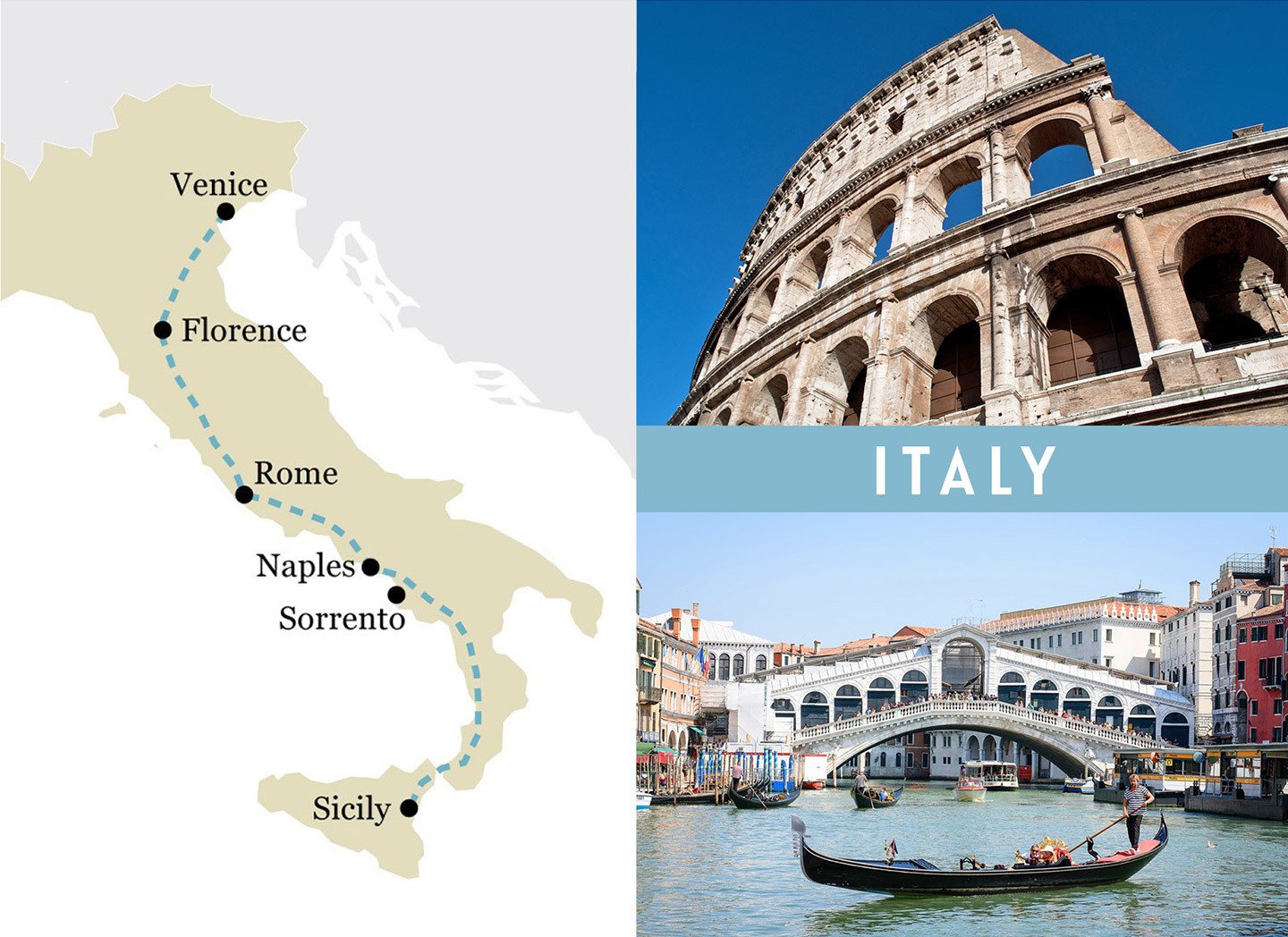
Eastern Europe: Concerts and cake
Budapest > Bratislava > Vienna > Ljubljana > Zagreb
Head east to some of Europe’s cultural capitals to experience world-class art, architecture and music as you travel to five different countries in just one week. Start your rail journey through Eastern European in the Hungarian capital Budapest, with a full day to soak up the city’s culture, steam in its thermal spa baths and party by night in its ruin pubs.

Then catch a train to Bratislava in Slovakia (2.5 hours), a compact city on the banks of the Danube. Spend the afternoon checking out Bratislava’s mix of 18th-century and Socialist-era architecture, from the blue Church of St Elisabeth to the quirky ‘UFO’ Bridge.
Then travel on to Vienna in Austria (1 hour by train – or if you fancy a change from rail travel, the two cities are also connected by a boat which runs along the Danube).
Visit an ornate palace, take an architecture walk around the Ringstrasse, watch the horses at the Spanish Riding School, catch a Mozart concert at the State Opera House and fill up on delicious sachertorte at a traditional Viennese coffee house.

Next travel on to Ljubljana in Slovenia (6 hours) along the route of the scenic Semmering Railway through Austria’s mountains. Spend the afternoon exploring the bridges and Baroque churches of Ljubljana’s charming old town and catch sunset from the castle.
Take a day trip from Ljubljana to beautiful Lake Bled (1 hour by train), famous for its island church, hilltop castle and creamy custard Bled cakes. Then end your trip in Zagreb, across the border in Croatia (2.5 hours), with a day wandering around the historic Upper Town, picnicking in Maksimir Park and visiting the Museum of Broken Relationships.
Read the full Eastern Europe by train itinerary
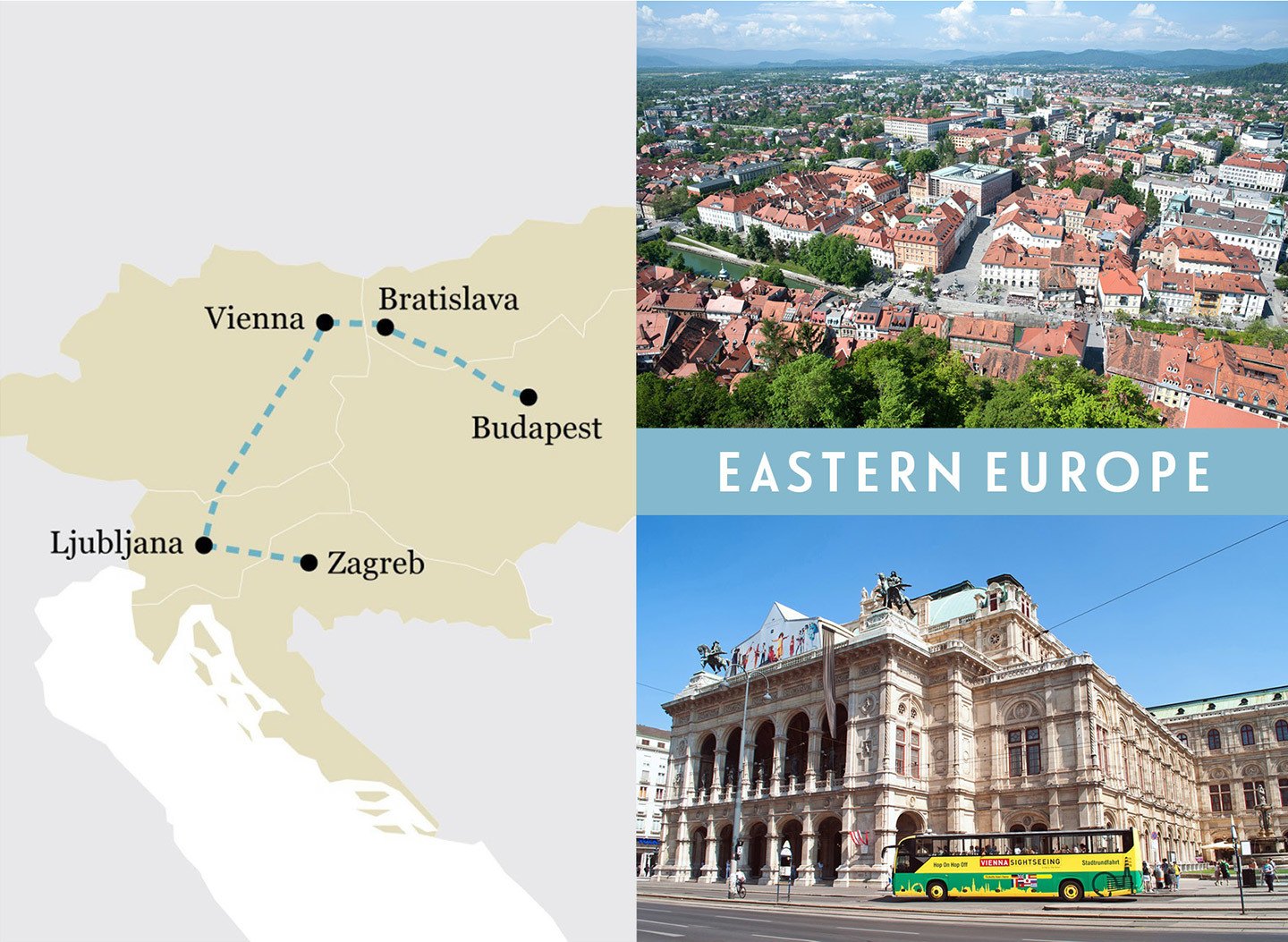
Spain & Portugal: Paella and port
Barcelona > Valencia > Madrid > Porto > Lisbon
This rail journey takes you across Spain and Portugal, from the Mediterranean to the Atlantic, with plenty of fantastic food and drink along the way. Start your trip in the Catalan capital city of Barcelona and spend a full day checking out Gaudi’s unique architecture, people-watching on Las Ramblas and soaking up the sunshine on Barceloneta beach.
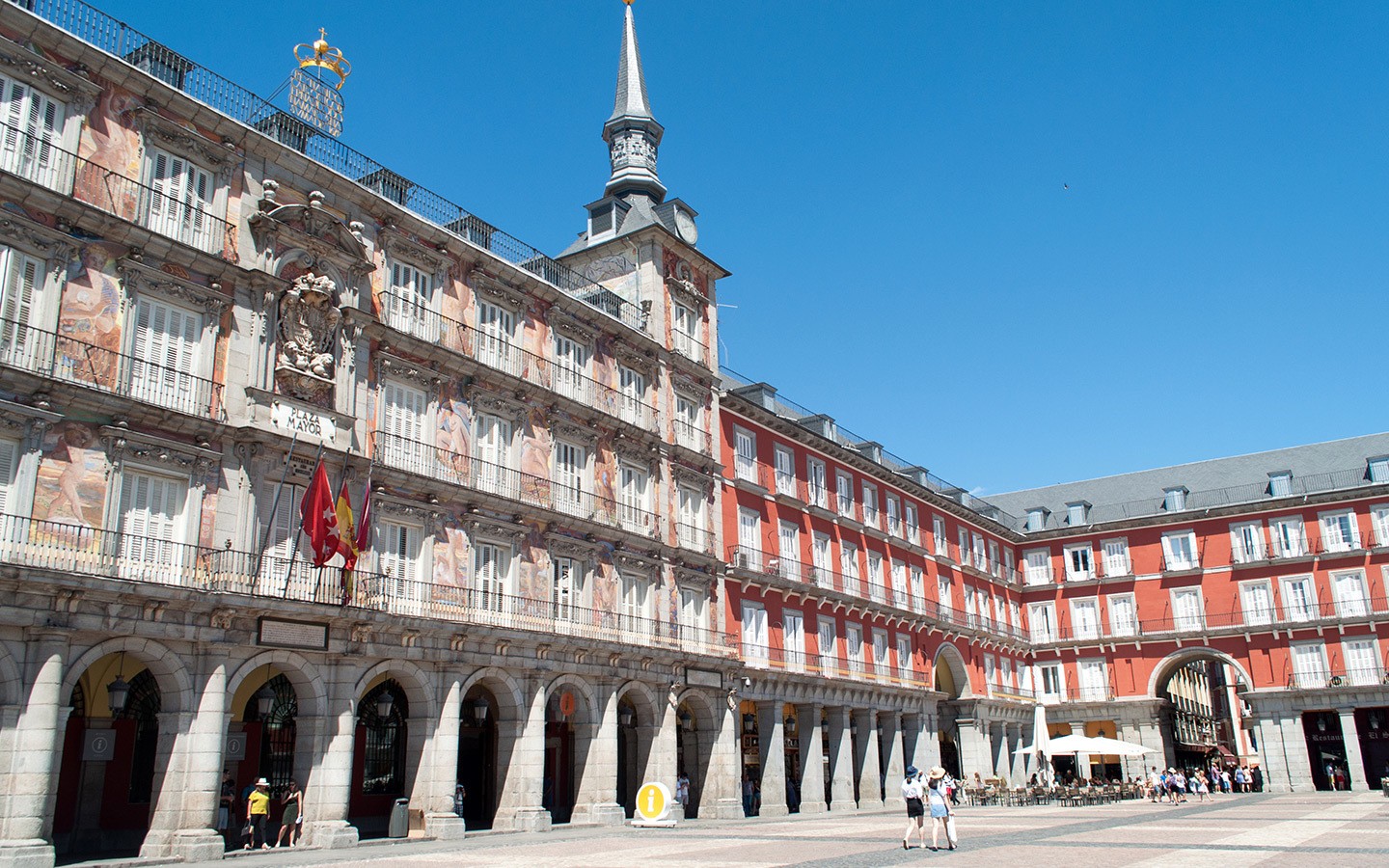
Then take an early train down the coast to Valencia (3 hours) where you have the afternoon to explore its mix of old and new – from the traditional buildings of the Ciutat Vella to the Space-Age City of Arts and Sciences – and try a paella in the city where it was created.
The next day take the short train ride inland to the Spanish capital Madrid (1.5 hours) for an evening of eating and drinking in the city’s tapas bars. Spend the next morning discovering Madrid’s parks, museums and historic buildings – from the famous Prado art museum and Mercado de San Miguel food market to the largest palace in Europe.

Then travel across the border to Porto (6 hours 45 minutes via Vigo) and spend the next day taking a traditional rabelo boat trip beneath the six bridges over the River Duoro and port-tasting at the famous producers across the river in Vila Nova de Gaia.
Finally travel south to Lisbon (3 hours) to end your trip with a feast of local seafood and pastel de nata custard tarts in Portugal’s capital. Check out the city’s street art scene, ride one of the vintage trams and get a workout climbing to the top of the Miradouro São Pedro de Alcantara or Miradouro do Graça for views across Lisbon’s red rooftops.
Read the full Spain and Portugal by train itinerary
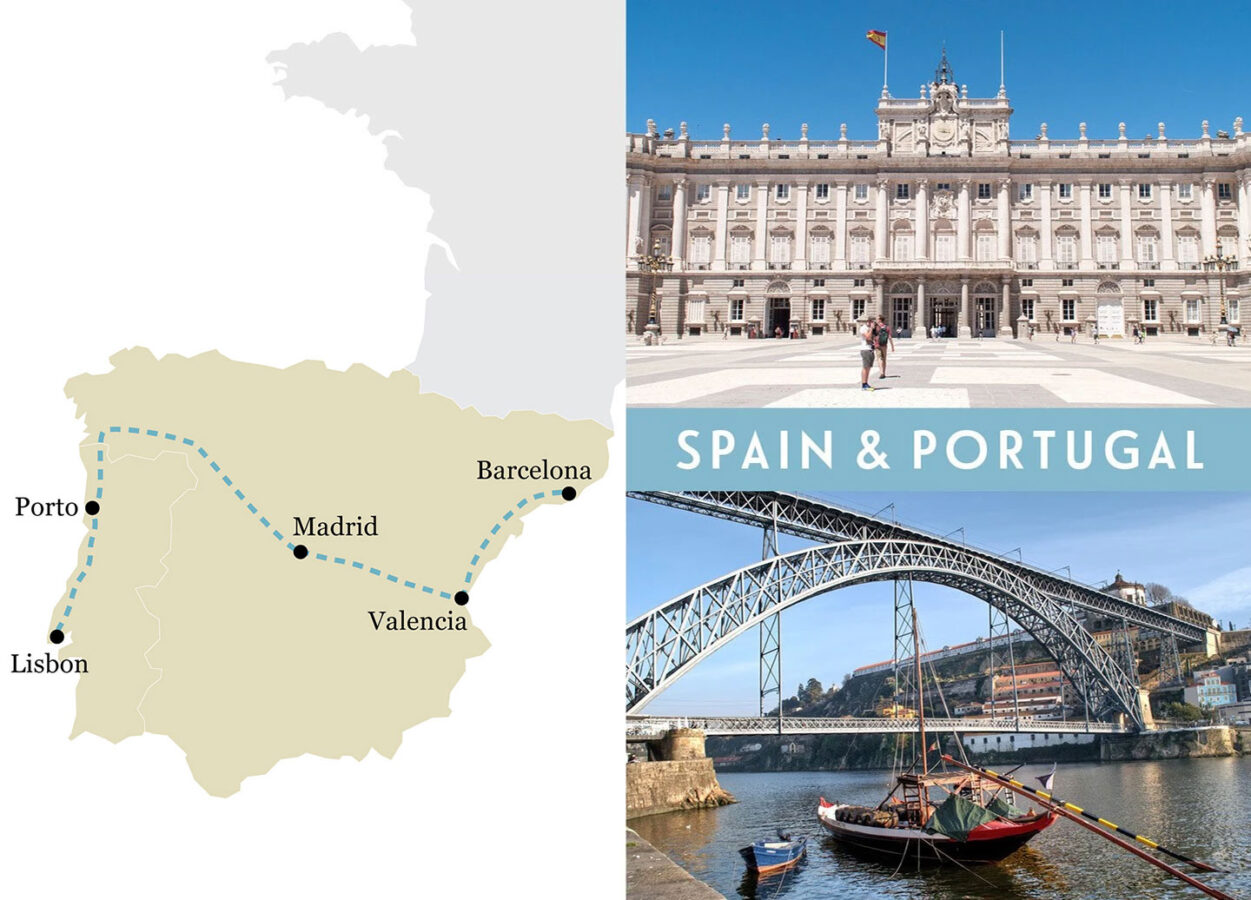
Scandinavia: Fjords and funiculars
Copenhagen > Stockholm > Oslo > Flåm > Bergen
This final Europe by train itinerary takes in some of the scenic highlights of Scandinavia on a journey across three countries. Start with a full day in Danish capital Copenhagen – cycle the cobbled streets, ride the Tivoli Gardens rollercoasters, walk along the canals of Christianshavn and check out Nyhavn’s design shops and Michelin-starred restaurants.
The following day, take the train across the border to Sweden, travelling to Stockholm across the Öresund Link, a unique combination of a bridge and a tunnel (5.5 hours). Then spend the afternoon and the new morning exploring Stockholm.
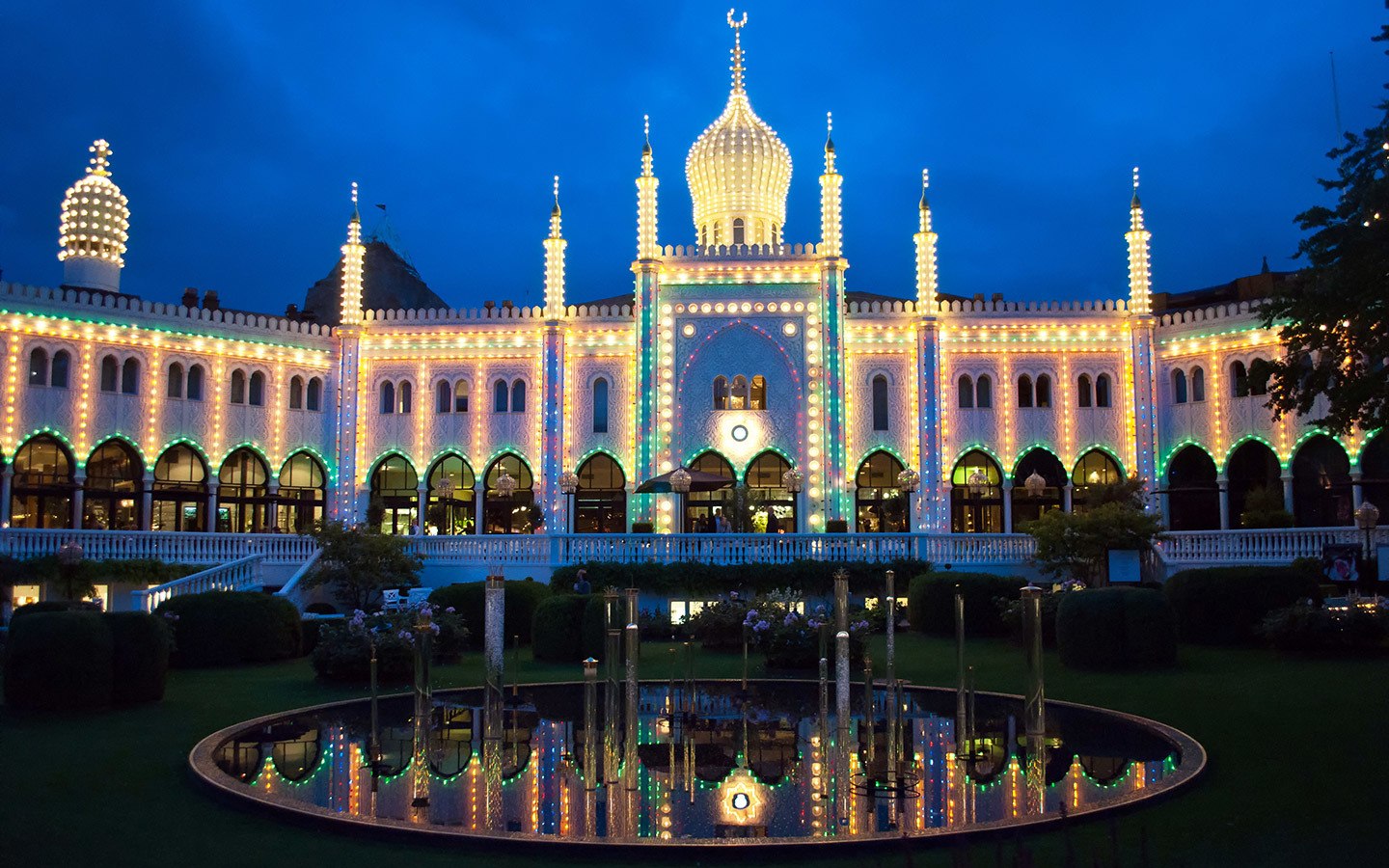
Wander through the medieval streets of Stockholm’s Gamla Stan old town, learn about Sweden’s most famous exports at the ABBA and Nobel Prize museums, or take a boat trip to explore some of the 30,000 islands which make up the Stockholm Archipelago.
Then catch an afternoon train across the border to Oslo in Norway (6.5 hours), where you have the next day to soak up Scandinavian culture at the city’s museums, art galleries and the impressive modern Opera House or historic 13th-century Akershus Fortress.
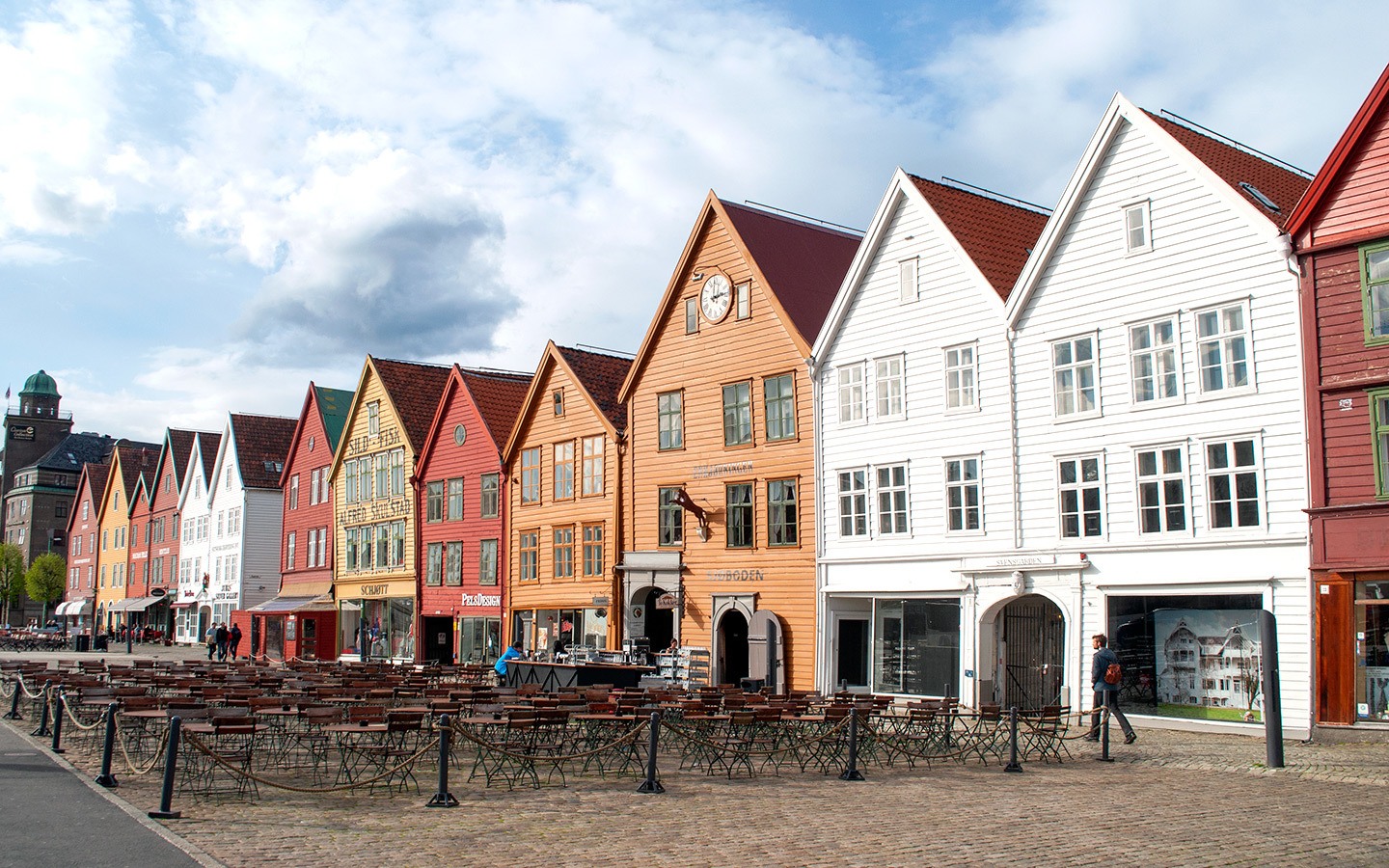
Next head west along the scenic rail route towards the coast – first taking a mainline train to Myrdal (4.5 hours) and then catching the stunning Flåmsbana mountain railway down to Flåm, passing mountain peaks, lakes and waterfalls (50 minutes).
Spend the night in Flåm on the edge of the fjords, and take a boat trip into the Sognefjord the next morning before travelling to Bergen (2 hours). Finish your trip visiting the colourful wooden houses of the UNESCO World Heritage Bryggen district, checking out the views from the Mount Fløyen funicular and eating seafood at Bergen’s fish market.
Read the full Scandinavia by train itinerary

Save for later
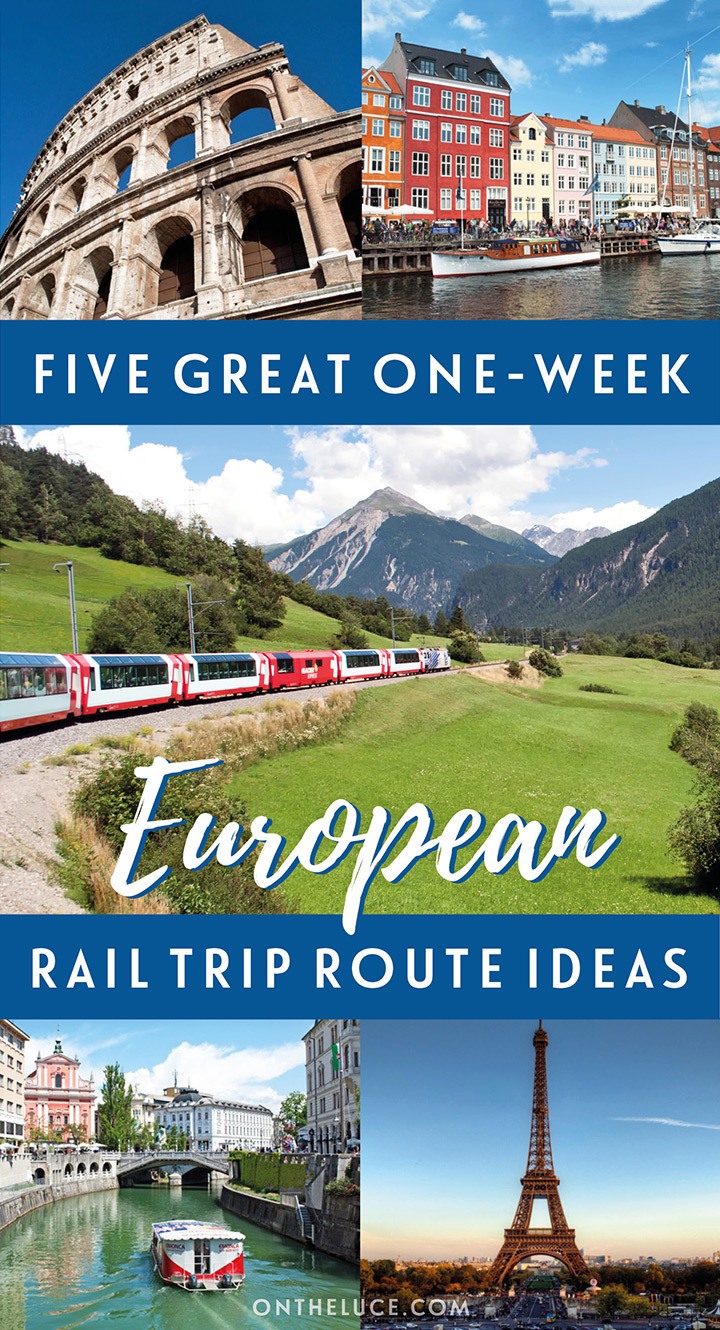
You might also like
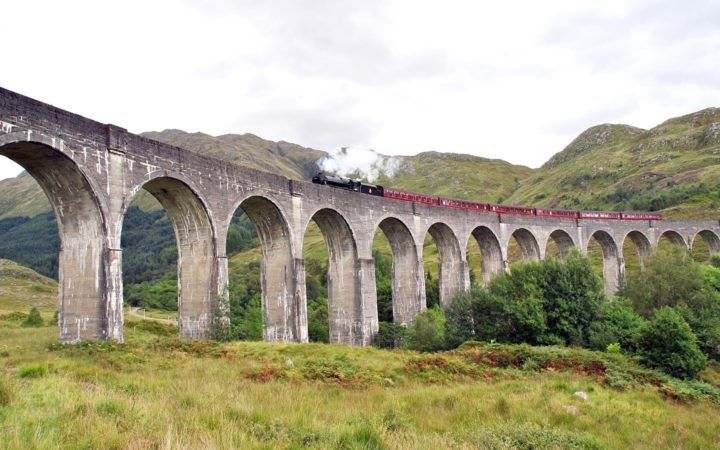
Britain by train: Five great one-week UK rail trip routes
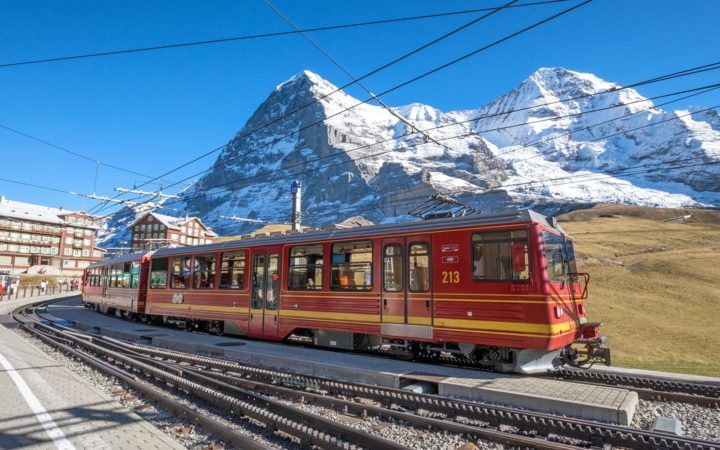
Tips for planning a European rail trip on a budget
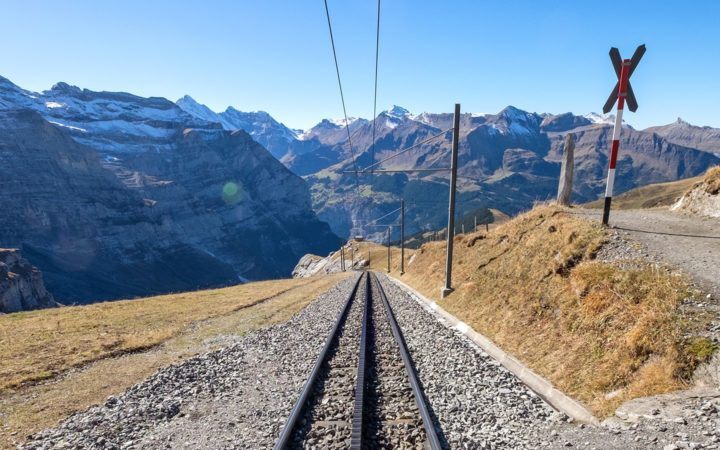
Does an InterRail pass save you money?
Monday 26th of February 2024
Hey Lucy, these train journey articles are fab and so informative, thanks!
I’m planning to do either the Scandinavian or Northern Europe one solo - would you say both of these would be safe for a solo female?
Monday 15th of May 2023
Hi Lucy, Hope you are well. Loved your article! Planning a trip with kids age 14 and 8. Want to see two countries ( france/switzerland) and end up in London. Would love to see switzerland through rail...like those lovely videos we keep seeing but also explore a bit more. How can we plan this best? Any advice/guidance will be much appreciated! Thank you in advance. Warm regards, Saba
Lucy Dodsworth
Friday 26th of May 2023
Hi Saba, depending on how long you have you could start in Milan and take the Glacier Express scenic train (https://www.ontheluce.com/swiss-scenic-trains-and-the-diy-alternatives/) from Tirano to Zermatt, then travel on to Geneva and into France, either heading down to the South of France or north along the border to Strasborg and Colmar towards Paris.
Sonia henry
Wednesday 26th of April 2023
Hi Lucy trying to get from Athens by train what countries can I do
Tuesday 2nd of May 2023
Hi, you could travel up through North Macedonia, Serbia, Croatia, Slovenia, Austria and Germany. Or another alternative is to take a ferry to Bari in Southern Italy and travel north from there.
Monday 27th of February 2023
Hi Lucy. Your feedback is very informative. I'm thinking about going to Norway in a couple weeks for about 7 days. What countries can I visit from Norway within that time? I'm looking to capitalize on as much places I can see. I mentioned Norway, but not quite sure as yet. I may consider Denmark. Let me know your recommendations.
Tuesday 7th of March 2023
Hi Darren, my Scandinavia itinerary covers Denmark, Norway and Sweden is a week so that should be easily doable in your timescale. You can also catch the ferry from Stockholm to Tallinn in Estonia if you also want to venture into the Baltics, there are frequent sailings and it's only around two hours.
Tuesday 20th of September 2022
Loved your article. Do you have any suggestions for an itinerary with an overnight train so that we can experience a night on a sleeper train (with a cabin and bathroom)?
Thursday 22nd of September 2022
Hi Pam, there are quite a few to choose from in Europe – I did a post on some of my favourites here https://www.ontheluce.com/european-night-trains/ but you could travel London to Scotland on the Caledonian Sleeper or the ÖBB Nightjet trains run from Austria to France and Germany, and both have cabins with private bathrooms.
🙌 Awesome, you're subscribed!
Thanks for subscribing! Look out for your first newsletter in your inbox soon!
Get us in your inbox
Sign up to our newsletter for the latest and greatest from your city and beyond
By entering your email address you agree to our Terms of Use and Privacy Policy and consent to receive emails from Time Out about news, events, offers and partner promotions.
Awesome, you're subscribed!
The best things in life are free.
Sign up for our email to enjoy your city without spending a thing (as well as some options when you’re feeling flush).
Déjà vu! We already have this email. Try another?
Love the mag?
Our newsletter hand-delivers the best bits to your inbox. Sign up to unlock our digital magazines and also receive the latest news, events, offers and partner promotions.
- North America
- South America
- South Pacific
- Los Angeles

The 14 most scenic train journeys in Europe
Pack a book, hop on board and enjoy the most scenic train journeys in Europe, from west to east and north to south

From glaciers and fjords to deserts and plains, Europe ’s home to some of the world’s most mind-blowing natural landscapes. And so, logically, it makes a heck of a lot of sense that the finest scenic rail journeys in Europe – train routes which are specifically designed to show off those spectacular landscapes – are amongst the best in the entire world .
The European continent’s finest scenic rail journeys also double up as pilgrimages to sites of incredible feats of engineering. These trains scale dramatic mountains, plunge through ginormous tunnels and span vast distances. You won’t just be gob-smacked by the view: you’ll wonder how on earth you’re able to experience it from the comfort of a locomotive.
And, before you say anything, no, scenic rail routes certainly aren’t just for rail geeks. Oh no. They’re also amongst the most comfortable and supremely romantic ways of getting around. As well as being much better for the planet than cars and planes, train travel is a destination in itself – and that’s even more the case with scenic routes. So, without further ado, here are our top 14 scenic railways in Europe right now.
RECOMMENDED: 🚂 The best train journeys in the world 🚅 The best train journeys in Asia 🚉 The world’s most spectacular train stations
Been there, done that? Think again, my friend.
Best train journeys in Europe
1. oslo to bergen, norway.

Connecting Oslo and Bergen is the fairytale Bergen Line. Take it in spring or autumn, and the voyage plays out like a living painting of all four seasons, as blustery flower meadows and lush valleys fade into icy forests of pine and glittering lakes. It’s a journey that’s quite possibly up there with the best in the world. It makes little difference which way you travel – views are equally OTT in both directions, on both sides of the tracks – but start in the morning to ensure you get a full day of views on the seven-hour trip. Ticket prices are generally quite affordable, but onboard food will set you back, so pack snacks.
2. Belgrade to Bar, Serbia and Montenegro

Often referred to as ‘the Balkan Express’, the 11-hour (on a good day) jaunt from Belgrade to Bar celebrates civil engineering and natural majesty. A whopping 435 bridges are traversed as the train trundles from the Serbian capital to Montenegro’s largest port, working as a time machine through the twentieth century in these parts. That means socialist architecture in Užice, modern ski resorts in Kolašin and the rapidly developing tourism of Montenegro’s southern coast. The last stretch is particularly stunning.
3. Palma to Sóller, Majorca

The electric train line that links Majorca’s capital, Palma, with the northern town of Sóller was originally built to ship oranges across the island. Its vintage wooden carriages rattle out of central Palma, through the city’s hinterlands and across the great dry plains of southern Majorca. After a stop in Bunyola, it’s a steady climb into the foothills – followed by the sudden pitch black of the Sóller tunnel. And then comes the best bit: a winding route through the lush peaks of the Serra de Tramuntana, with incredible views over Sóller’s distant church, before the final descent. The whole trip only takes an hour, leaving plenty of time to catch the heritage tram down to Port de Sóller and cool off in the sea before the return leg.
4. Blaenau Ffestiniog to Porthmadog, Wales

The small mining town of Blaenau Ffestiniog has fallen on tough times with the demise of the slate mining industry, but the little steam railway that connects it with Porthmadog harbour is a gorgeous route showing Wales at its most magnificent. Most of the journey snakes through Snowdonia National Park, with plenty of stop-off options for travellers with time on their hands. The Ffestiniog Railway Company is also the oldest independent railway company on the planet, another layer of awesome to this gorgeous experience.
5. Zermatt to St. Moritz, Switzerland

If you’ve high expectations of an experience named ‘The Glacier Express’, get ready for them to be exceeded and then some. This mountain marvel connects the resorts of Zermatt and St. Moritz, and the panoramic views make this one of the best ways to embrace all this dramatic landscape offers. The seven-and-a-half-hour journey traverses 291 bridges, 91 tunnels and a whole lot of beauty.
6. The Brocken, Germany

Another gorgeous journey from base to summit, The Brocken Railway picks wide-eyed passengers up from the settlement on the edge of Harz National Park called Drei Annen-Hohne. When the ride is over, those passengers find themselves on top of the world, or at least on top of the Brocken, the highest peak in Northern Germany. The journey is all tight turns, dramatic valleys, snowy vistas and lose-yourself imagery at a maximum speed of 40km/h.
7. Barcelona to Montserrat, Spain

There are plenty of ways to travel from Barcelona to the base of Montserrat mountain, but we’re putting our eggs firmly in the basket marked ‘train’. Actually, that would be ‘tren’ in Catalan, but you get the idea. There is a wide range of tickets available for the journey, though we recommend getting one that covers not just your train from Barcelona and then either the cable car or rack railway up the mountain itself, but also entry into the Montserrat Museum.
8. Fort William to Mallaig, Scotland

A constant on lists of the world’s most beautiful train journeys, Scotland’s Jacobite Steam Train is an 84-mile stunner traversing the magic of Scotland from Fort William to Mallaig. Booking ahead is an absolute must but totally worth it, as the journey transports visitors across a landscape that takes the term ‘rugged’ and redefines it in that inimitable Scottish way. Some call it the Hogwarts Express after its turn in the Harry Potter films, and you can insert your own magical comment here.
9. Myrdal to Flåm, Norway

Another frequent face on lists of the world’s best train journeys, the line between Myrdal and Flåm in Norway bridges the divide between impossibly cute and absolutely monolithic. That’s Norway in a nutshell, right? The small things are all quaint and idyllic, while the big ones bluster through stunning cliffs, jagged mountains and awe-inspiring scenery. The Flåm Railway climbs a whopping 867 metres into the sky and back, with a short shop at the Kjosfossen waterfall as the cherry on top.
10. Chur to Poschiavo, Switzerland

Switzerland is every bit as spectacular as its reputation suggests it might be. Actually, this place is woefully undersold and the rail route between Chur and Poschiavo is further proof, a jaw-dropping run that takes lucky passengers through the heart of the Swiss Alps. The famous mountains unravel on either side of the train, scenery that tends to see passengers put their cameras down and stare at the wonders at hand. The Bernina Express continues toward Tirano in Italy for those who need even more scenery.
11. La Rhune, France

What an absolute stunner of a ride. From the foot of the Pyrenees to the top via an early 1900s cog railway, the quaintest of quaint trains scaling a mighty height. It can be a little jarring, but the cobwebs are soon blown away by the stunning vistas and the majesty that awaits at the summit. The train only runs from April to September, round-trip tickets cost €20 (an absolute bargain), and it begins its journey in the town of Sare, some 10km or so from Saint-Jean-de-Luz.
12. Prague to Bratislava, Czech Republic and Slovakia
Okay, the scenery outside the window between Prague and Bratislava is nothing to write home about. Is it pretty? Sure, we’d expect nothing less from this part of the world, but the real fun of this route is found inside. A train journey spent in a Central European restaurant car is one of those most eccentric travel experiences, so make an immediate beeline for that part of the train when boarding. Line up some excellent Czech pivo and enjoy the conveyor belt of characters who will invariably make their way through the car.
13. Málaga to El Chorro, Spain

While you can’t get a train across the thrilling and terrifying Caminito del Rey walkway, you can still experience a great journey on the way. The train from Malaga to El Chorro is a stunner, a fast route that takes less than 45 minutes and will set you back less than a tenner. That gives you just under 45 minutes to enjoy the stunning scenery and dredge up the courage to traverse the famous walkway.
14. Mostar to Sarajevo, Bosnia and Herzegovina
Bosnia and Herzegovina doesn’t have many trains, but it remains an absolute must for lovers of rail travel. Why? Well, the stretch of track between Mostar and Jablanica quickly answers that question. It offers a jaw-dropping array of twists and turns that hug the cerulean blue of the ice-cold Neretva river, as jagged cliffs hem everything in from all sides. Sure, you need to get up early to catch the train, but it is worth that sunrise alarm. The route continues to Sarajevo, passing through charming Konjic and several satellite towns along the way.
[image] [title]
Discover Time Out original video
- Press office
- Investor relations
- Work for Time Out
- Editorial guidelines
- Privacy notice
- Do not sell my information
- Cookie policy
- Accessibility statement
- Terms of use
- Modern slavery statement
- Manage cookies
- Advertising
- Time Out Market

How to Travel Europe by Train: The Ultimate Beginner’s Guide to Discovering 33 Countries
Travel Europe by train for a comfortable and engaging experience. Start by checking train times and fares online. Use the Eurail Pass for flexible access to 33 countries. Pre-book tickets to fit your budget. Carefully plan your route to enjoy scenic views across Europe’s beautiful landscapes.
To save time, book tickets in advance for popular routes. Always check the train schedules, as they can vary by season. Equip yourself with essential items, such as a travel adapter, snacks, and a refillable water bottle. Traveling during off-peak hours can enhance your experience, allowing you to find a seat comfortably.
As you journey through Europe, embrace local culture and cuisine at each stop. Observe the beautiful landscapes as you travel from one destination to another. The adventure is in discovering hidden gems along the way.
Next, we will delve deeper into specific routes, recommended cities for first-time travelers, and tips to enhance your overall experience. Whether you desire bustling metropolises or quaint villages, traveling Europe by train reveals countless stories waiting to be discovered.
Table of Contents
What Is Train Travel in Europe and Why Is It Unique?
Train travel in Europe refers to the extensive network of railway systems that connect countries and cities across the continent, providing efficient and eco-friendly transportation options. European train travel is characterized by its reliability, speed, and versatility, making it a popular choice for both locals and tourists.
According to the European Commission, the rail transport system is integral to the European Union’s strategy for sustainable mobility. The Commission emphasizes the importance of developing a seamless rail network to enhance connectivity across member states.
The unique aspects of train travel in Europe include high-speed trains, scenic routes, and a variety of ticketing options. High-speed trains, such as Eurostar and TGV, drastically reduce travel time between major cities. Scenic routes, like the Glacier Express in Switzerland, offer breathtaking views of the landscapes. Various ticketing options, like Eurail Pass, provide flexibility in travel plans.
The International Union of Railways defines rail transport as a cost-effective and energy-efficient means of transport that reduces road congestion and minimizes environmental impact. Trains emit less greenhouse gas per passenger compared to cars and planes.
Factors contributing to the uniqueness of European train travel include historical investments in rail infrastructure, government policies promoting public transport, and increasing environmental awareness among travelers.
In 2022, rail networks in Europe transported over 650 million passengers, according to the European Union Agency for Railways. Projections suggest continued growth in passenger numbers as initiatives to improve and expand rail services, especially for cross-border travel, are implemented.
The broader impacts of train travel include reduced air pollution, decreased traffic congestion, and enhanced tourism. Improved accessibility helps promote local economies and cultures.
Train travel impacts several dimensions: health benefits include reduced air pollution, while environmental impacts promote sustainability. Socially, it fosters stronger connections among European nations through accessible travel.
Examples of impacts include increased tourism revenue for train-accessible regions and improved air quality in urban areas. The pilot program of renewable energy-powered trains in Germany illustrates the potential benefits.
To enhance train travel in Europe, the European Railway Agency recommends investment in infrastructure, promoting integrated ticketing systems, and developing high-speed rail networks. Increased collaboration among rail operators can also improve service efficiency.
Strategies to mitigate challenges include adopting digital technologies for bookings and real-time scheduling. Implementing renewable energy sources for train operations can significantly reduce environmental impacts.
What Are the Key Advantages of Traveling by Train in Europe?
Traveling by train in Europe offers numerous advantages, making it a popular choice among travelers.
The key advantages of traveling by train in Europe include: 1. Scenic Views 2. Comfort and Space 3. Convenience of Locations 4. Cost-Effective Options 5. Environmental Benefits 6. Flexibility in Travel Plans 7. Avoiding Airport Hassles
The diversity of perspectives on these advantages highlights how they appeal to different types of travelers. For instance, while some prioritize environmental benefits, others may focus on cost-effectiveness. Additionally, train travel can cater to both leisure travelers seeking scenic experiences and business travelers needing efficiency.
Scenic Views : Traveling by train in Europe provides access to breathtaking landscapes. Train routes often pass through picturesque regions, offering panoramic views of mountains, lakes, and vineyards. For example, the Glacier Express in Switzerland showcases stunning Alpine scenery. According to a survey by Eurostar, 85% of travelers value scenic views as a major advantage of rail travel.
Comfort and Space : Trains offer more spacious seating compared to planes. Passengers can move around, access onboard amenities, and enjoy a relaxed atmosphere. Many trains provide facilities such as dining cars and restrooms. Research by the European Commission found that 75% of train passengers rated comfort as a key benefit of traveling by train over flying.
Convenience of Locations : Train stations are often centrally located in cities, simplifying access to urban attractions. This saves time and transport costs typically associated with airports. For example, Paris Gare de Lyon places travelers right in the heart of the city. The International Union of Railways (UIC) notes that over 120 European cities have direct train connections, enhancing travel convenience.
Cost-Effective Options : Train travel can be more affordable, especially with advanced booking and discount cards. Various regional passes offer unlimited travel within specific areas, which can lead to significant savings. A study by Rail Passengers Association found that travelers saved an average of 30% by using rail passes in Italy and France.
Environmental Benefits : Trains are generally more environmentally sustainable than cars or planes. The European Environment Agency reports that rail travel produces lower CO2 emissions per passenger. With growing awareness of climate change, many travelers prefer trains for eco-friendly options.
Flexibility in Travel Plans : Trains often allow for last-minute bookings without high fees. Passengers can adjust their schedules easily, making spontaneous trips more feasible. According to a report by the European Commission, 70% of rail travelers appreciate this flexibility compared to rigid flight schedules.
Avoiding Airport Hassles : Train travel typically involves fewer security checks and no lengthy check-in procedures. This saves time and reduces stress compared to airports, where delays often occur. A study from the European Commission indicates that 60% of travelers prefer trains for their simplicity over flying.
These advantages demonstrate why train travel remains a favored option for exploring Europe, catering to various needs and preferences.
Which European Train Pass Is Best for Your Itinerary?
The best European train pass for your itinerary depends on your travel plans and destinations. Here are some popular options to consider:
- Eurail Pass
- Interrail Pass
- Rail Passes for Specific Countries
- Regional Passes
- Flex Passes
To choose the right train pass for your needs, let’s explore each option in detail.
Eurail Pass : The Eurail Pass is designed for non-European residents traveling across multiple countries in Europe. This pass provides unlimited travel on the rail network that includes 33 countries. Consumers appreciate the flexibility to travel and the ability to make spontaneous plans. For example, the Eurail Global Pass allows travel in more than one country, making it an excellent choice for diverse itineraries.
Interrail Pass : The Interrail Pass is similar to the Eurail Pass but is available exclusively for European residents. It functions similarly, providing access to trains across multiple countries. Users benefit from the various options, such as the Interrail Global Pass and the Interrail One Country Pass, which focuses on specific nations. For instance, if a traveler wants to explore France, the One Country Pass would be more cost-effective.
Rail Passes for Specific Countries : Many countries in Europe offer their own rail passes. Examples include the BritRail Pass in the UK, the Swiss Travel Pass, and the German Rail Pass. These passes cater to travelers who want to concentrate on one specific area. For instance, the Swiss Travel Pass includes scenic train journeys, buses, and boats, making it ideal for tourists wanting to see Switzerland’s landscapes.
Regional Passes : Regional passes can be advantageous for travelers covering specific geographical regions. For example, the Benelux Pass provides unlimited travel in Belgium, Netherlands, and Luxembourg. Travelers seeking to explore nearby countries may find regional passes more economical and efficient.
Flex Passes : Flex passes offer travelers the ability to choose a limited number of travel days within a specific time period. This option suits those with a less rigid itinerary, allowing flexibility while still benefiting from cost savings. For instance, a 3-day in 1 month pass enables travelers to select which days they want to use the train, maximizing their travel experience.
Selecting the right train pass depends on individual preferences, travel routes, and the desire for flexibility. Travelers should analyze their itineraries and weigh the benefits of each option before making a decision.
What Are the Most Scenic Train Journeys Across Europe?
The most scenic train journeys across Europe offer stunning landscapes and memorable experiences. Travelers can enjoy breathtaking views while comfortably riding through diverse regions.
- Glacier Express – Switzerland
- Bernina Express – Switzerland
- West Highland Line – Scotland
- Flåm Railway – Norway
- The Orient Express – France to Italy
- Cinque Terre Train – Italy
- The Rapid City Express – Germany
- The Coastal Grand Tour – Norway
- The Douro Line – Portugal
- The Trans-Siberian Railway – Russia (partly in Europe)
These journeys showcase a variety of stunning vistas, from mountains and lakes to coastal views and charming villages. Different experiences can resonate with travelers, depending on personal preferences and desired scenery while traveling.
Glacier Express: The Glacier Express operates between Zermatt and St. Moritz in Switzerland. This route is known as the “slowest express train in the world.” It offers breathtaking panoramas of the Swiss Alps and numerous bridges and tunnels. Travelers admire picturesque landscapes, including snow-capped peaks and lush valleys. According to the Swiss Travel System, the train covers a distance of 291 kilometers, crossing 291 bridges and passing through 91 tunnels.
Bernina Express: The Bernina Express connects Chur and Tirano, traveling through the Swiss Alps. This route is a UNESCO World Heritage site. The journey showcases glaciers, lakes, and remarkable landscapes. It reaches an altitude of 2,253 meters at the Bernina Pass. Travelers can appreciate views of the Morteratsch Glacier and the stunning landscapes of the Alpine region. According to the official Bernina Express site, the scenic views change dramatically as the train descends from the mountains.
West Highland Line: The West Highland Line in Scotland runs from Glasgow to Mallaig, passing through the Highlands. This journey features stunning moorlands, mountains, and lochs. Notable sights include the famous Glenfinnan Viaduct, made popular by the Harry Potter films. The 164-kilometer route is praised for its beauty and historic significance, attracting numerous tourists each year. According to VisitScotland, this line is often considered one of the most scenic train journeys in the UK.
Flåm Railway: The Flåm Railway in Norway is one of the steepest standard-gauge railway lines in the world. It connects Flåm, situated at the end of the Sognefjord, to Myrdal on the Bergen Line. The 20-kilometer ride includes cascading waterfalls and lush vegetation. Travelers often cite the Kjosfossen waterfall as a highlight. The Norwegian National Rail Administration recognizes the Flåm Railway for its breathtaking scenery and unique engineering.
The Orient Express: The legendary Orient Express historically connected Paris to Istanbul. It offers a glimpse into a luxurious travel experience of the past. The modern version includes various journeys through beautiful European landscapes. Travelers enjoy picturesque scenes of vineyards, chateaux, and historic towns. According to the Belmond group, the train combines fine dining with classic elegance, enhancing the overall experience.
Cinque Terre Train: The Cinque Terre train connects five beautiful coastal villages in Italy. The route travels along steep cliffs, offering stunning views of the Mediterranean Sea. The train operates between Monterosso, Vernazza, Corniglia, Manarola, and Riomaggiore. Travel experts frequently recommend this train ride for its accessibility and breathtaking vistas. The journey allows passengers to experience the charm of these villages both on and off the train.
The Rapid City Express: This German train journey runs through the scenic landscape of Bavaria. It connects cities and villages, allowing travelers to enjoy charming countryside and historical sites. Passengers explore fairytale castles, including Neuschwanstein. Travel bloggers often highlight the cultural aspects, emphasizing the local cuisine and traditions.
The Coastal Grand Tour: The Coastal Grand Tour in Norway features scenic routes from cities like Bergen to Ålesund. Travelers take in fjords, mountains, and the rugged coastline. It’s celebrated for picturesque coastal views and connections to regional attractions. According to VisitNorway, this journey is recommended for outdoor enthusiasts and photography lovers.
The Douro Line: The Douro Line in Portugal runs along the Douro River, known for its terraced vineyards. The train connects Porto to the town of Pocinho. Passengers admire the rolling hills and lush vineyards while sampling local wines. The World Heritage designation by UNESCO emphasizes the cultural and historical importance of the region, making it a popular travel destination.
The Trans-Siberian Railway: The Trans-Siberian Railway is a significant journey crossing multiple countries, including parts of Europe. The route connects Moscow to Vladivostok, showcasing diverse landscapes. Travelers experience everything from vast plains to rugged mountains. Its historical significance and stunning scenery attract adventure seekers and cultural enthusiasts alike.
These scenic train journeys reflect the unique charm
How Can You Effectively Plan Your Train Trip Through Europe?
To effectively plan your train trip through Europe, focus on organizing your itinerary, researching train systems, booking tickets in advance, and considering travel passes.
Organizing your itinerary involves selecting key destinations and daily travel routes. Start by mapping out the cities you want to visit. Popular options include Paris, Rome, Berlin, and Amsterdam. Each city offers unique attractions; for example, Paris has the Eiffel Tower, while Rome is known for the Colosseum. Ensure your itinerary allows for enough time to explore each location without rushing.
Researching train systems is crucial for efficient travel. Europe has several major train companies, such as Eurostar, Thalys, and the Deutsche Bahn. Each country may have its own regional services. For instance, Italy has Trenitalia and Italo trains. Understanding the schedules and different classes of service enables you to plan accurately. Websites like Eurail and Rail Europe provide comprehensive information about routes and schedules.
Booking tickets in advance can save both time and money. Many trains offer discounts for early bookings. For example, tickets for high-speed trains like Eurostar can be significantly cheaper if purchased weeks in advance. Keep an eye out for promotional deals, especially during the off-peak season which runs from November to March.
Considering travel passes can enhance flexibility. The Eurail Pass allows unlimited travel across multiple countries for a set number of days. This provides cost-effectiveness for travelers who plan to visit several cities. Similarly, the Interrail Pass offers similar benefits for European residents. According to Eurail’s 2021 data, over 1 million passes were sold, indicating its popularity among travelers.
Additionally, familiarize yourself with train etiquette and rules. Arrive at the station early, know your platform, and validate your ticket if required. It’s advisable to keep your belongings secure, especially in busy hubs.
By effectively organizing your itinerary, researching train services, booking tickets in advance, and considering travel passes, you can ensure a smooth and enjoyable train journey through Europe.
What Essentials Should You Prepare for a Comfortable Train Experience?
To ensure a comfortable train experience, you should prepare essential items that enhance your journey. This includes necessities for entertainment, convenience, and personal comfort.
- Comfortable Clothing
- Snacks and Hydration
- Entertainment Options
- Charging Devices
- Travel Documents
- Personal Care Items
- A Travel Pillow or Blanket
- Cash and Local Currency
These essentials not only cater to basic needs but also enhance the overall travel experience by ensuring comfort and enjoyment during your train journey.
1. Comfortable Clothing: Comfortable clothing is crucial for a pleasant train experience. Wearing loose-fitting clothes allows for easy movement and can help regulate body temperature. According to a survey by Travel + Leisure, travelers express discomfort when wearing formal or tight outfits, especially on long journeys. Fabrics like cotton or moisture-wicking materials are recommended for extended wear.
2. Snacks and Hydration: Snacks and hydration are important for maintaining energy levels throughout the journey. Healthy snacks like nuts, fruits, or granola bars can provide quick energy boosts. A 2018 study published in the Journal of Travel Research found that having access to snacks minimized discomfort and stress during travel. Travelers should also carry a refillable water bottle to stay hydrated, as train journeys can sometimes lack convenient access to refreshments.
3. Entertainment Options: Entertainment options ensure enjoyment and distraction during lengthy train rides. Books, podcasts, or downloaded movies can provide engaging content. A study from the University of Southern California highlights that interactive entertainment enhances mood and reduces travel-related anxiety. Many travelers find that a mix of digital and print media keeps their experience varied and enjoyable.
4. Charging Devices: Charging devices are essential in today’s digital age, as many travelers rely on their electronics for navigation, entertainment, and communication. External power banks or chargers can prevent devices from running out of battery. According to a report by the International Journal of Transportation, having charged devices significantly aids in overall travel satisfaction.
5. Travel Documents: Travel documents, such as tickets, ID, and itinerary details, are necessary for a smooth journey. Keeping these items organized helps reduce stress and confusion. A study conducted by the Transportation Research Board emphasizes the importance of having all travel documents easily accessible to streamline the boarding process and comply with regulations.
6. Personal Care Items: Personal care items, such as hand sanitizer, tissues, and lip balm, contribute to hygiene and comfort. Maintaining cleanliness is particularly important in shared spaces like trains. The World Health Organization suggests that regular handwashing and the use of sanitizer can reduce the spread of germs, enhancing passenger health onboard.
7. A Travel Pillow or Blanket: A travel pillow or blanket significantly enhances comfort during long journeys. A travel pillow supports the neck and helps improve sleep quality, while a lightweight blanket can provide warmth. According to the Sleep Research Society, good sleep during travel positively affects mood and reduces fatigue.
8. Cash and Local Currency: Carrying cash and local currency is beneficial for purchases during stops or in areas where card payments may not be accepted. Financial experts recommend keeping small denominations handy for convenience. The need for cash is particularly emphasized in regions where banking infrastructures are limited.
In summary, preparing these essentials can greatly improve your comfort and enjoyment during train travel, making your journey a more pleasant experience.
What Safety Precautions Should You Take While Traveling by Train in Europe?
Traveling by train in Europe requires several safety precautions to ensure a secure journey. These precautions include being aware of your surroundings, keeping personal belongings secure, and understanding emergency protocols.
- Stay vigilant and aware of your surroundings.
- Keep personal belongings secure and avoid displaying valuables.
- Follow proper train etiquette and comply with regulations.
- Understand emergency procedures and locate exits.
- Choose well-lit and populated areas at stations.
- Use reputable travel services for tickets and accommodations.
To safely navigate train travel in Europe, it is crucial to understand each of these aspects in detail.
Staying vigilant and aware of your surroundings : Staying vigilant and aware of your surroundings is vital while traveling by train. Being attentive can help you recognize potential threats, such as pickpockets or unusual behavior from others. Research shows that awareness can significantly reduce the risk of encountering problems during your journey.
Keeping personal belongings secure and avoiding displaying valuables : Keeping personal belongings secure and avoiding displaying valuables is a smart strategy. Use anti-theft bags or neck pouches to store your passport, money, and electronics. According to a 2021 report by the European Travel Commission, incidents of theft increased in crowded areas like train stations, so taking simple precautions can safeguard your belongings.
Following proper train etiquette and complying with regulations : Following proper train etiquette and complying with regulations helps ensure a pleasant journey. This includes respecting quiet zones, using designated areas for luggage, and refraining from disruptive behavior. Compliance also enhances safety by maintaining order and minimizing distractions for train staff.
Understanding emergency procedures and locating exits : Understanding emergency procedures and locating exits should be a priority for travelers. Familiarize yourself with safety instructions posted on the train and know the locations of exits. In case of an emergency, having this knowledge could save valuable time and aid in ensuring personal safety.
Choosing well-lit and populated areas at stations : Choosing well-lit and populated areas at stations maximizes safety. Sudden changes in crowd levels can happen, especially at night. Opt for areas with more people and better lighting to decrease the risk of encountering potentially dangerous situations.
Using reputable travel services for tickets and accommodations : Using reputable travel services for tickets and accommodations is important for security and peace of mind. Consider using official train websites or well-known travel agencies for booking to reduce the risk of fraud or scams. Consumer protection laws in Europe often cover reputable service providers, ensuring traveler safety and rights.
By following these safety precautions, you can enhance your sense of security and enjoy a comfortable train journey across Europe.
- How to travel dolomites
- How to travel with cats
- How to travel comfortably on long flights
- How to travel cheaply
- How to travel cheap to florida
- Search Please fill out this field.
- Manage Your Subscription
- Give a Gift Subscription
- Newsletters
- Sweepstakes
- Bus and Train Travel
I'm a Luxury Train Travel Expert — and These Are the 5 European Journeys I Always Recommend
Why your next trip to Europe should be on a luxury train, according to one A-List advisor.
Golden Eagle Danube Express
La dolce vita orient express, venice simplon-orient-express, other popular trains.
- The Cost of Luxury Train Travel
Courtesy of Belmond
Traveling by train is one of the best ways to cover a lot of ground in a single journey. Not only does train travel provide a sense of ease and reduce the stress of planning, but it also adds an element of whimsy that can’t be replicated. Plus, it’s like being a member of an elite club; fellow passengers come from all over the world and friendships can be forged easily.
For your next European adventure, sip Champagne, savor some caviar, and let someone else do the driving with these luxury train journeys.
Relax as the Golden Eagle Danube Express chugs through the Swiss Alps trimmed in snow, or continues on from Paris to Istanbul (the latter officially launches in 2025). This train is the ultimate in easy living. With its casual dress code and unique itineraries, the Golden Eagle is a perennial favorite. And despite its tiny kitchens, the Golden Eagle prides itself on its dining options. The food will always reflect the flavors of the countries you travel through, too.
Italy’s new La Dolce Vita Orient Express is scheduled to leave Roma Ostiense station for the first time in spring 2025, and bookings are now available. The company has already announced its incredible new executive chef: German-born Heinz Beck, from the only three-starred Michelin restaurant in Rome, La Pergola. The train will pay tribute to “La Dolce Vita” in the 1960s, and elegance is key. It’s evident in the 31 cabins and suites, all with cozy bedding, chocolate wood accents, and massive picture windows.
Another favorite is the Venice Simplon-Orient-Express (VSOE) , complete with restored vintage cars. Especially popular is VSOE’s classic six-day, five-night Paris-to-Istanbul journey, offered in both directions twice a year. The vintage train retraces its famed route inaugurated more than a century ago by Orient Express creator Georges Nagelmackers.
If you really want over-the-top luxury, opt for the Grand Suite. A recent client of The Society of International Railway Travelers told us they loved the Vienna Grand Suite, which as a double bed, a private dining table, gorgeous tilework in the bathroom, heated floors, and walls with inlaid marquetry. Best of all, the young butler served never-ending Champagne and caviar upon request.
Consider Spain’s 28-passenger Gran Lujo and 64-passenger Al Andalus Express. Their bar cars are the perfect place to chat over drinks, or meet fellow guests for a meal in the dining car. A recent client called Al Andalus a “gorgeous train with a superb staff.”
The Cost of Luxury Train Travel
It’s worth noting luxury train journeys come at a hefty price, but our clients believe it’s worth it. Recently, two nurses from Durham, North Carolina, came to our company with the goal of traveling overnight on the Venice Simplon-Orient-Express from Paris to Venice. They'd been saving for years to make their dream come true, and decided to go for it. Upon return, they shared that they loved every minute.
Eleanor Hardy is a member of Travel + Leisure's A-List, and as president of The Society of International Railway Travelers, she specializes in luxury rail travel. You can create an itinerary that fits your needs with Hardy by contacting her at [email protected] .
Related Articles

Get our Rail Planner app
Plan your trip, get extra discounts, and show your Pass as you go.
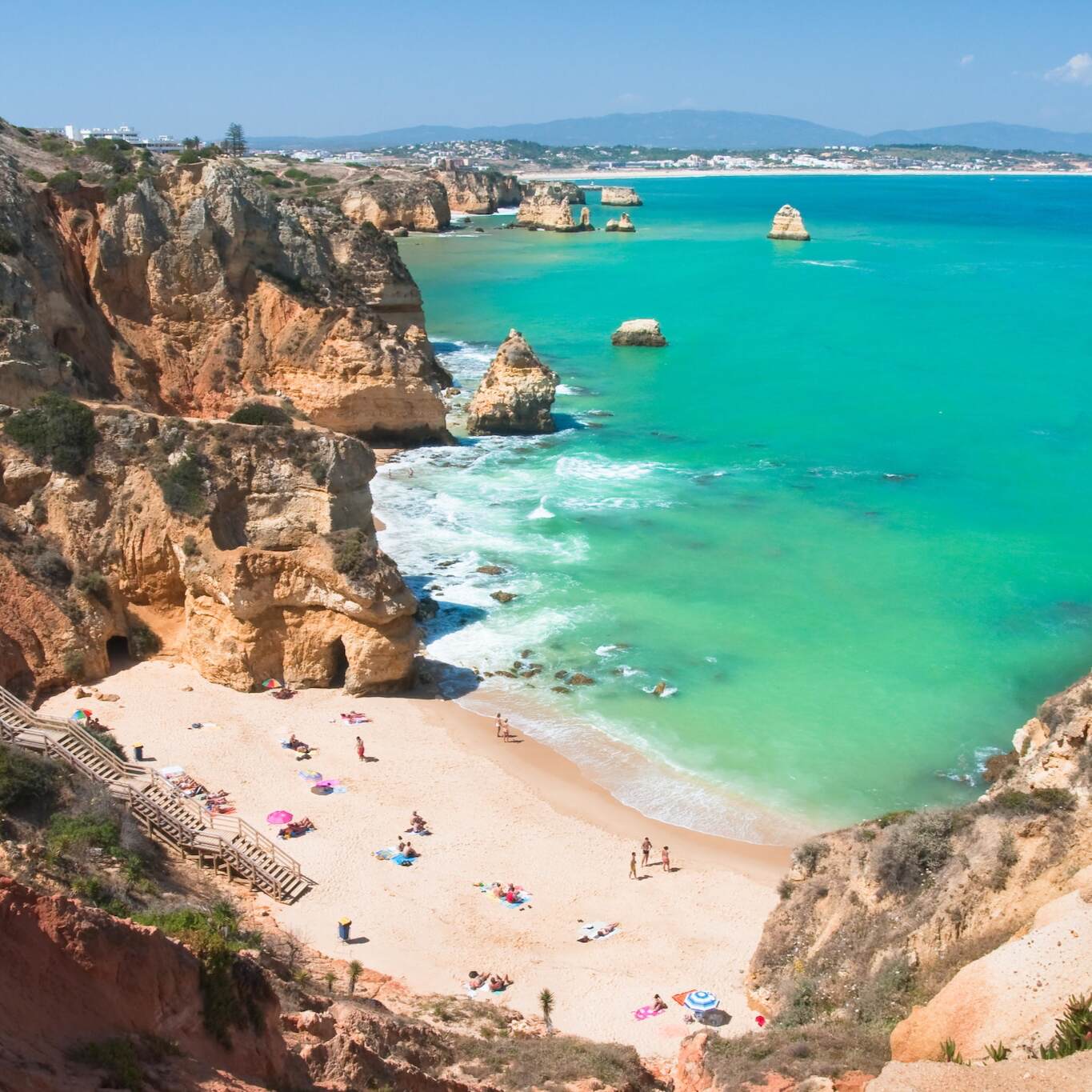
Our favourite off-season routes
Chase the sun long after summer ends with these 7 train routes

All about seat reservations
Everything you need to know about booking your seats

Alternatives to Busy Routes
Travel between popular European cities without seat reservations

Through our Chatbot in the bottom right corner.

Ask the Community
Browse questions from fellow Interrail travellers, or ask your own!
- Rail Life Stories
- Travel Stories
The 15 best train rides to take this autumn
- Order overview
- Reservations overview
- My Trips & Travelers
- {{translatedTraveler}} {{#promotional}} {{currencySign}} {{standardPrice}} {{/promotional}} {{quantity}}x {{currencySign}} {{finalPrice}}
- Child {{childPasses}}x FREE
- {{translatedPassType}}
- {{translatedValidityPeriodDescription}}
- {{translatedClass}}
- Remove Pass(es)
- {{variant.localizedTravelPackDescription}} {{quantity}}x Free
- {{variant.localizedPassUpgradeDescription}} {{quantity}}x {{currency}} {{price}}
- Your order will arrive by {{expectedDeliveryDate}} 1 x {{currency}} {{price}}
Your cart is empty

Hugo van Vondelen
Product Specialist

Rachel Schnalzer
Senior Content Writer
26 September 2023
The beauty of autumn in Europe lies in the details. The sight of golden leaves from the seat of a train, the gentle chill in the air as you wander the stone passages of a medieval city, the warmth of a coffee mug in your hands as you sit outdoors at a cafe, watching the world go by.
This autumn, we asked Eurail Product Specialist and train travel expert Hugo van Vondelen to suggest his 15 favourite routes to take as the year winds to an end. Explore these routes (and beyond) for yourself with an Interrail Global Pass .

Cluj-Napoca to Maramureș
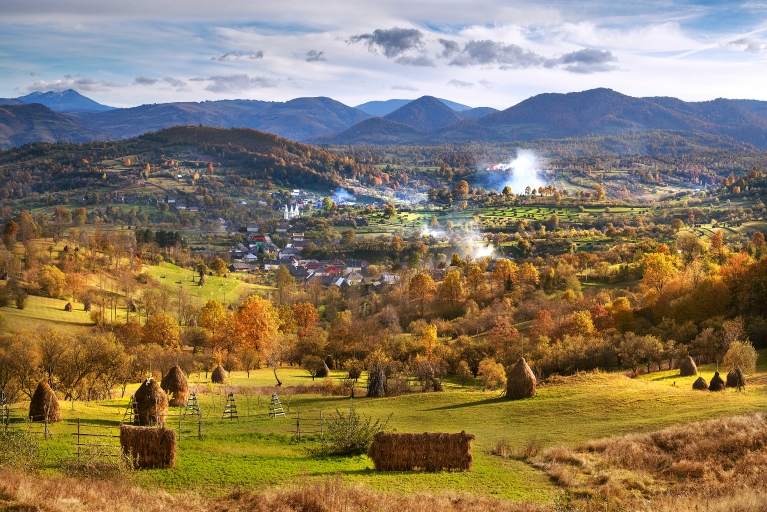
Autumnal beauty is everywhere you look in Maramureș, a Northern Romanian region beloved for its unique wooden churches. On a train ride through the countryside, you'll be treated to the sight of rolling green hills turning a preternatural shade of gold as summer fades.
To reach Maramureș, travellers can take a train from Cluj-Napoca, a city in Transylvania, to Baia Mare, a city in the Maramureș region. In addition to admiring the churches , famed for their soaring spires, keep an eye out for carved wooden gates, a sign of Maramureș’s rich history of craftsmanship.
Care to venture deeper into the region? Take a ride on the Mocanita , a narrow gauge steam train that departs from Vișeu de Sus on a scenic journey into the Carpathian forest.
Note: The Mocanita steam train is not included in the Pass.
The Low Tatras mountains

Whether you're craving a day of hiking in the forest or wandering through small villages, the Low Tatras mountains in Slovakia offer a dream come true for autumn travellers.
Begin in Banská Bystrica, a picturesque city in central Slovakia. After exploring the city’s castle and old town, take the train north to Vrútky or east until Margecany to continue your mountain adventure.
Along the way to Margecany is Telgárt Penzion, a train station popular among hikers looking for cosy accomodations. To reach the station, the railway line crosses several viaducts and tunnels, making a dramatic loop across the landscape.
Prešov to Bardejov

Bardejov, one of Slovakia's oldest and most beautiful towns, offers travellers a captivating walk through history. The Bardejov Town Conservation Reserve is home to a large market square dating to the 13th to 14th centuries, a Renaissance town hall, a synagogue from the 1700s, and beyond.
Travellers can reach Bardejov by train from Prešov, the third largest city in Slovakia, situated near the High Tatras mountains. While in town, take time to stroll by the Co-Cathedral of St. Nicholas, Neptune Fountain and Regional Museum – housed in the impressive Rákoczi's Palace in the town centre.
Paris to Barcelona, via the Pyrenees
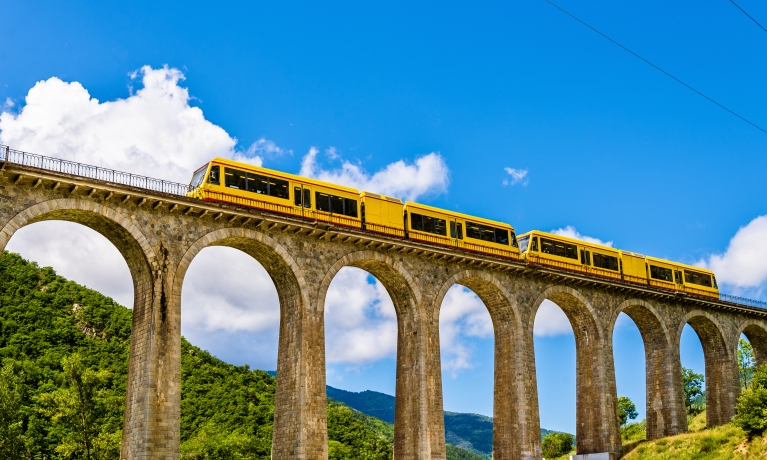
Travelling from Paris to Barcelona this autumn? A low-key alternative to the ultra-popular TGV route involves a night train, a charming town, and an unforgettable ride through the Pyrenees.
Beginning in Paris, take a night train south to Latour-de-Carol. As you wake up, you’ll see the Pyrenees passing by before you arrive in Latour-de-Carol, a small French village on the border with Spain.
Instead of switching trains and immediately continuing south to Barcelona, spend a day riding the Yellow Train , named for its iconic canary hue. The 60-kilometre journey between Latour-de-Carol and Villefranche-de-Conflent takes travellers through nineteen tunnels, connecting 22 stations in the Catalan Pyrenees.
Lake Bled through the Soča Valley
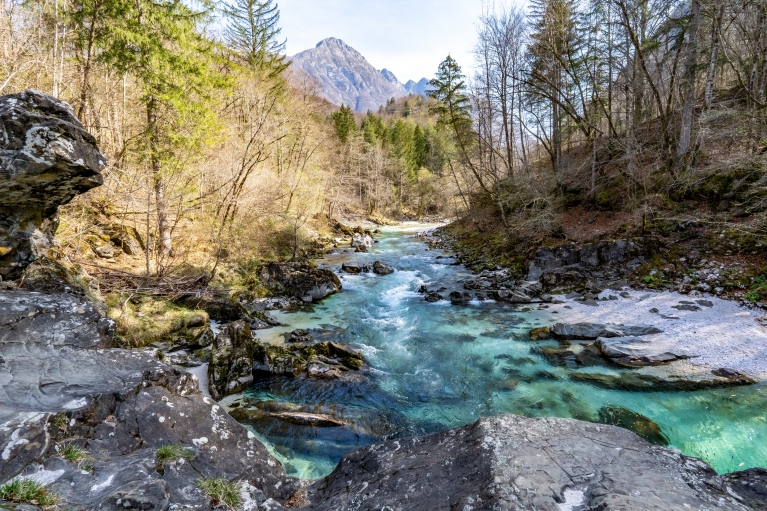
Dense forests, rugged mountains, glacial lakes and a stunning river valley – you’ll experience all of this and more on a train journey across western Slovenia.
From the town of Jesenice near the Austrian border, travel to Lake Bled and Lake Bohinj, each an ideal starting point for hikes in the Triglav National Park area. The largest protected area in Slovenia, Triglav National Park encompasses a wide swath of the Julian Alps.
From Lake Bohinj, venture into the Soča Valley, following a vividly green river past waterfalls, gorges, and canyons. Finish your journey at Nova Gorica, a town near the Italian border known for its extensive outdoor adventure opportunities, including paragliding, cycling, climbing, and beyond.
Munich to Leipzig and Jena
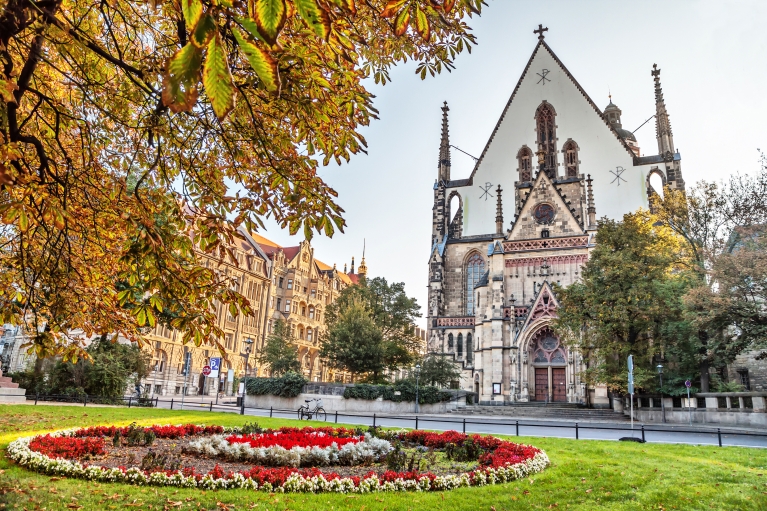
Travelling to Germany this autumn? We recommend adding Leipzig and Jena, two cities located between Munich and Berlin, to your itinerary.
Begin exploring Leipzig’s creative scene with a visit to the Spinnerei Art Centre , a former cotton spinning mill that is now home to 100 artists' studios. The city's “Music Trail” offers a unique journey across the city, taking travellers to sites such as the Leipzig Opera and St. Thomas Church, the resting place of Johann Sebastian Bach.
While in Jena, dive into the university city's scientific heritage with a visit to the Zeiss Planetarium . Travellers can also rent a bike and explore part of the Saale Cycle Route , a path that winds more than 400 kilometres through Bavaria, Thuringia, and Saxony-Anhalt.
Timișoara to the Danube gorges
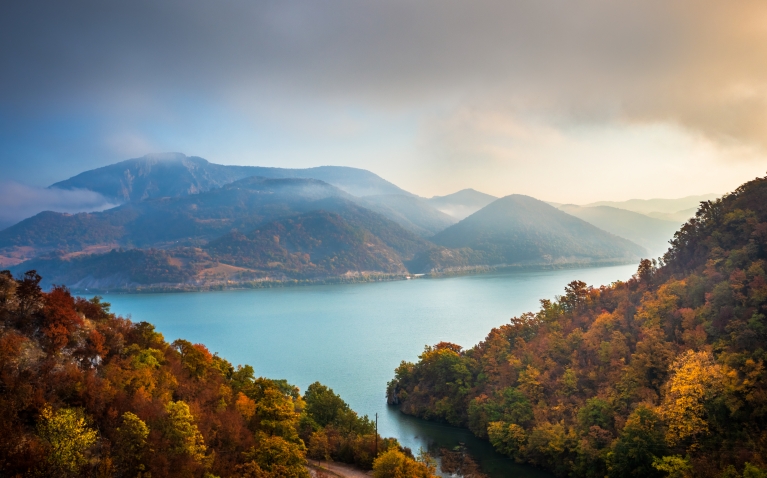
Ready to experience some jaw-dropping views? Simply hop on a train bound for the Djerdap Gorge and its awe-inspiring surrounding areas. The dramatic landscape, which sits near the border of Serbia and Romania, is part of the UNESCO-recognised Djerdap Geopark , a paradise for outdoor adventurers.
Start your adventure in Timișoara, a city in western Romania known for its colourful squares and blend of art-nouveau, neoclassical, and baroque architecture. Next, travel south to Drobeta-Turnu Severin or Orșova, two cities on the Danube. From this area, travellers can embark on a river excursion or a long hike through vast natural expanses.
Copenhagen to Gilleleje
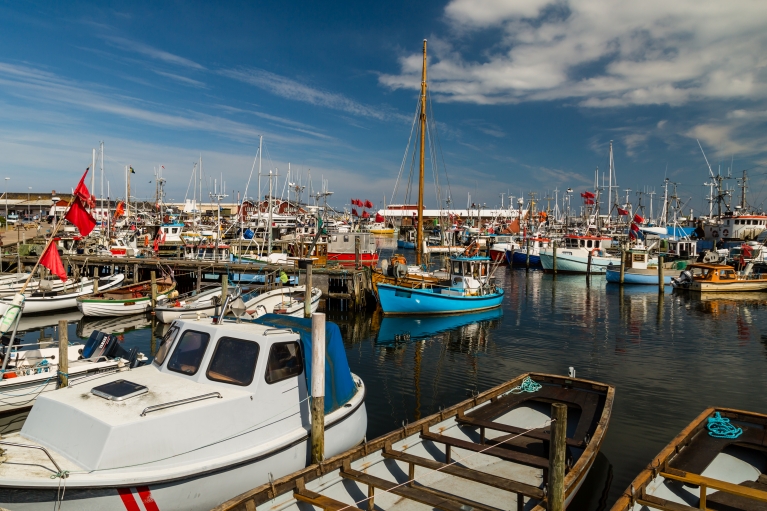
Experience autumn in Scandinavia by using Denmark’s Lokaltog train lines, recently included as part of the Interrail Pass network. From Copenhagen, travel north to Hillerød, a holiday hotspot for Danish royals for over four centuries. Travellers will enjoy admiring the changing leaves in Gribskov , one of the largest forests in Denmark, and marvelling at Frederiksborg Castle , the largest Renaissance castle in the Nordics.
Swap architectural beauty for coastal splendour by travelling further north to the fishing town of Gilleleje. After exploring Gilleleje's harbour, continue your waterside adventure by taking a ferry from Hundested Havn to Rørvig, a quiet village where travellers can sample fresh seafood and walk the coastline.
Note: The ferry from Hundested Havn to Rørvig is not included as part of the Interrail Pass.
Bilbao to Galicia
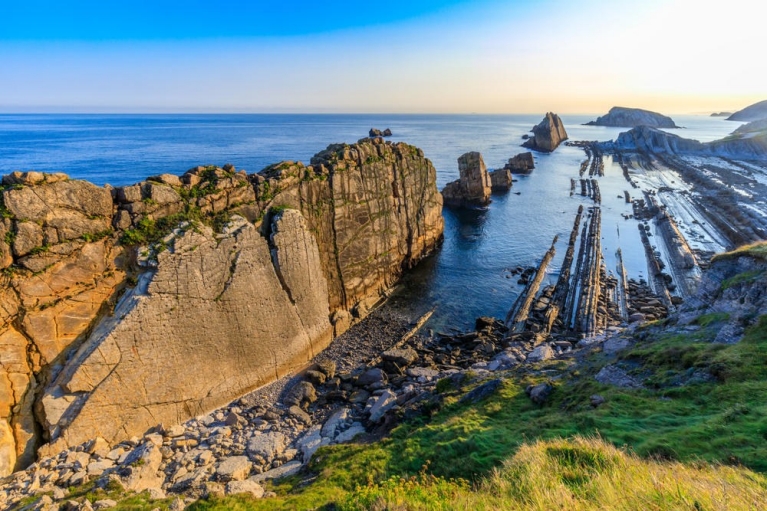
The coastal views continue on a rail journey taking Spains’ FEVE trains along the Bay of Biscay. Beginning in Bilbao, first, take in the art and architectural wonder of the Guggenheim Museum Bilbao and further explore Basque Country on a visit to the Urdaibai Bird Center , located just outside Guernica. Each autumn, millions of birds stop in Basque wetlands on their migratory journeys.
From Bilbao, travel west by train across the regions of Cantabria and Asturias, known for their lush mountains and coastline. Finish your journey in Galicia, where the famed Camino de Santiago pilgrimage route ends at the Cathedral of Santiago de Compostela . Galicia, a region rich in beaches, woodlands, and hiking paths, is sure to delight any outdoor adventurer.
Riga to Valka-Valga
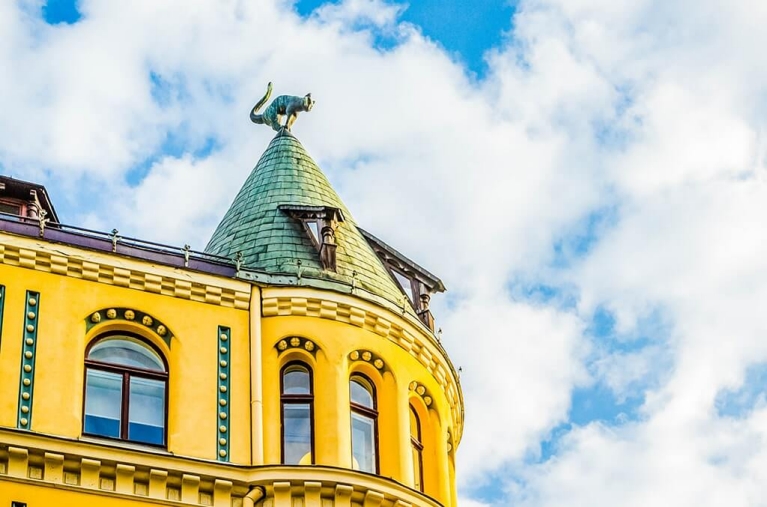
Halloween is fast approaching. One way to get into the holiday spirit while travelling? Visit Riga and stroll through the city's picturesque old town in search of the city's famous “Cat House.” Word has it that the feline-forward building was constructed by an angry trader who was denied entry to the Great Guild and added the wrought-copper cats to his building — tails facing the Great Guild building — to demonstrate his frustration.
The autumn views continue on a train ride from Riga northeast to Sigulda, home to a number of castles and a convenient entry point to Gauja National Park , the largest national park in Latvia. After hiking amid the golden leaves, take time to explore Cēsis, another town adjacent to the park, known for its castle complex . End your train journey in Valga-Valka, a “twin town” situated at the border of Latvia and Estonia.
Clermont Ferrand to Nîmes
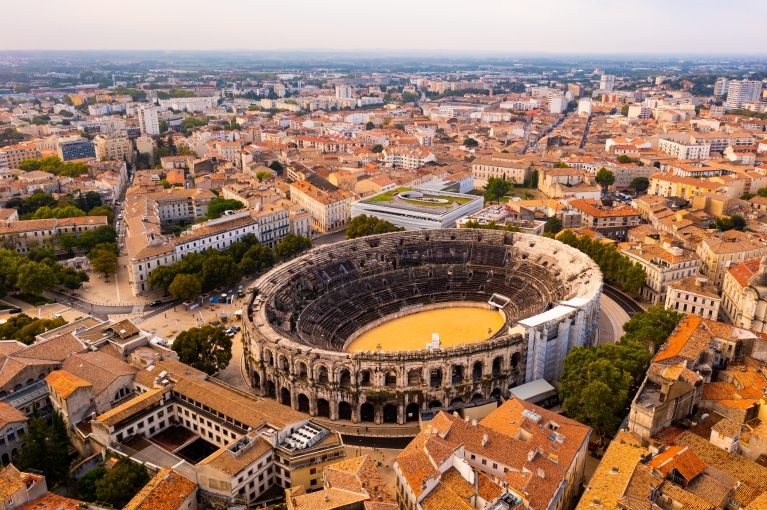
Slow down and enjoy the charms of southern France on a classic train route through the heart of the country. Overlooked by many travellers in favour of high-speed trains, the local rail line from Clermont Ferrand to Nîmes takes travellers into the stunning Cevennes mountain range.
Begin in Clermont Ferrand, an old university town. After sightseeing across the city – which happens to host the headquarters of Michelin – travellers can explore the range of volcanoes located to the west of Clermont Ferrand. From Clermont Ferrand, travel south to Nîmes, stopping in any small town in the Cevennes that appeals to you along the way; history fans will especially enjoy wandering the streets of Génolhac, a medieval village with roots that date back to the 11th century.
Once in the area of Nîmes, dive further back into history with a visit to the city’s Amphitheatre , Pont du Gard aqueduct , and Maison Carrée , all reminders of the region’s Roman past.
Sofia to Vidin
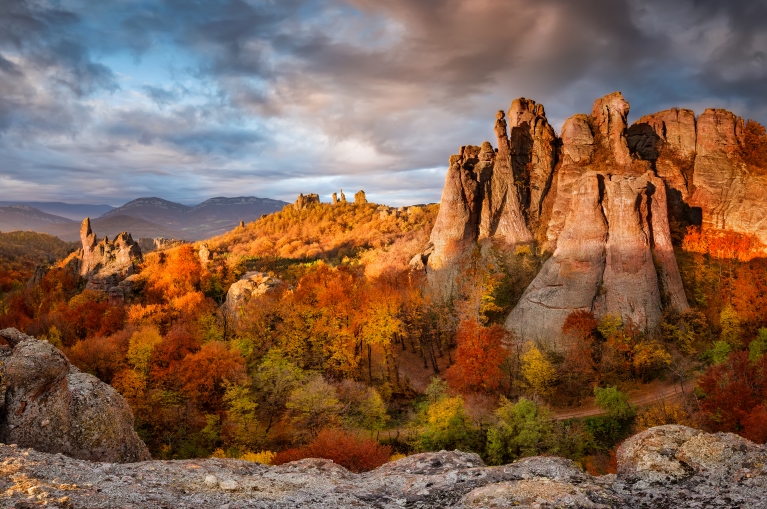
Nature lovers will find autumn leaves and geologic wonders in Vidin and Montana, two regions in northwest Bulgaria.
From Sofia, take a train through the Iskar Gorge, passing by woodlands and rocky crags above a rushing river. A visit to the Belogradchik Rocks , nearby the Oreshets train station, is a must – the otherworldly, ancient rock formations, some of which reach dozens of metres into the sky, have entranced visitors and locals since time immemorial.
Magura Cave , which began to form 15 million years ago, is another natural highlight in the area. Visitors to the 2,500-metre-long cave have the opportunity to marvel at a rich collection of stalactites, stalagmites and other geologic phenomena. After your cave excursion, rest up on a visit to Vidin, a quiet city on the Danube.
Regensburg to Cheb
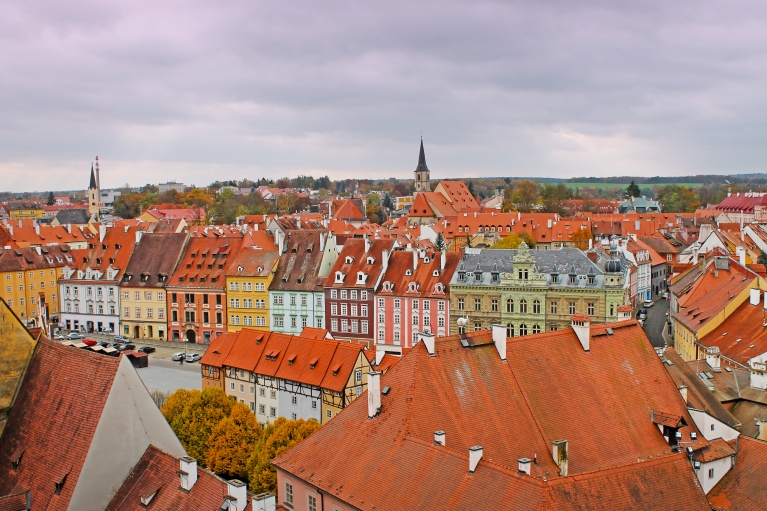
Travellers often pass through picturesque Cheb on their way in and out of the Czech Republic. But this autumn, we recommend travelling by regional rail and stopping for a few days to enjoy the West Bohemian city's history and beauty.
Begin in Regensburg, a Bavarian city located on the Danube River, and stroll the narrow lanes of its old town , recognised as a UNESCO World Heritage Site. Then, take the train north via Marktredwitz, passing through forested hills on your way to Cheb.
Once in town, explore Cheb’s iconic burgher houses and castle , and afterward, kick back and relax for a few hours on the banks of the Ohře River under Cheb Castle. From Cheb, take a scenic train northeast to Ústí nad Labem, or spend time hiking in the hills and forests that line the Czech Republic’s border with Germany to the north.
Rhodope Narrow Gauge railway
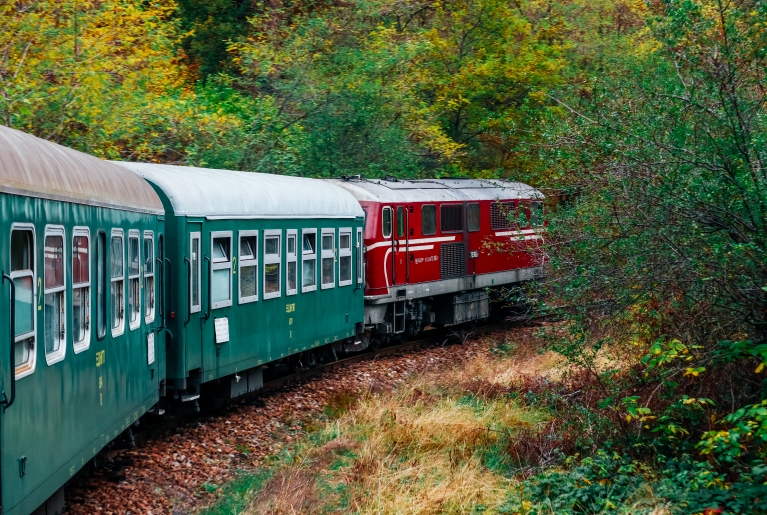
The Rhodope Narrow Gauge Railway’s Septemvri-Dobrinishte line is a hiker’s dream come true. The rail line links some of Bulgaria’s most impressive mountain ranges, allowing outdoor adventurers to get out and explore nature at stops along the journey.
Start your journey in Sofia and travel two hours by train southeast to the town of Septemvri. Once you begin the awe-inspiring ride to Dobrinishte, you’ll have the opportunity to stop and enjoy highlights along the way , such as the Tsepina fortress and Velingrad , a beloved spa destination.
Côte d’Azur through the Maritime Alps
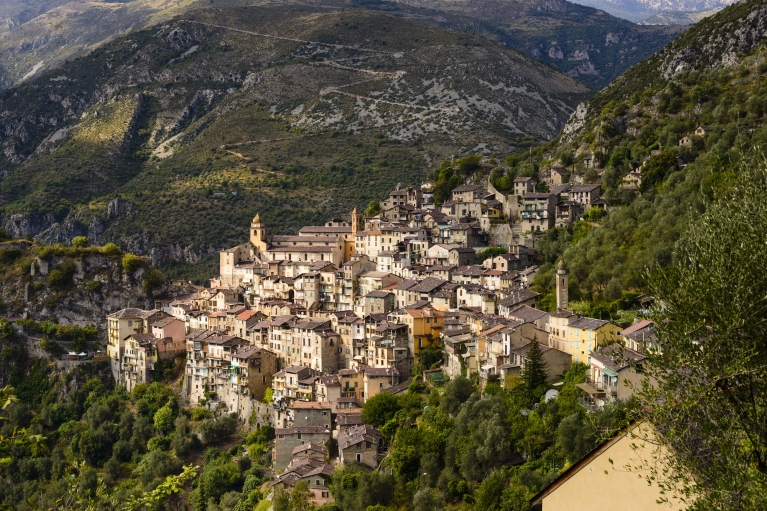
Are you equally inspired by the mountains and the coastline? On this train ride from the Côte d’Azur into the Maritime Alps, you’ll experience the best of both land and sea.
Beginning in Nice, travel north on the Train des Merveilles into the mountains. As you approach Italy, soak in the dramatic scenery with a stop or two along the train line. Saorge, known for its baroque monastery and vaulted passageways, and La Brigue, home to the Notre-Dame des Fontaines (called “The Sistine Chapel of the Alpes Maritimes”) are each well worth a visit.
End your journey in Cuneo, a small Italian city in the shadow of the Alps. Spend a few hours strolling Cuneo's historic centre and relax at one of the cafes off the Piazza Galimberti, in the heart of the city.
Sukriti Kapoor, Content Writer, contributed to this story.
Feeling inspired? With Interrail, you can:
Stay up to date with interrail.
Sign up for our newsletter and receive exclusive discounts, inspirational travel content, and the chance to win 2x Interrail Passes
Change of currency
You cannot change the currency once you have a Pass in your cart. Remove the Pass, and then change the currency on the website header.
Stay up to date with notifications from The Independent
Notifications can be managed in browser preferences.
UK Edition Change
- UK Politics
- News Videos
- Paris 2024 Olympics
- Rugby Union
- Sport Videos
- John Rentoul
- Mary Dejevsky
- Andrew Grice
- Sean O’Grady
- Photography
- Theatre & Dance
- Culture Videos
- Fitness & Wellbeing
- Food & Drink
- Health & Families
- Royal Family
- Electric Vehicles
- Car Insurance Deals
- Lifestyle Videos
- Hotel Reviews
- News & Advice
- Simon Calder
- Australia & New Zealand
- South America
- C. America & Caribbean
- Middle East
- Politics Explained
- News Analysis
- Today’s Edition
- Home & Garden
- Broadband deals
- Fashion & Beauty
- Travel & Outdoors
- Sports & Fitness
- Climate 100
- Sustainable Living
- Climate Videos
- Solar Panels
- Behind The Headlines
- On The Ground
- Decomplicated
- You Ask The Questions
- Binge Watch
- Travel Smart
- Watch on your TV
- Crosswords & Puzzles
- Most Commented
- Newsletters
- Ask Me Anything
- Virtual Events
- Wine Offers
- Betting Sites
Thank you for registering
Please refresh the page or navigate to another page on the site to be automatically logged in Please refresh your browser to be logged in
The Independent's journalism is supported by our readers. When you purchase through links on our site, we may earn commission.
This destination beats Paris and Amsterdam as the best European city break by train
Which cities are the best to visit by train from the uk for a holiday on the continent, article bookmarked.
Find your bookmarks in your Independent Premium section, under my profile

Sign up to Simon Calder’s free travel email for expert advice and money-saving discounts
Get simon calder’s travel email, thanks for signing up to the simon calder’s travel email.
Bruges has been named as the best European city break to visit by train according to a new survey, beating out top cities easily visited by rail such as Paris and Amsterdam .
Results from a Which? survey of over 1,000 travellers carried out in February revealed that Bruges has come out on top as the best city break out of all other destinations reachable from London in seven hours or less.
The city breaks were given an overall score based on satisfaction and likeliness to recommend, and marks out of five stars were given for criteria such as food and drink, accommodation, cultural sights and attractions.
The Belgian city scored a surprising 85 per cent, while Paris only received 79 per cent and Amsterdam ended up with a score of 82 per cent.
A train to Bruges from London St Pancras only takes around three-and-a-half hours in total, and respondents noted that the city’s canals and medieval cobbled streets stood out to them while on their visit.
However, it was the city’s “magical” and “enchanting” atmosphere that set it apart from the other European destinations reached by train.

Known for its chocolate shops, cosy cafes and Belgian beer, Bruges scored four stars for its food and drink options, also gaining the same score for its cultural sights, attractions, accommodation, value for money and how easy it was to get around, with respondents saying the city was compact and easily walkable.
While the city is not so far away from London, its atmosphere could not feel more different. Tourists who are fans of medieval or Gothic architecture should visit the infamous Belfry bell tower or take a trip on a canal boat tour to learn more about the city’s history.
Placing second, with a score of 84 per cent is Bordeaux, beating out the French capital as the best place to visit in France by train.
Taking around six hours on the train from London, this city is renowned for its wine and scored a maximum of five stars for food and drink in the survey, with respondents saying Bordeaux has “superb restaurants” which “cater to all tastes and pockets.”

The city also received five stars for how easy it was to get around, with tourists noting that Bordeaux could easily navigate by foot or the efficiently run tram network.
Other notable mentions included the popular wine museum La Cité du Vin, where visitors can experience an interactive exhibition on the history of wine-making and indulge in wine-tasting sessions.
Third place went to two cities, Avignon in France and Amsterdam in the Netherlands, tying with scores of 82 per cent.
Amsterdam received five stars for its cultural sights and attractions, including the Rijksmuseum, which is home to some of the world’s most celebrated artwork, and the Anne Frank House.
Avignon was also awarded five stars for its cultural sights and attractions, notably for the Unesco World Heritage site Popes’ Palace, which was described as an “essential visit” by respondents to the survey.
The city that scored the lowest was Geneva, Switzerland , landing itself at the bottom of the table with a score of 60 per cent.

The Swiss city, around six hours from London by rail, was awarded four stars for ease of getting around but received only one star for value for money due to its reputation for being a very expensive destination.
Rory Boland, editor of Which? Travel noted that train journeys can be more convenient than flying to some of the top European city break hotspots.“You can reach some of Europe’s most spectacular cities by train from the UK in about the same time it would take to fly, and often for less money too,” he said.
“It’s easy to discount Eurostar if you don’t live in London, but with cities as far afield as Birmingham, Cardiff and Portsmouth only two hours from the capital, the train can still be quicker than the plane to many European destinations – it’s certainly more enjoyable and far better for the environment.”
For more travel news and advice, listen to Simon Calder’s podcast
Join our commenting forum
Join thought-provoking conversations, follow other Independent readers and see their replies
Subscribe to Independent Premium to bookmark this article
Want to bookmark your favourite articles and stories to read or reference later? Start your Independent Premium subscription today.
New to The Independent?
Or if you would prefer:
Hi {{indy.fullName}}
- My Independent Premium
- Account details
- Help centre

Get our Rail Planner app
Plan your trip, get extra discounts, and show your Pass as you go.

Our favorite offseason routes
Chase the sun long after summer ends with these 7 train routes

All about seat reservations
Everything you need to know about booking your seats

Alternatives to Busy Routes
Travel between popular European cities without seat reservations

Through our Chatbot in the bottom right corner.

Ask the Community
Browse questions from fellow Eurail travellers, or ask your own!
- Plan your trip
- European Railway Map
- Order overview
- Reservations overview
- My Trips & Travelers
- {{translatedTraveler}} {{#promotional}} {{currencySign}} {{standardPrice}} {{/promotional}} {{quantity}}x {{currencySign}} {{finalPrice}}
- Child {{childPasses}}x FREE
- {{translatedPassType}}
- {{translatedValidityPeriodDescription}}
- {{translatedClass}}
- Remove Pass(es)
- {{variant.localizedTravelPackDescription}} {{quantity}}x Free
- {{variant.localizedPassUpgradeDescription}} {{quantity}}x {{currency}} {{price}}
- Your order will arrive by {{expectedDeliveryDate}} 1 x {{currency}} {{price}}
Your cart is empty
Eurail railway map
Plan your Eurail trip with our two-page map, showing the rail routes covered by your Pass and which routes require reservations.
Please note that routes may change during the year and this map doesn’t show temporary disruptions. Visit the rail disruptions webpage for updates.
(Map last updated on Sep 3 2024.)
Don't know where to start? Use our Trip Planner to find the best Eurail Pass for you!
Traveling with a eurail pass.
With a Eurail Pass you can travel in all countries on the Europe rail map above, now including Great Britain. Please note that most high-speed trains and all night trains need an advance reservation . These are not included in your Eurail Pass. We can help you book your seat reservations for 95% of the trains in Europe.
Travel times for 10 most popular routes
Check out the travel times between Europe's most popular cities. If you'd like to know more about a specific route, just visit our Popular Routes section .
Feel free to also play around with the Europe travel map above to see where else you could go with your Eurail Pass!
European itinerary inspiration
The Eurail railway map is a great resource for planning the perfect itinerary. Check out some examples of spectacular European itineraries you can experience with a Eurail Pass.
Follow one or more of our itineraries, or use parts of them to create your own. Planning your trip is half the fun, and with these itineraries, you get to see the very best of Europe!
Choose the right Pass
Not sure which Eurail Pass meets your travel desires?
Not to worry! Our Trip Planner will help you find the perfect Pass for your trip!
Change of currency
You cannot change the currency once you have a Pass in your cart. Remove the Pass, and then change the currency on the website header.
- My Quiz Activity
- Newsletters
- Sports Betting
- MY FAVORITES
- Add Sports/Teams
- Arizona Cardinals
- Atlanta Falcons
- Baltimore Ravens
- Buffalo Bills
- Carolina Panthers
- Chicago Bears
- Cincinnati Bengals
- Cleveland Browns
- Dallas Cowboys
- Denver Broncos
- Detroit Lions
- Green Bay Packers
- Houston Texans
- Indianapolis Colts
- Jacksonville Jaguars
- Kansas City Chiefs
- Las Vegas Raiders
- Los Angeles Chargers
- Los Angeles Rams
- Miami Dolphins
- Minnesota Vikings
- New England Patriots
- New Orleans Saints
- New York Jets
- New York Giants
- Philadelphia Eagles
- Pittsburgh Steelers
- San Francisco 49ers
- Seattle Seahawks
- Tampa Bay Buccaneers
- Tennessee Titans
- Washington Commanders
- Arizona Diamondbacks
- Atlanta Braves
- Baltimore Orioles
- Boston Red Sox
- Chicago White Sox
- Chicago Cubs
- Cincinnati Reds
- Cleveland Guardians
- Colorado Rockies
- Detroit Tigers
- Houston Astros
- Kansas City Royals
- Los Angeles Angels
- Los Angeles Dodgers
- Miami Marlins
- Milwaukee Brewers
- Minnesota Twins
- New York Yankees
- New York Mets
- Oakland Athletics
- Philadelphia Phillies
- Pittsburgh Pirates
- San Diego Padres
- San Francisco Giants
- Seattle Mariners
- St. Louis Cardinals
- Tampa Bay Rays
- Texas Rangers
- Toronto Blue Jays
- Washington Nationals
- Atlanta Hawks
- Boston Celtics
- Brooklyn Nets
- Charlotte Hornets
- Chicago Bulls
- Cleveland Cavaliers
- Dallas Mavericks
- Denver Nuggets
- Detroit Pistons
- Golden State Warriors
- Houston Rockets
- Indiana Pacers
- Los Angeles Clippers
- Los Angeles Lakers
- Memphis Grizzlies
- Milwaukee Bucks
- Minnesota Timberwolves
- New Orleans Pelicans
- New York Knicks
- Oklahoma City Thunder
- Orlando Magic
- Philadelphia 76ers
- Phoenix Suns
- Portland Trail Blazers
- Sacramento Kings
- San Antonio Spurs
- Toronto Raptors
- Washington Wizards
- Anaheim Ducks
- Boston Bruins
- Buffalo Sabres
- Calgary Flames
- Carolina Hurricanes
- Chicago Blackhawks
- Colorado Avalanche
- Columbus Blue Jackets
- Dallas Stars
- Detroit Red Wings
- Edmonton Oilers
- Florida Panthers
- Los Angeles Kings
- Minnesota Wild
- Montreal Canadiens
- Nashville Predators
- New Jersey Devils
- New York Islanders
- New York Rangers
- Ottawa Senators
- Philadelphia Flyers
- Pittsburgh Penguins
- San Jose Sharks
- Seattle Kraken
- St. Louis Blues
- Tampa Bay Lightning
- Toronto Maple Leafs
- Utah Hockey Club
- Vancouver Canucks
- Vegas Golden Knights
- Washington Capitals
- Winnipeg Jets
- Entertainment Home
- Lifestyle Home
- More Sports
- YB on Facebook
- YB on Twitter
- YB on Flipboard
- Privacy Policy
- Terms of Service
- College Basketball
- College Football
- Entertainment
- Formula One
- Horse Racing
- Motor Sports
- Premier League
- Sports Business
- Track and Field
- More Sports ▸
Lifestyle News
15 scenic train rides across Europe
For tourists, Europe is synonymous with train travel, and there is truly no better way to explore the continent. All the options make it difficult to choose one — or two, or even a few — for your transatlantic adventure. That’s why we’ve rounded up 15 of the most scenic train rides across the region!
Munich, Germany to Salzburg, Austria
Bavaria is known as the most beautiful region in Germany and Austria, and if you spend even just a few minutes there, it’s easy to see why. This part of Europe is a true fairytale, with snowy mountain peaks, charming alpine cabins, and rushing rivers. And while road trips here are fun, the train ride between the two major cities, Munich and Salzburg, lasts about two hours and provides some of the best views of the Bavarian Alps and surrounding villages.
Sarajevo to Mostar, Bosnia & Herzegovina
The Balkans aren’t known to have an amazing rail system. However, one train ride that is a must on any visit to the area is the two-hour journey between Sarajevo and Mostar in Bosnia & Herzegovina. Travel through the Dinaric Alps and catch sights of elevated bridges, waterfalls, and peaks that would otherwise be hard to reach.
Oslo to Bergen, Norway
This seven-hour journey is a full day of travel, but not one that you should dread, thanks to the spectacular scenery through the heart of Norway! You’ll enjoy glimpses of fjords, rivers, and the lovely Norwegian countryside. The Oslo to Bergen route is at its best in winter when Norway is blanketed with snow. It’s also much less nerve-wracking than driving this route in cold weather conditions.
Athens to Meteora, Greece
When you picture Greece, sandy island beaches and vibrantly blue water probably come to mind. But that’s not all there is to the country. It has epic mountains as well. The four-hour ride (but budget longer, Greek trains are notoriously slow and late) from Athens to Meteora takes you through the heart of the peaks and ends in the perfect spot for a walking adventure. You can hike from the main towns of Kalambak or Kastraki to the various monasteries that dot the mountains.
Luxembourg, Luxembourg to Cologne, Germany
No, the tiny country of Luxembourg isn’t part of Germany, but it is right next door and ideally located for terrific train rides across Europe. The one from the capital city, also called Luxembourg, to Cologne takes approximately three and a half hours and usually requires a change in Koblenz. But it will take you along the Moselle River, dotted with vineyards, castles, and adorable towns that make the ride fly by.
Glasgow to Mallaig, Scotland
The West Highland Line is the most picturesque in all of the United Kingdom. You’ll follow the Clyde River into the country and through Trossachs National Park and Rannoch Moor. The five-and-a-half-hour journey is perfect for those looking to see a bit of Scotland in a short amount of time.
Kristinehamn to Gällivare, Sweden
The most fantastic train ride in all of Sweden (and that’s saying something in this country) is this just-over 800-mile journey through the interior. The summer-only route operates between mid-June and late August annually. You’ll see the verdant forests of Sweden and the breathtaking backcountry dotted with wildflowers.
Jesenice, Slovenia to Trieste, Italy
The Bohinj Nostalgia Train is a three-and-a-half to four-hour ride through some of the prettiest parts of Slovenia. Visit the breathtaking Vintgar Gorge and the imposing Julian Alps before crossing into Italy. It’s the perfect way to see the area without a car!
Zermatt to St. Moritz, Switzerland’s Glacier Express
Switzerland is known for top-notch public transportation, which is efficient and charming. It is not cheap, but the smooth ride and out-of-this-world window views are absolutely worth it. The all-day, eight-hour Glacier Express will take you through the heart of Europe’s most famous Alps, the Rhine Gorge, and multiple tunnels.
French Riviera Regional Line
The Cote d’Azur was legendary long before Emily in Paris visited the coast. And while cruising around in a convertible might be stylish, it’s not exactly realistic for most visitors. Plus, one of the best ways to see the South of France is by a regional RER train. Sure, it’s not the super quick TGV, but that just means you’ll see more of the lovely area. There are multiple lines, and most tickets can be bought on the day of travel.
Lucerne to Interlaken, Switzerland
This isn’t a standard commuter rail between two domestic cities; it’s an experience. The two-hour ride will take passengers through the lovely Swiss countryside. Before departing, you’ll see alpine blue lakes, cascading waterfalls, and quaint mountain villages.
Dublin to Galway, Ireland
Ireland is a delightful country, full of rolling green hills and a stunning coastline. Most visitors opt to rent a car, but if you’re not keen to drive or want to enjoy the sites without worrying about traffic, the train is a great option. The route between Dublin and Galway takes passengers through the heart of Ireland, perfect for a scenic ride!
French Alps Regional Line
Like its neighbor down south, the regional RER line through the French Alps is one of the best ways to see the mountains and villages. Relax in style and enjoy snowy peaks with a cup of hot chocolate aboard one of the many daily trains between alpine towns and cities.
The Orient Express, London, England to Venice, Italy
The original route might have gone from Paris to Istanbul (and the French rail operator is working on getting this route ready for the 2024 Olympics), but now you can travel from the British Isles to Italy. In 2023, La Dolce Vita began running and provides luxury train travel in carriages reminiscent of another time. You’ll also enjoy superb Italian dining on this two-day overnight journey!
Levanto to La Spezia, Italy
Cinque Terre is one of the most magical destinations in Italy, but it can be a bit tricky to get around. But the train from Levanto to La Spezia, which lasts just under an hour, is the perfect solution. You’ll catch epic coastline views and candy-colored houses in the hills of the villages.
Sydney is a travel and lifestyle writer originally from Seattle. She’s also lived in Australia, Quebec, Luxembourg, and France and has visited 26 countries and counting. You can find her work in numerous publications such as Fodor's Travel, Good Housekeeping, Matador Network, Travel + Leisure, and more. In addition to being fluent in English and French, she has attempted (and failed) to learn German and would like to improve her limited Spanish next. You can find her on Twitter/X @sydbakestravels , on Instagram @sydbakescreates , or at sydbakestravels.com .
More must-reads:
- Jannik Sinner cleared of doping charges, WADA won't appeal
- 49ers’ Jordan Mason unhappy with media after his postgame quote sparked controversy
- The 'Most passing TD's in a single season' quiz
Breaking News
Customize your newsletter.

Get the latest news and rumors, customized to your favorite sports and teams. Emailed daily. Always free!


IMAGES
VIDEO
COMMENTS
Follow your curiosity around up to 33 countries, traveling at your own pace by train. Find your pass. Tour Europe by train. with 1 Pass. Create the itinerary. for your perfect trip. Travel flexibly on trains. that don't need reservations. Stay conscious.
Learn everything you need to know about train travel in Europe, from the pros and cons to the different kinds of tickets and routes. This guide covers how to buy, receive, and use your train tickets, as well as useful tips for your trip.
Explore by Travel Type: Escorted tours guided by a tour manager, River Cruises on their own or paired with a scenic rail tour, and Independent itineraries to explore at your own pace. Excellent 3,918 reviews on. Order brochure. Sign up to newsletter. Call to Book: 1-877-929-7245.
Find the right Europe Train & Rail tour for you with TourRadar. Choose from 140 trips with 967 customer reviews. ... Ride a gondola through Venice's canals; Duration : 11 days : Destinations: Hungary, ... More about Europe. Train & Rail Best Train Travel Companies Best 3 Weeks Europe Itineraries 2024/2025 ...
√ 10 day Europe by Train Itinerary. Route: Lisbon, Porto, and the Douro Valley. Duration: 7-10 days. Created by: Pafoua of Her Wanderful World. One of the best places for train travel in Europe is the country of Portugal. With its unique scenery and rich culture, Portugal is an excellent destination for a week-long train journey.
There's no better way to slow travel through Europe than by train. Here are 20 itinerary ideas for 10 days in Europe by rail - with options for every travel style, budget and season. ... Finish with a scenic train trip through Luxembourg to the French city of Metz (4 hrs), where a special gastronomic market awaits.
You Arrive/Depart From The City Center. Unlike airports, European train stations are located in the center of town—which saves you time and money. In contrast, traveling from the airport to the city can take anywhere from 20-60 minutes and costs between $10-$80. No Long Check-In and Security Lines.
The best European train trips include the fabulous Bernina Express, the most enchanting Swiss Alpine ride of all, and the spectacular railway from Belgrade to Bar through the mountains of Montenegro. The latter is one of the most scenic train rides you've probably never heard of, with a bargain fare of just €21.
Embark on a journey through Europe by train with Railbookers and experience the scenic beauty of the continent. Explore historic cities, picturesque towns, and stunning landscapes. Book now for an unforgettable adventure. ... Travel through stunning fjords, rugged coastlines, Viking treasures, and the majestic Northern Lights, all while ...
Our free app makes it easy to plan and book everything you need for your trip around Europe. Map. Plan the best route across Europe and see your eurotrip come to life. Itinerary. See your day-by-day trip itinerary, so you know when you'll be in each European city. ... View durations for each rail journey on your route through Europe. Share ...
European Highlights Itinerary. Experience Europe's most famous sites by train with the Eurail Global Pass. Breathe in the romance of Paris from the top of the Eiffel Tower and be amazed by Gaudí's masterpiece, the Sagrada Familia church in Barcelona. Discover Venice by gondola and stand within the walls of Rome's ancient Colosseum.
The Musee d'Orsay in Paris. Then take the train on to Chur (5.5 hours) and spend the evening in Switzerland's oldest city. Catch the Bernina Express the following morning - one of the most scenic train rides in Europe. This four-hour rail journey runs through the stunning scenery of the Swiss Alps, across bridges and viaducts past Alpine meadows and traditional mountain villages.
Advertising. 9. Myrdal to Flåm, Norway. Photograph: Shutterstock. Another frequent face on lists of the world's best train journeys, the line between Myrdal and Flåm in Norway bridges the ...
Travel Europe by train for a comfortable and engaging experience. Start by checking train times and fares online. Use the Eurail Pass for flexible access to. ... To effectively plan your train trip through Europe, focus on organizing your itinerary, researching train systems, booking tickets in advance, and considering travel passes. ...
Discover the beauty and rich history of Europe at your own pace with one of over 50 independent tours that travel through countries in both Eastern and Western Europe. Call to book: 1-877-929-7245; ... (and already thinking about my next trip with Vacations by Rail); customer service was excellent and materials provided were helpful, especially ...
Follow your curiosity around up to 33 countries, travelling at your own pace by train. Find your Pass. Tour Europe by train. with 1 Pass. Create the itinerary. for your perfect trip. Travel flexibly on trains. that don't need reservations. Stay conscious.
Highlights of Europe featuring London, Paris, Switzerland & Italy. (11 reviews) 2024 Oct. 2025 May Jun Sep. 13 days from. $5,240 pp. View Details. Most Popular. Save Up to $500.
Plan your Europe trip with our ultimate trip planner and guide. Get inspired, find the right Eurail Pass, and have the time of your life! ... planning your own route through up to 33 European countries. Austria. Belgium. Bosnia and Herzegovina. Bulgaria. ... The ultimate Eurail trip planner! Look up train times and plan your route with just one ...
The cost of a Eurail pass varies widely depending on the type of pass you purchase. For example, a Global Pass with five travel days in one month is usually between $319 and $425, while a 15-day ...
Discover the diverse wonders of Europe with Great Rail Journeys. From the exotic charm of Istanbul to the breathtaking glaciers of Arctic Norway, our escorted train holidays offer unforgettable experiences in some of the world's most stunning locations. Explore a wide range of tours, including multi-centre adventures, short breaks, and rail cruises, and immerse yourself in the contrasting ...
Trip suggestions from our travel experts. It's never too early to start planning your next big trip to Europe! Get your Eurail Pass now and start dreaming of all the destinations you want to tick off your list. Check out our suggested rail itineraries and start creating your own.
London, England to Venice, Italy. Best Places to Stay. The Orient Express, inaugurated in 1883 by Belgian entrepreneur Georges Nagelmackers, became the most famous train in the world. Over the decades, it's appeared in countless films, television shows and novels, exemplifying the romance, intrigue and mystery of long-distance, international ...
This Vintage Train Takes Riders on a Scenic, 26-mile Journey Through Georgia's Appalachian Foothills These Are the 6 Most-anticipated New Trains to Ride in 2024 The Fanciest Sleeper Car Trains ...
Whether it is a scenic train trip between destinations or a luxury journey across a country, here are the top 10 European rail trips every traveler should experience. 1. Belmond Royal Scotsman. A ride on one of the world's most luxurious trains, the Belmond Royal Scotsman, is truly like no other. Each car is clad in mahogany wood and exudes ...
The Rhodope Narrow Gauge Railway's Septemvri-Dobrinishte line is a hiker's dream come true. The rail line links some of Bulgaria's most impressive mountain ranges, allowing outdoor adventurers to get out and explore nature at stops along the journey. Start your journey in Sofia and travel two hours by train southeast to the town of Septemvri.
Travel noted that train journeys can be more convenient than flying to some of the top European city break hotspots."You can reach some of Europe's most spectacular cities by train from the UK ...
It's an interactive map, so start clicking around and planning your trip! Click on the train icons to see the cities of each country, and click on the routes (the lines in between 2 train icons) to see travel times. The green lines represent trains; the blue lines are ferries. Please note that routes may change throughout the year.
For tourists, Europe is synonymous with train travel, and there is truly no better way to explore the continent. All the options make it difficult to choose one — or two, or even a few — for ...
Making Spain even more enticing, a new high-speed train was just announced to hit the rails this winter, just in time to make use of your Christmas vacation days. Connecting 2 of Spain's most fascinating cities, with 5 stops total, get ready for the train adventure of a lifetime as you zoom through one of Europe's hottest destinations!
A new study from Which? has revealed the top European city breaks accessible to Brits by train, including destinations in Belgium, France, and Germany. By Ellen Jenne 11:58, Sat, Sep 14, 2024 ...